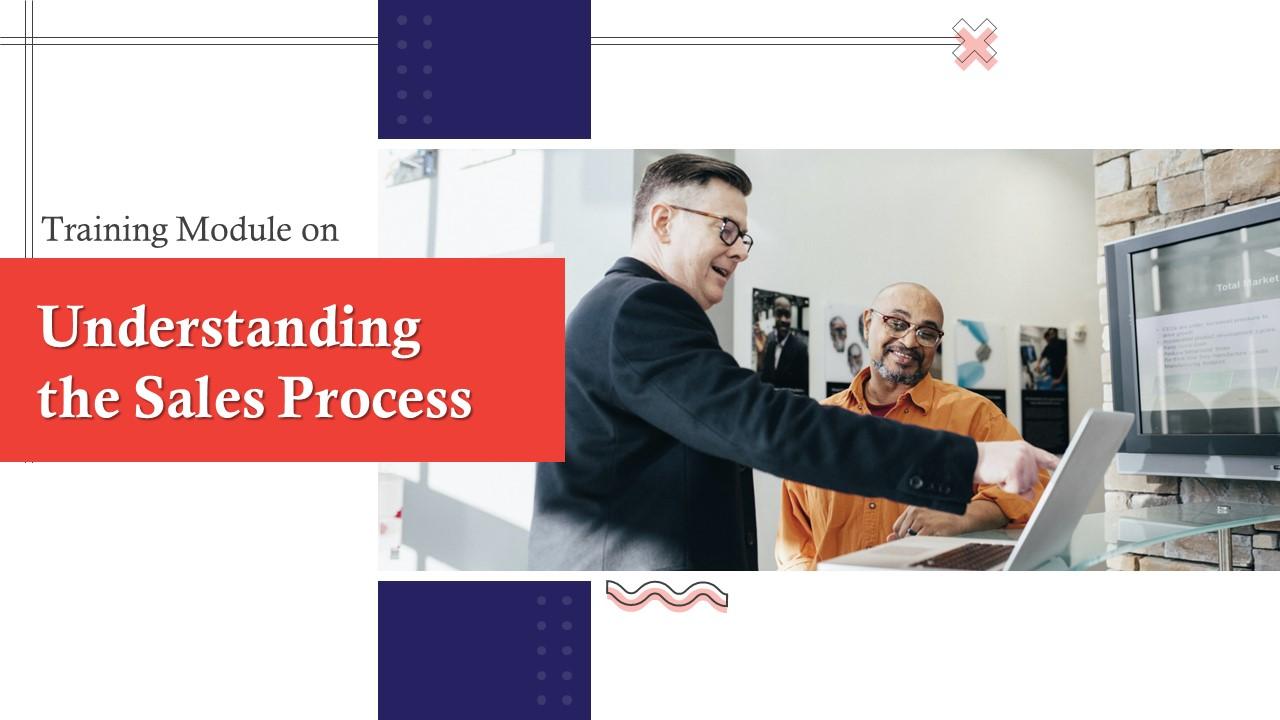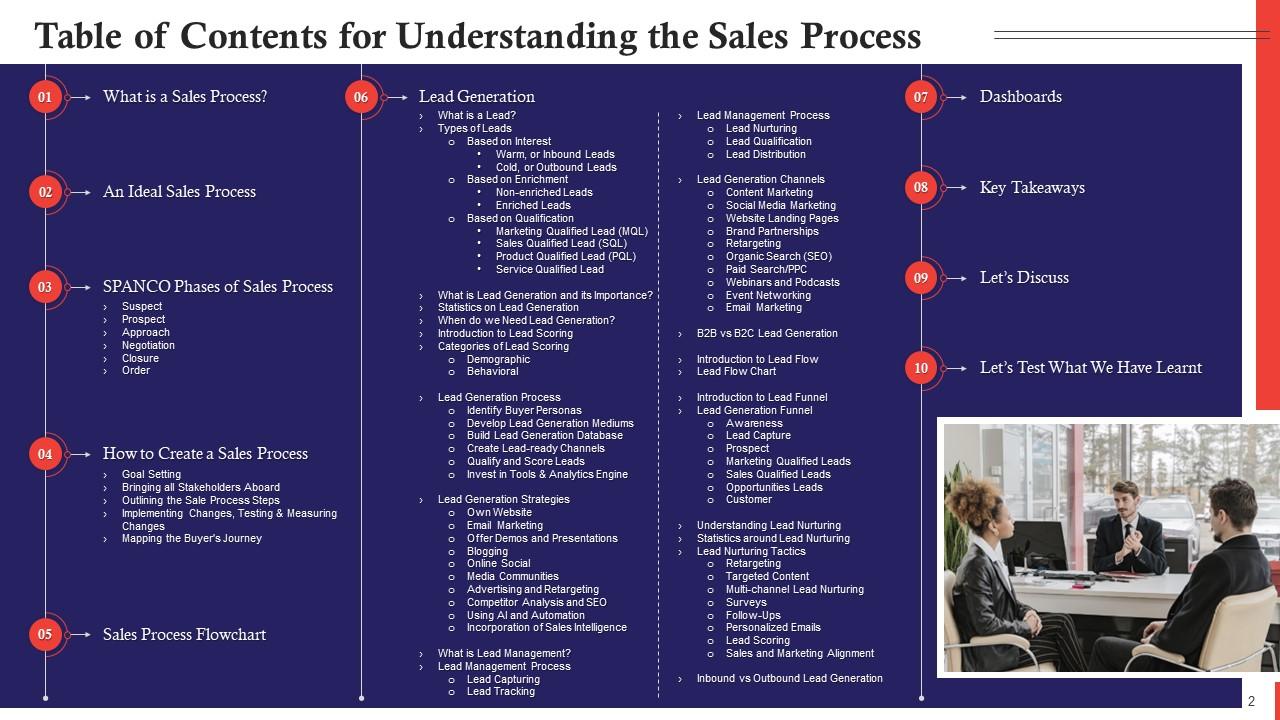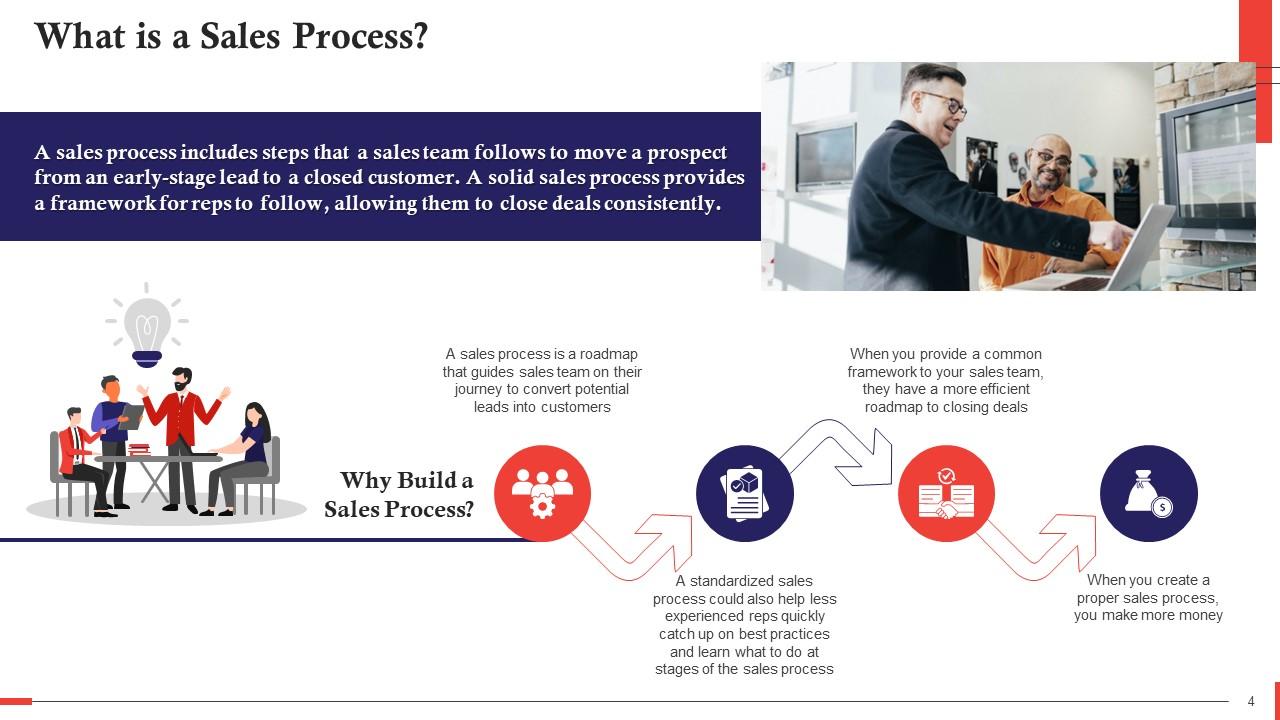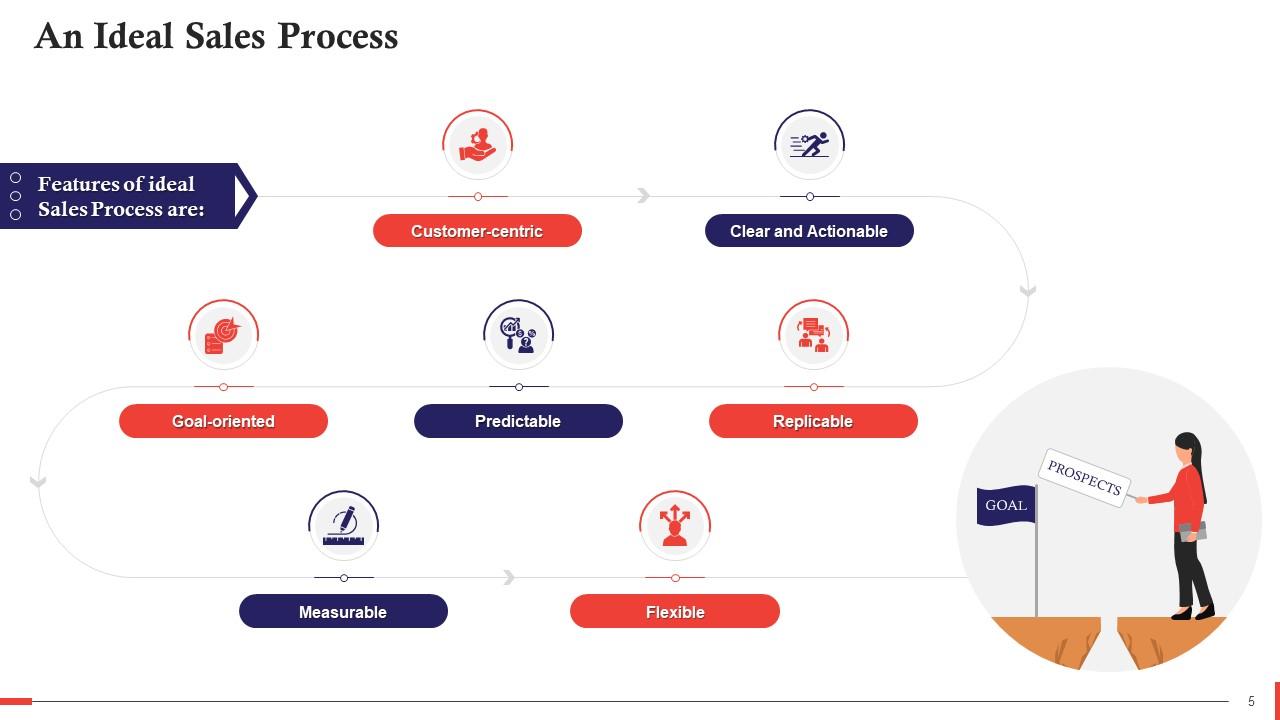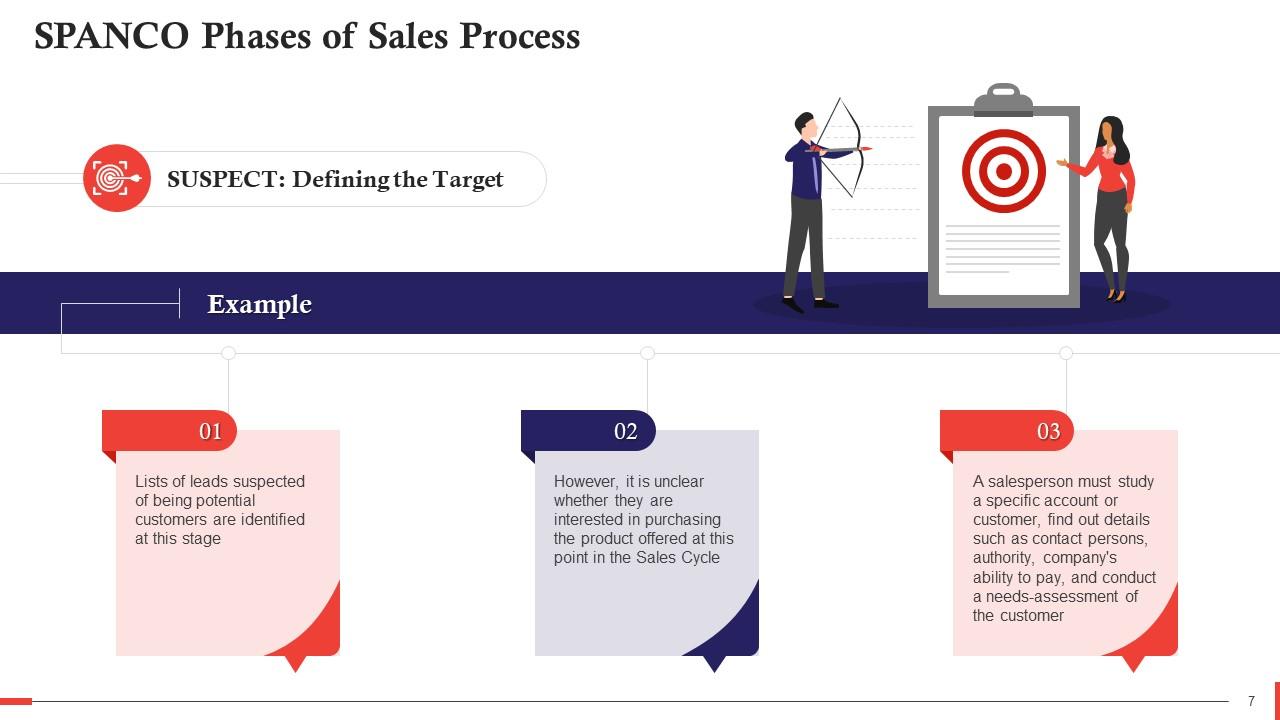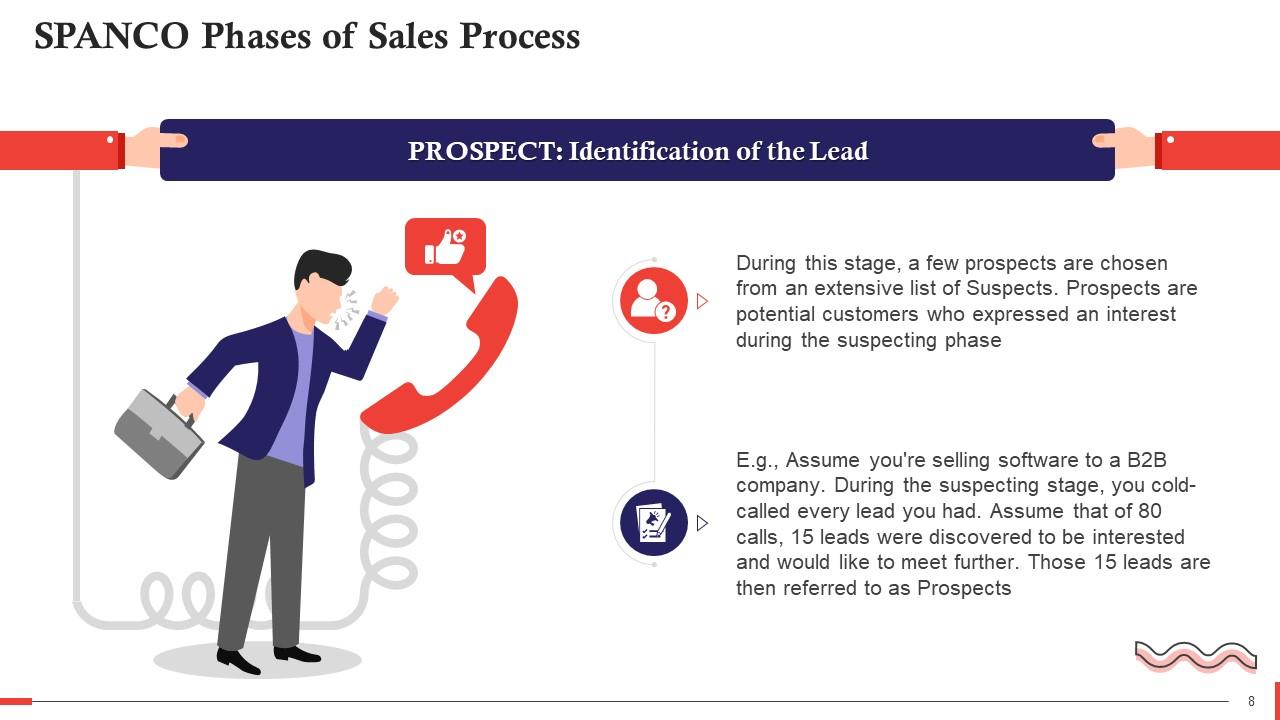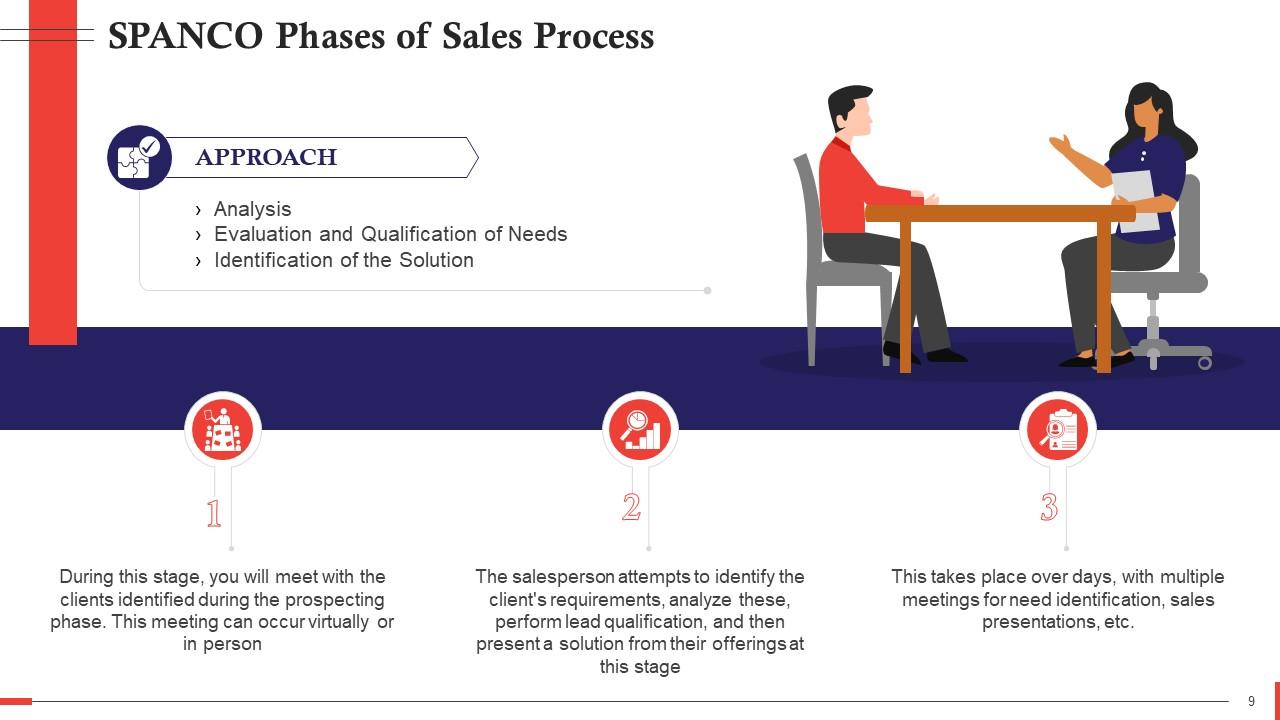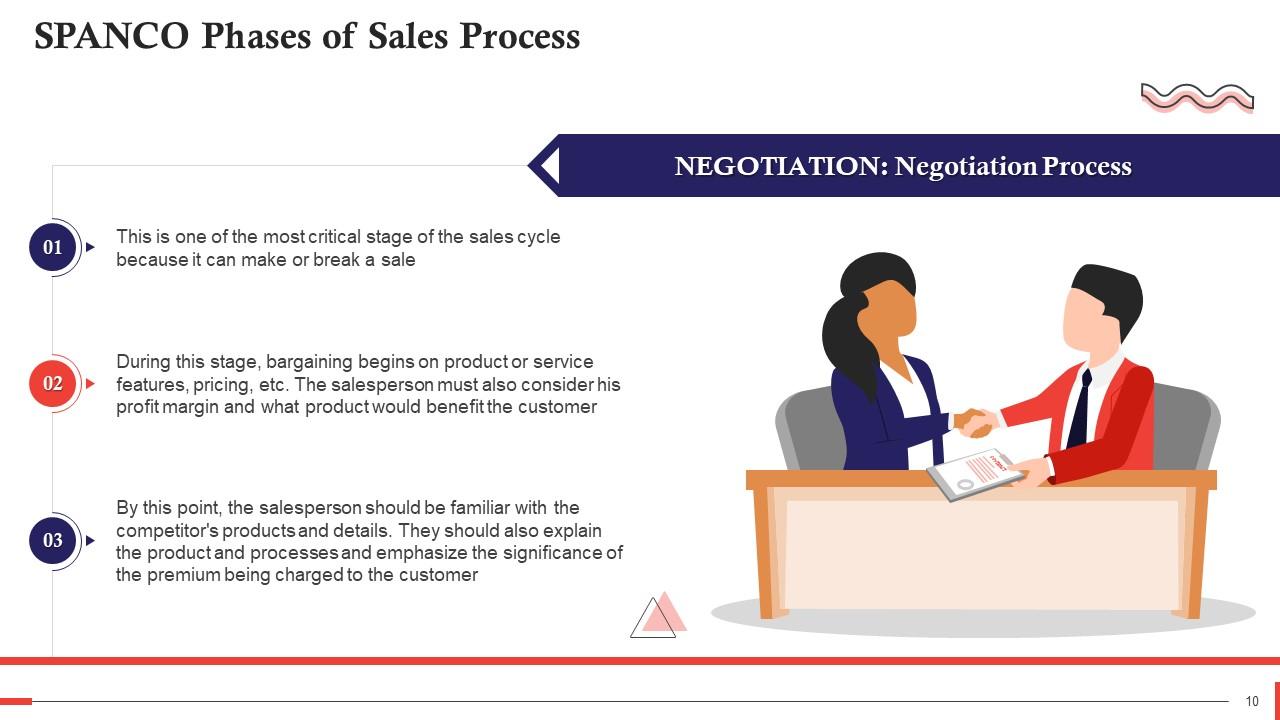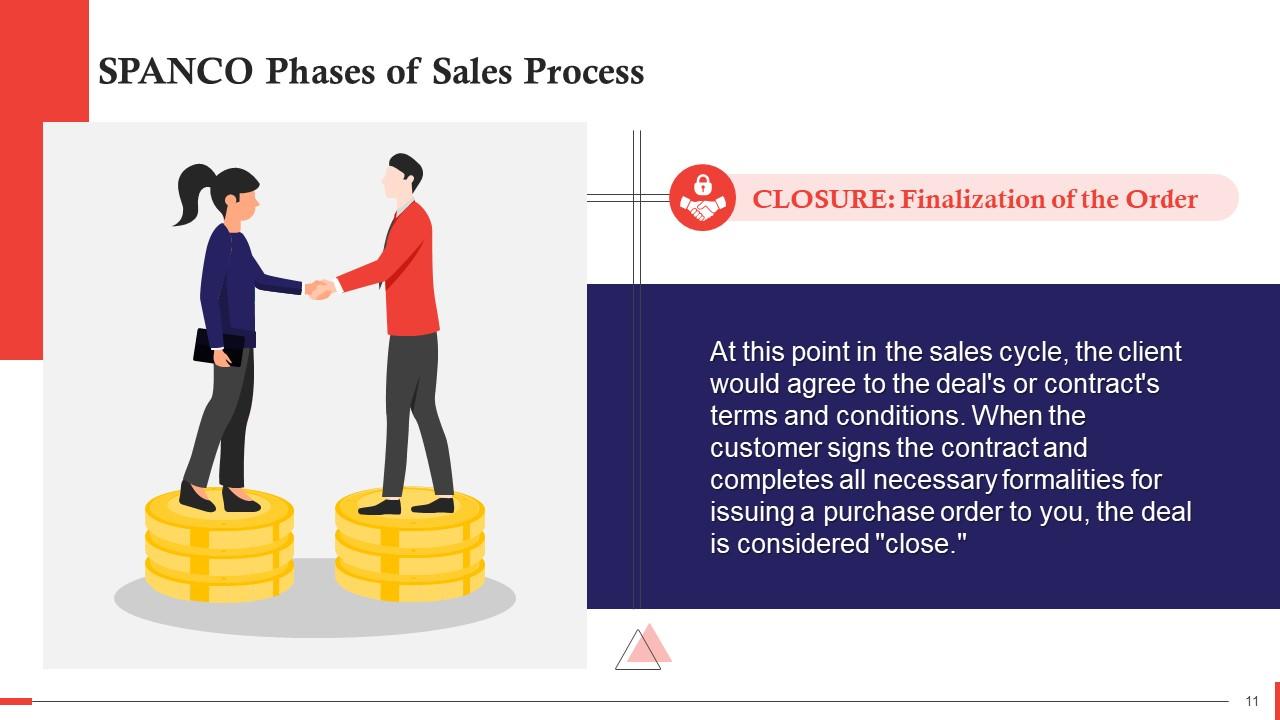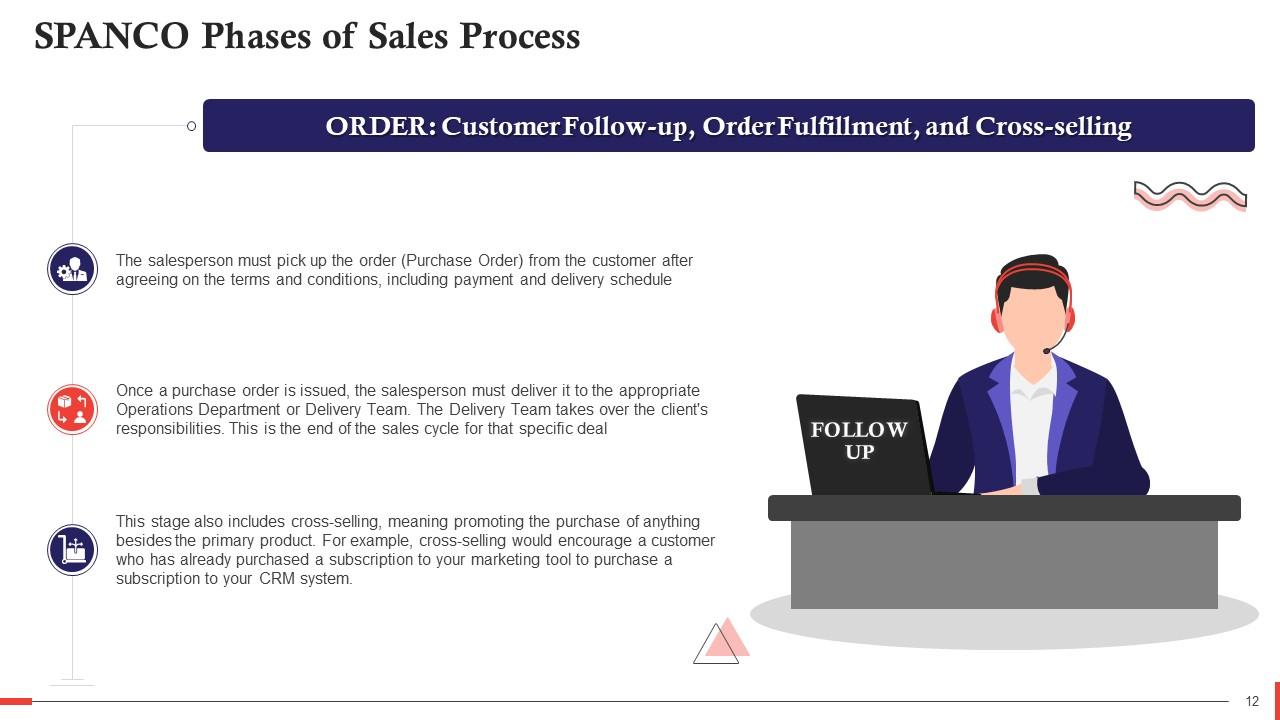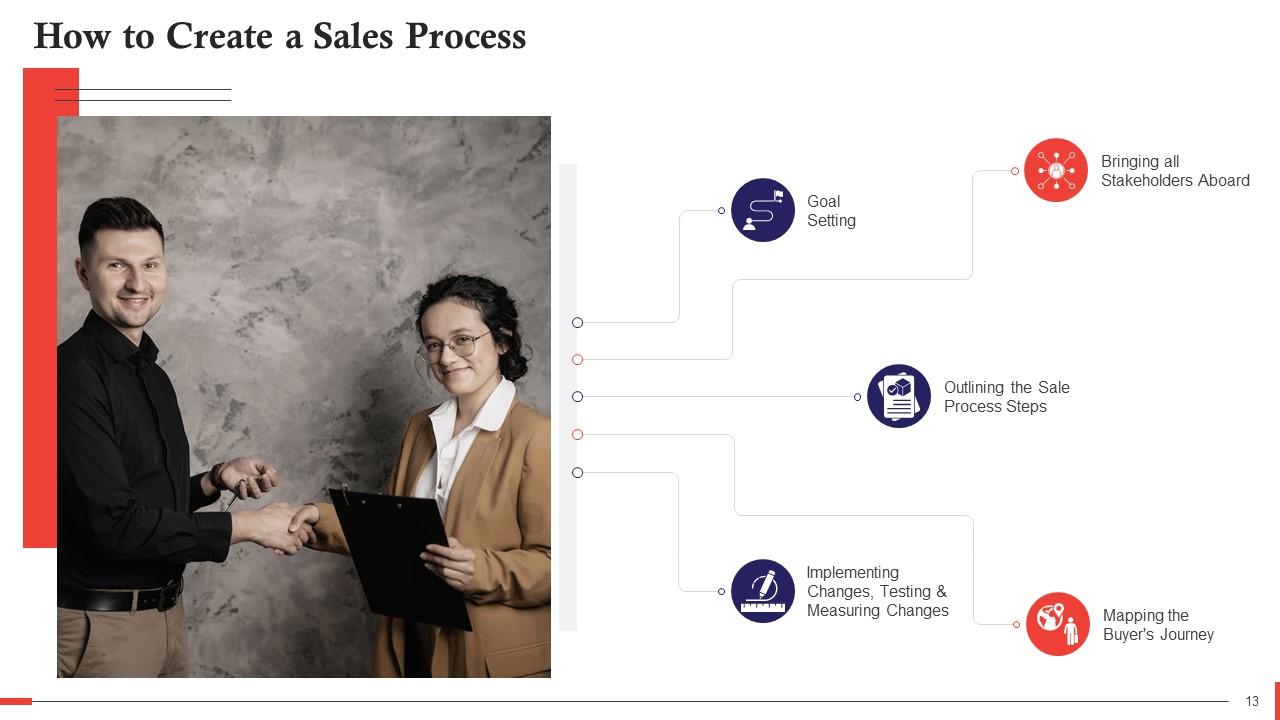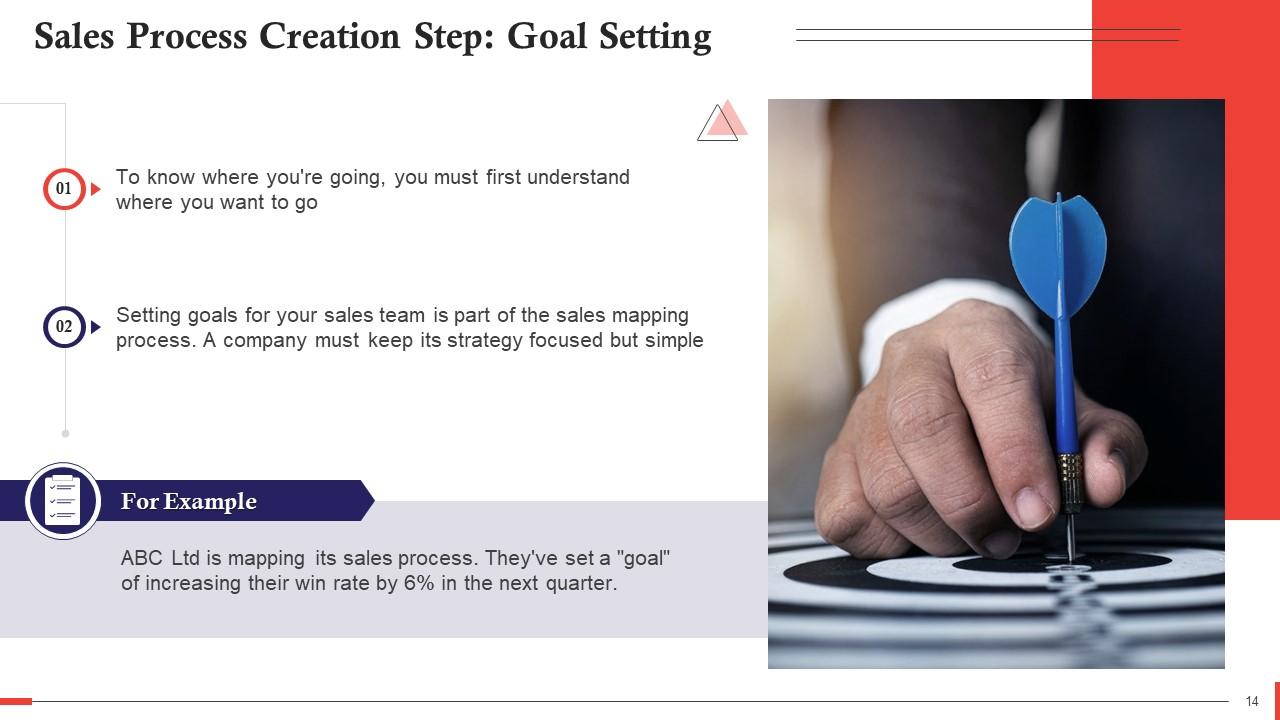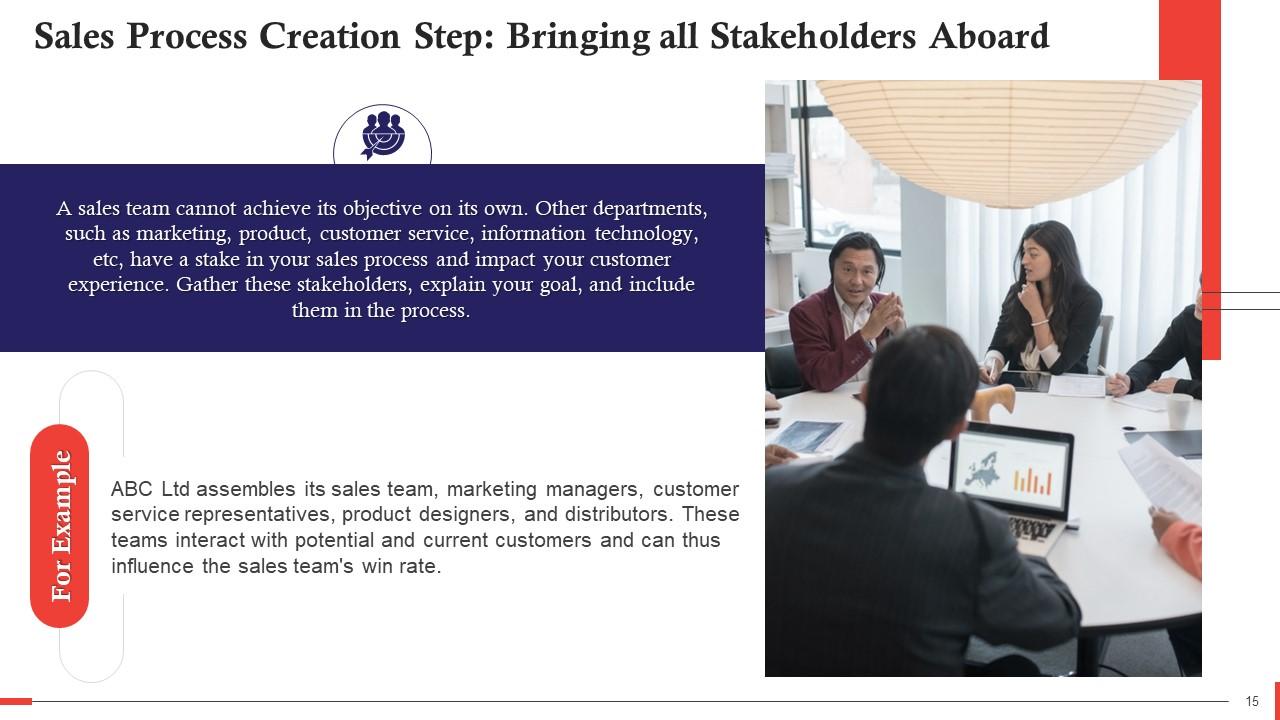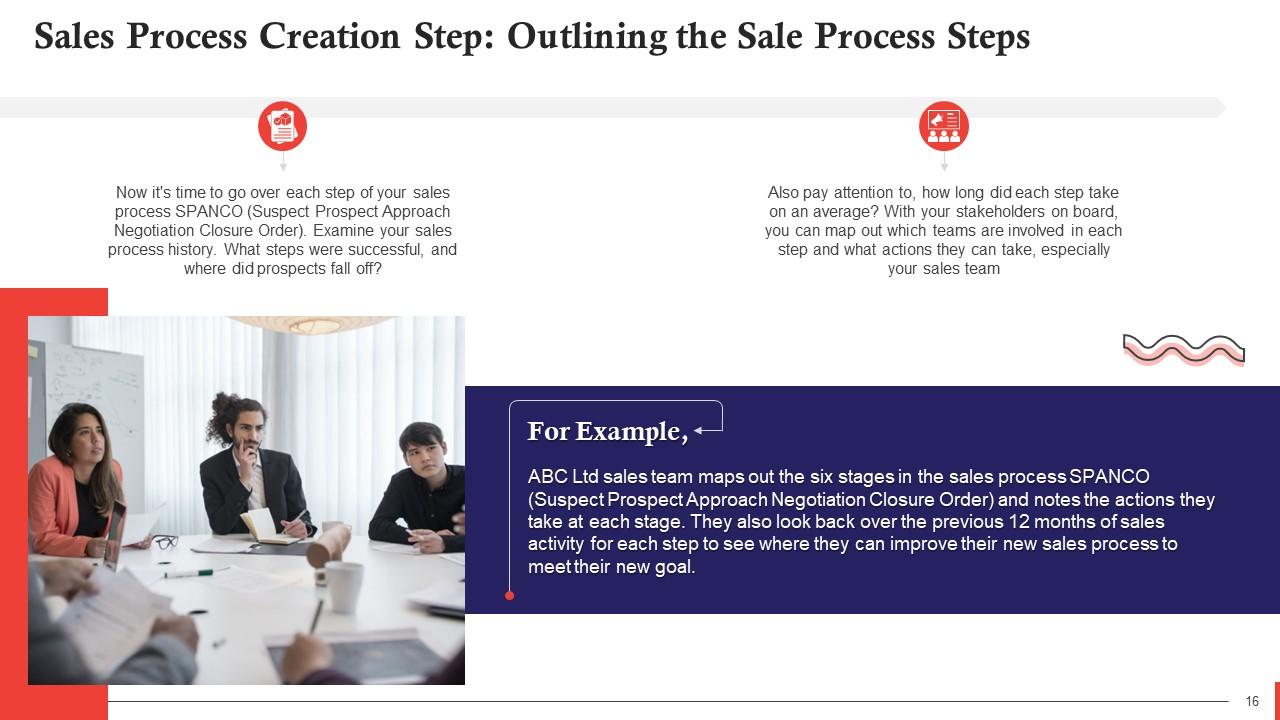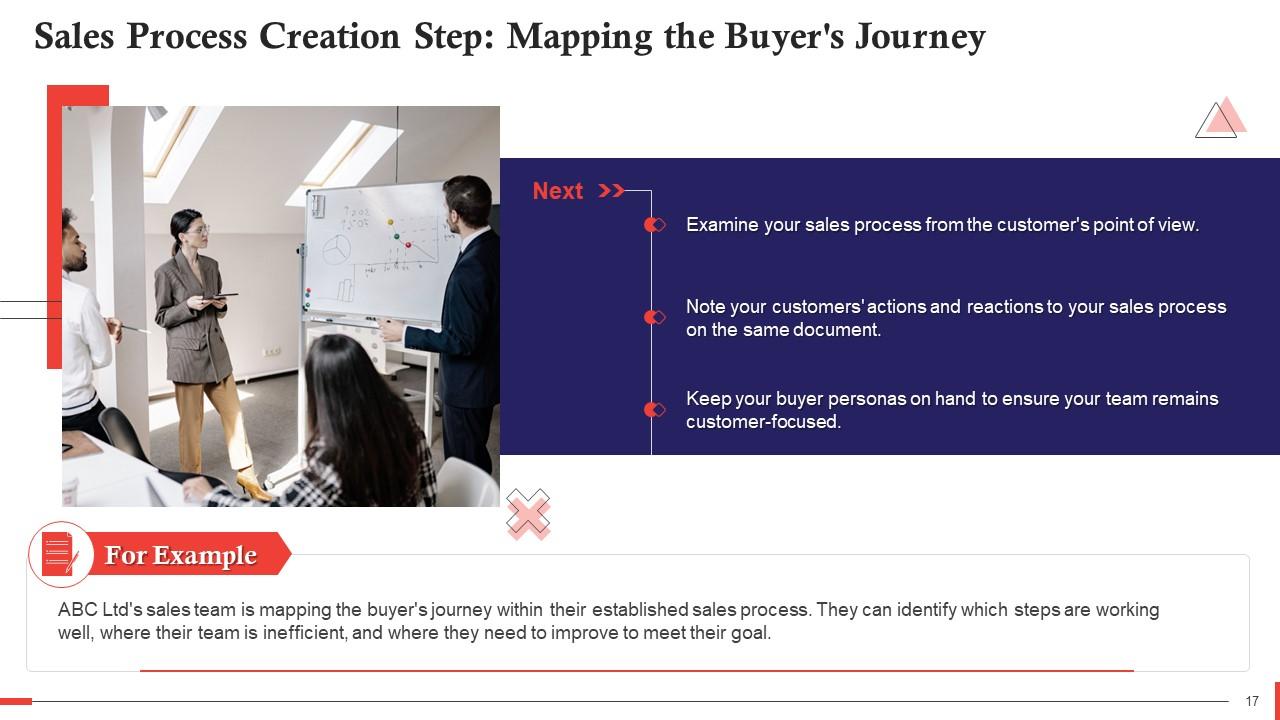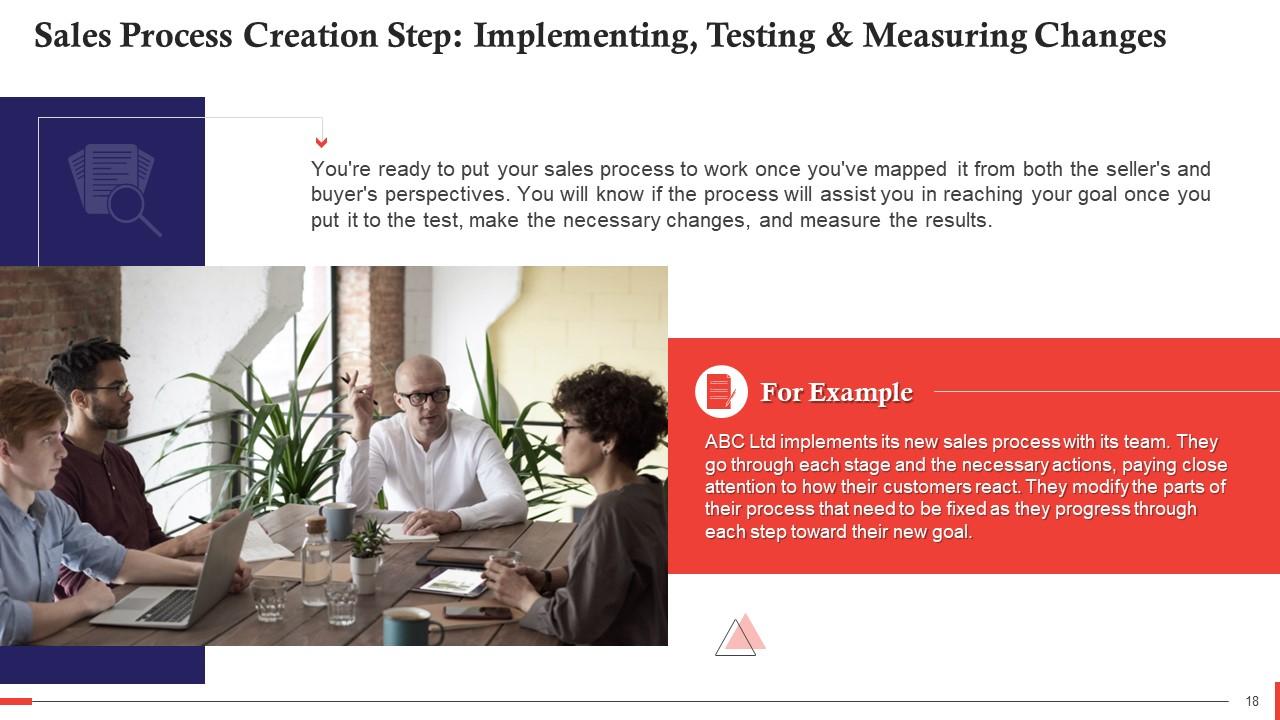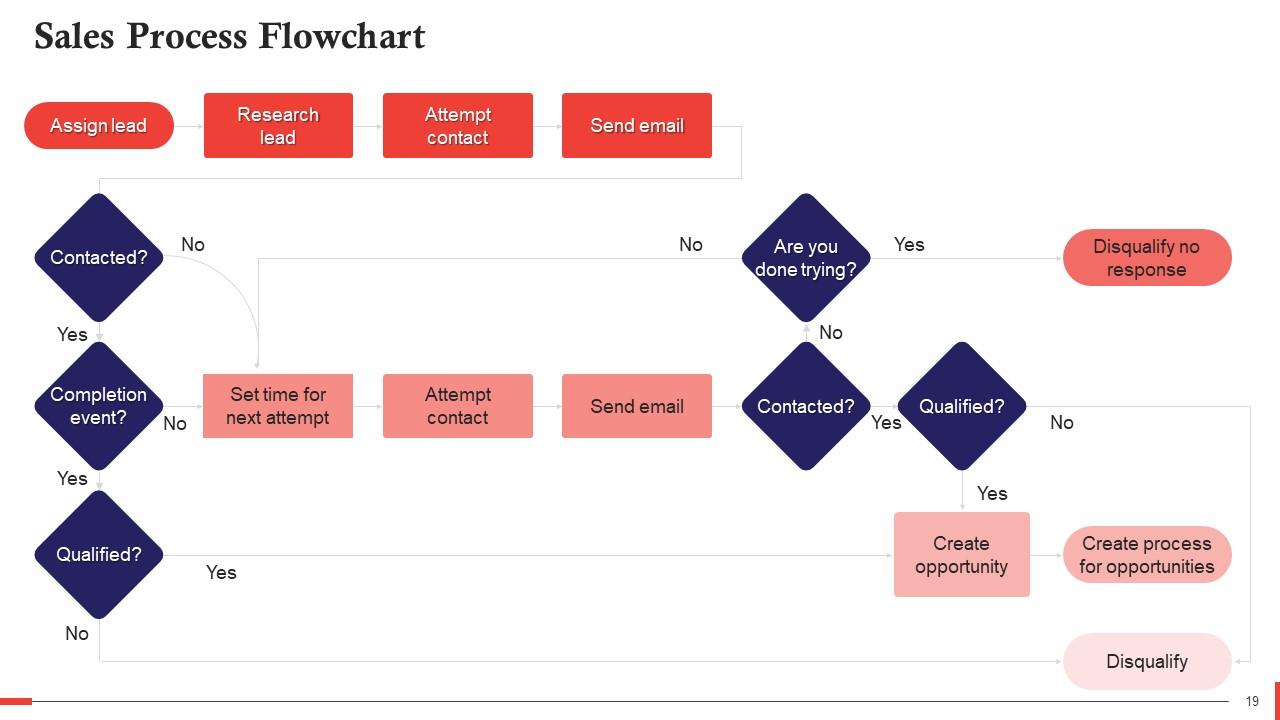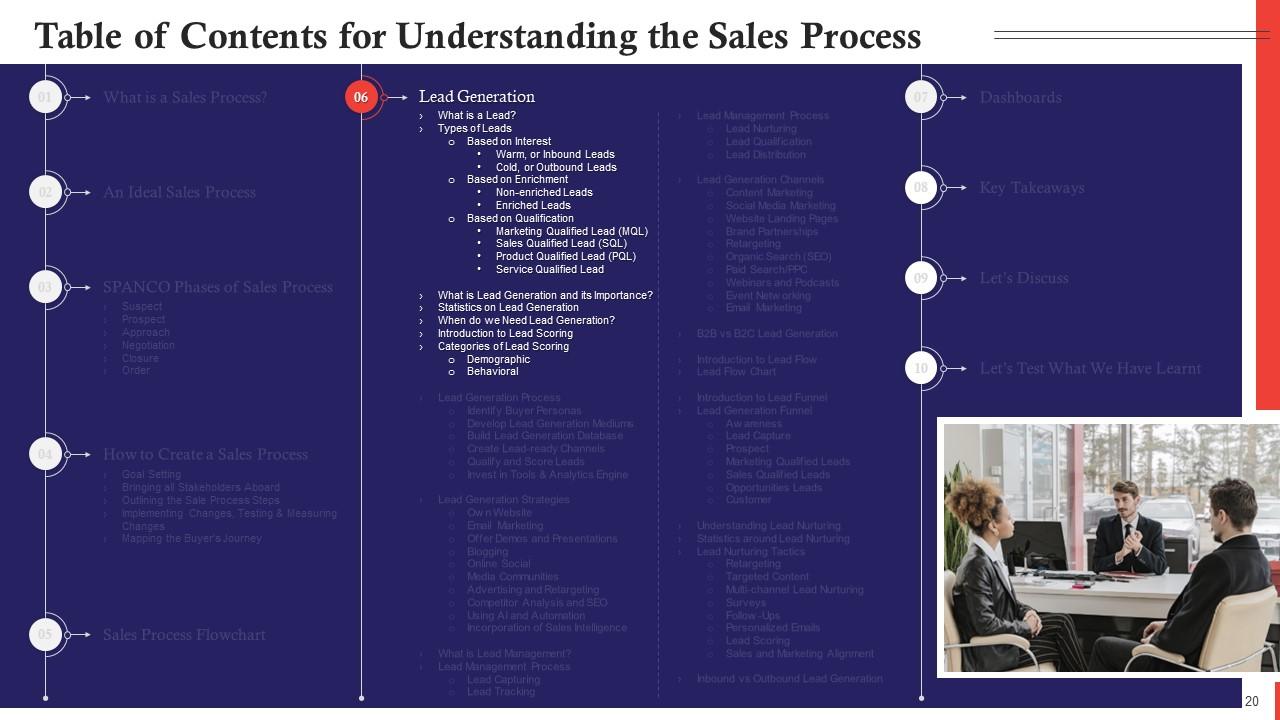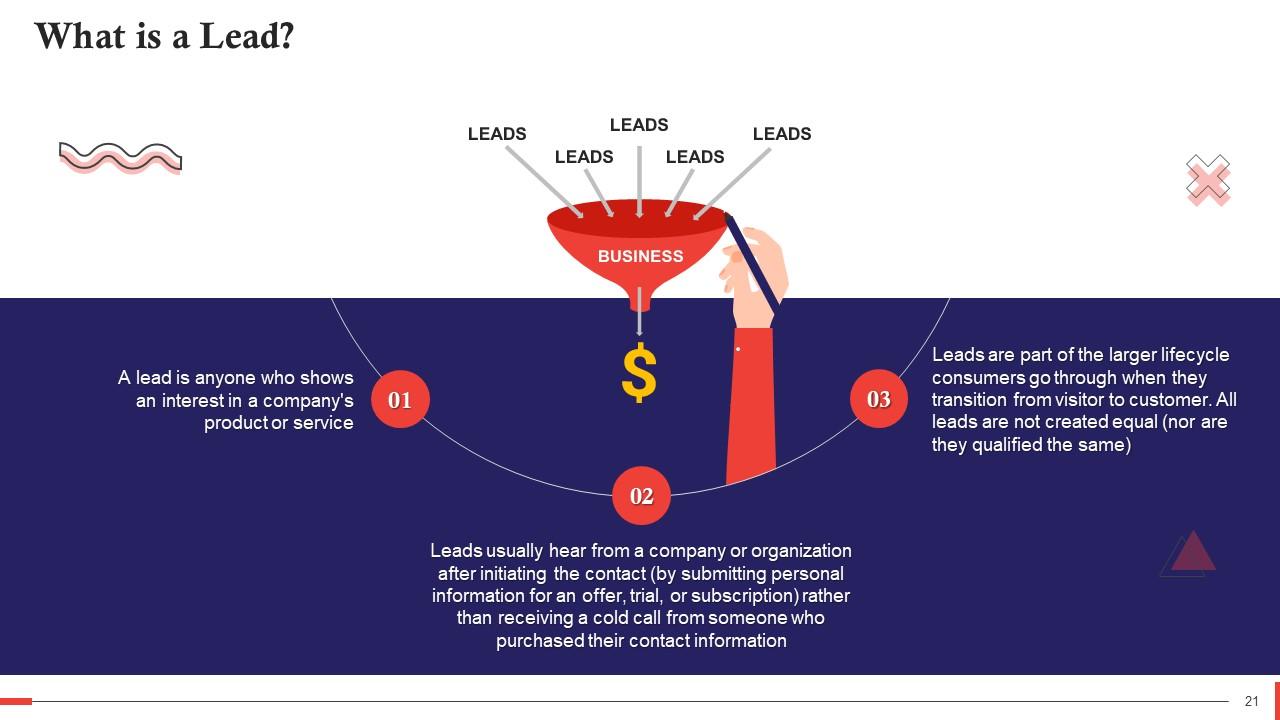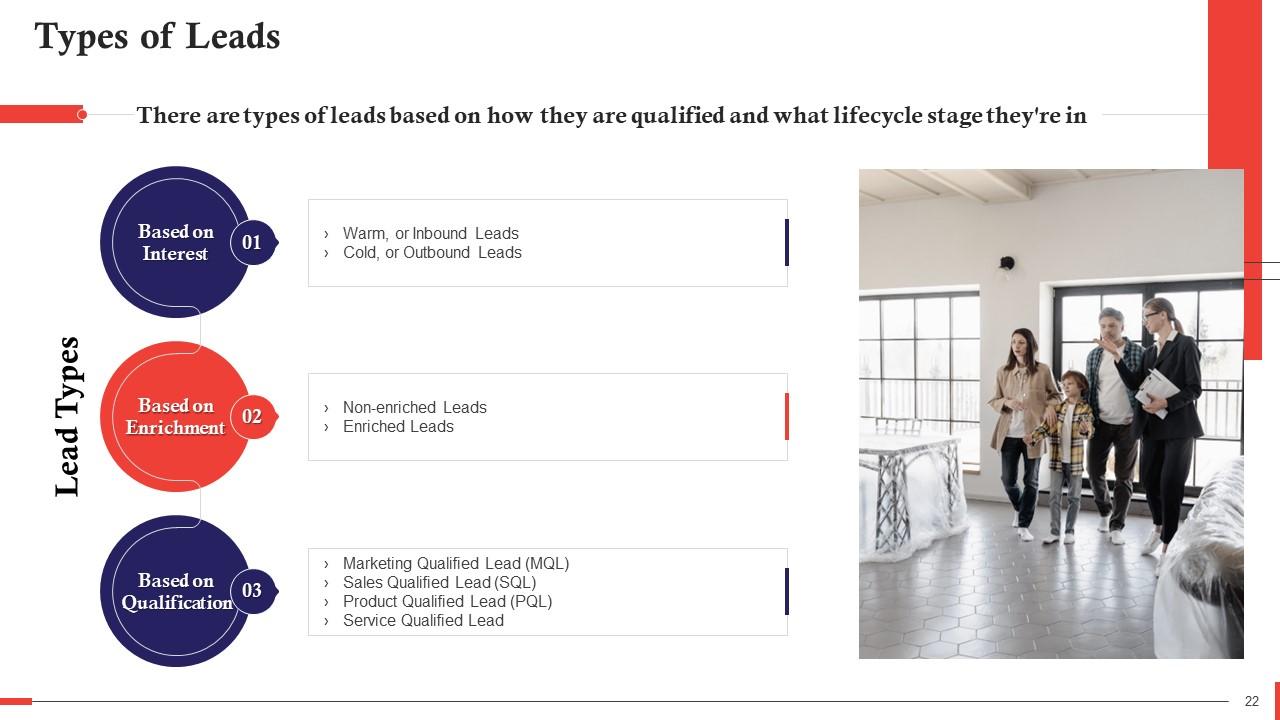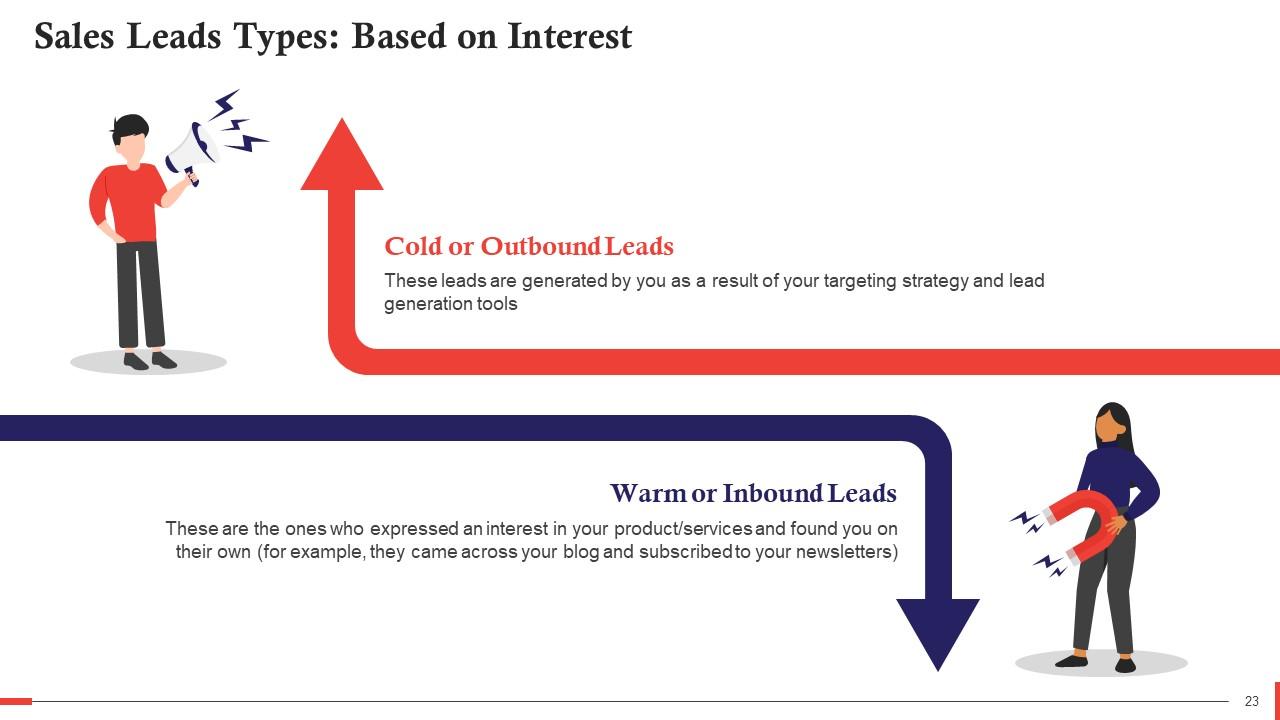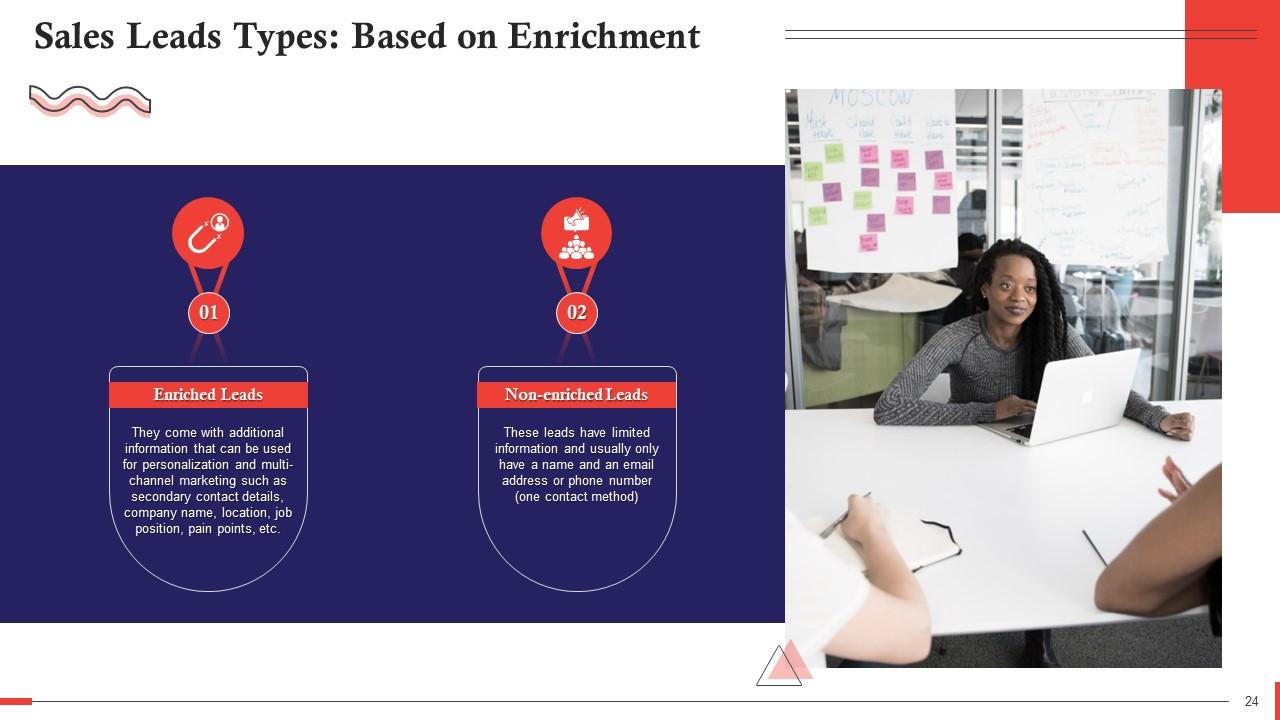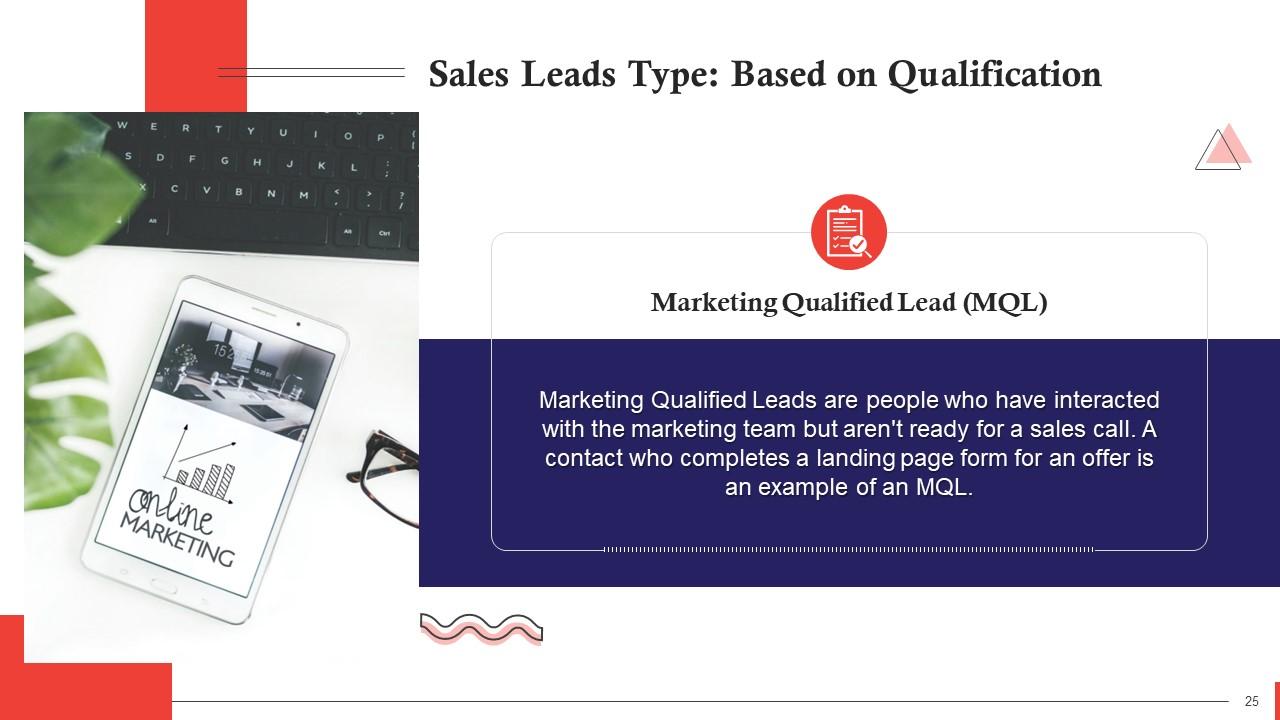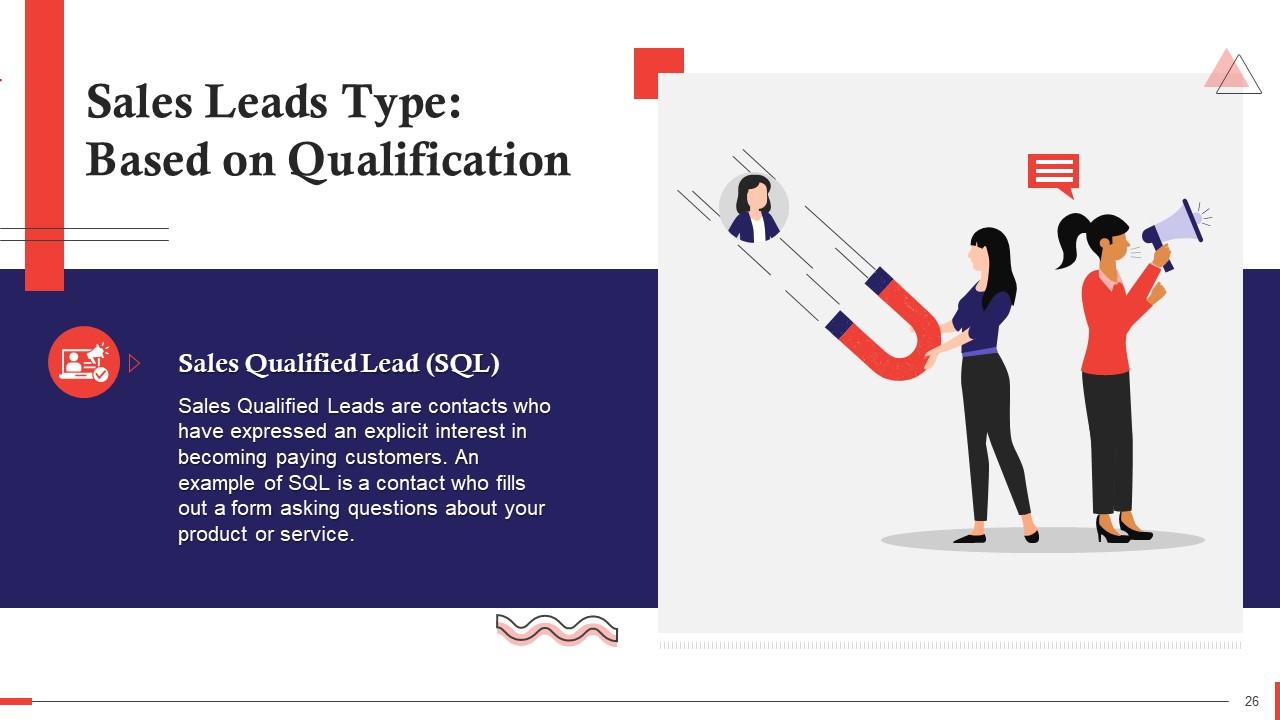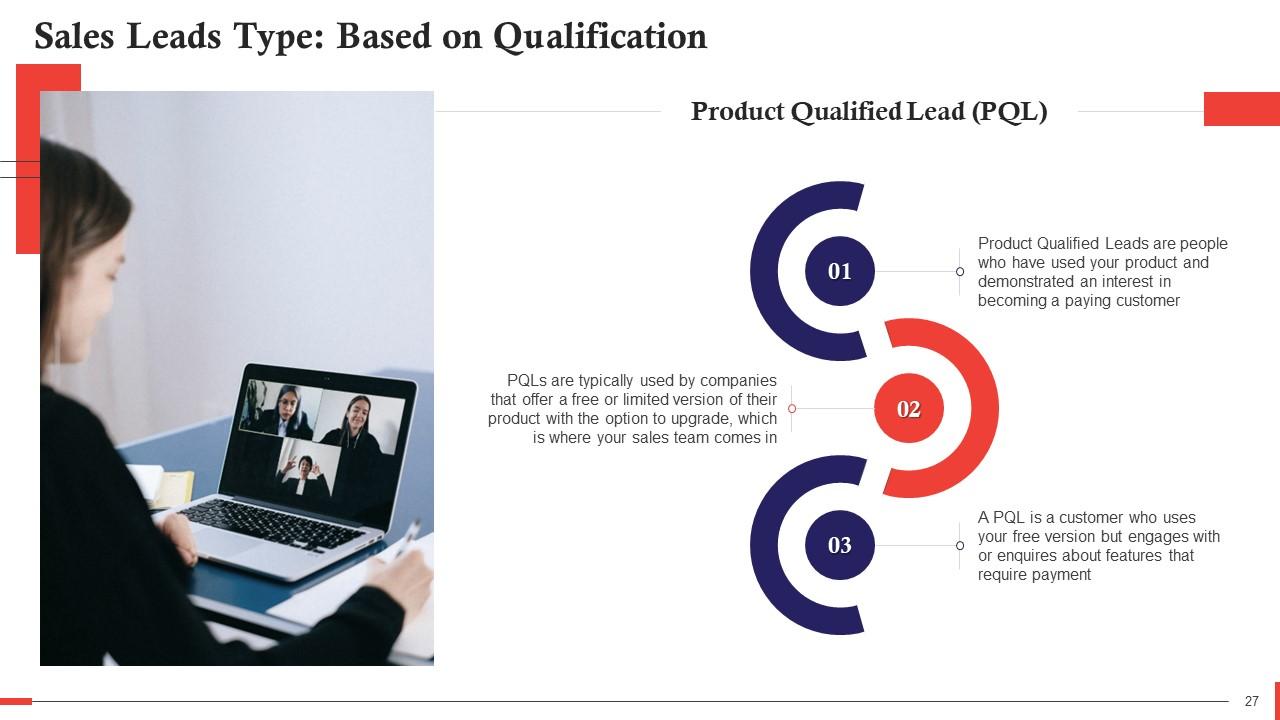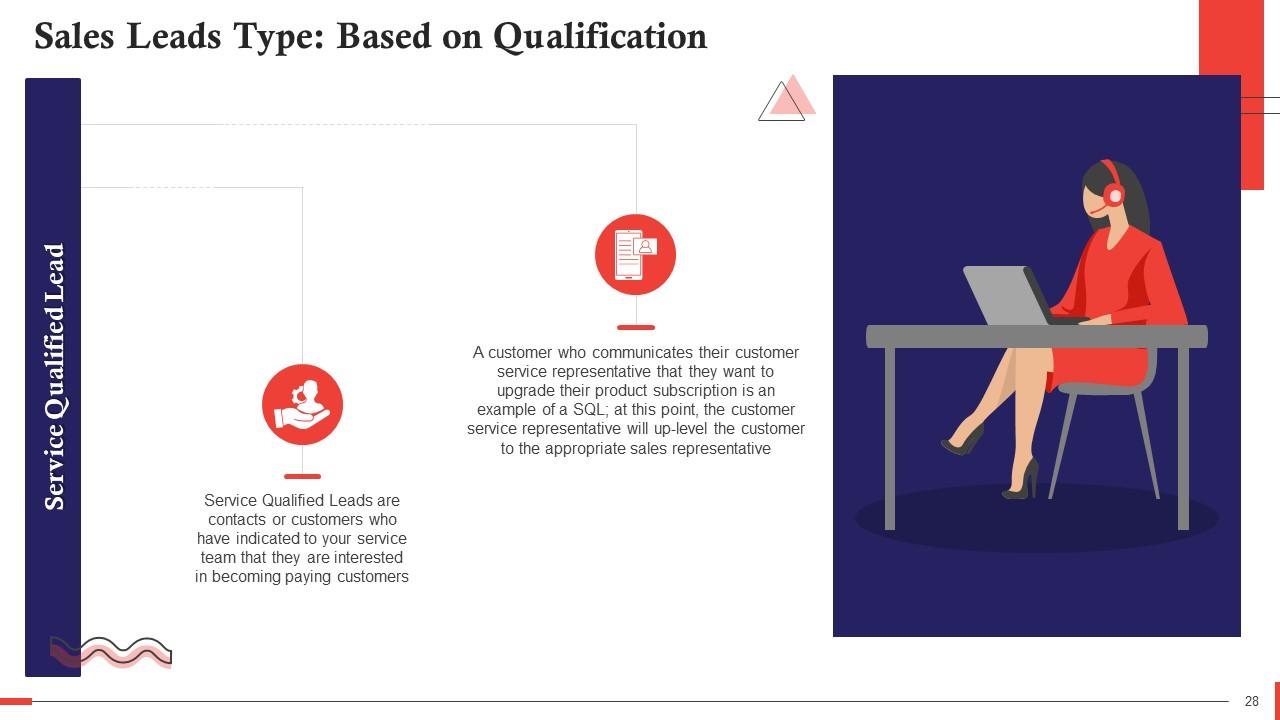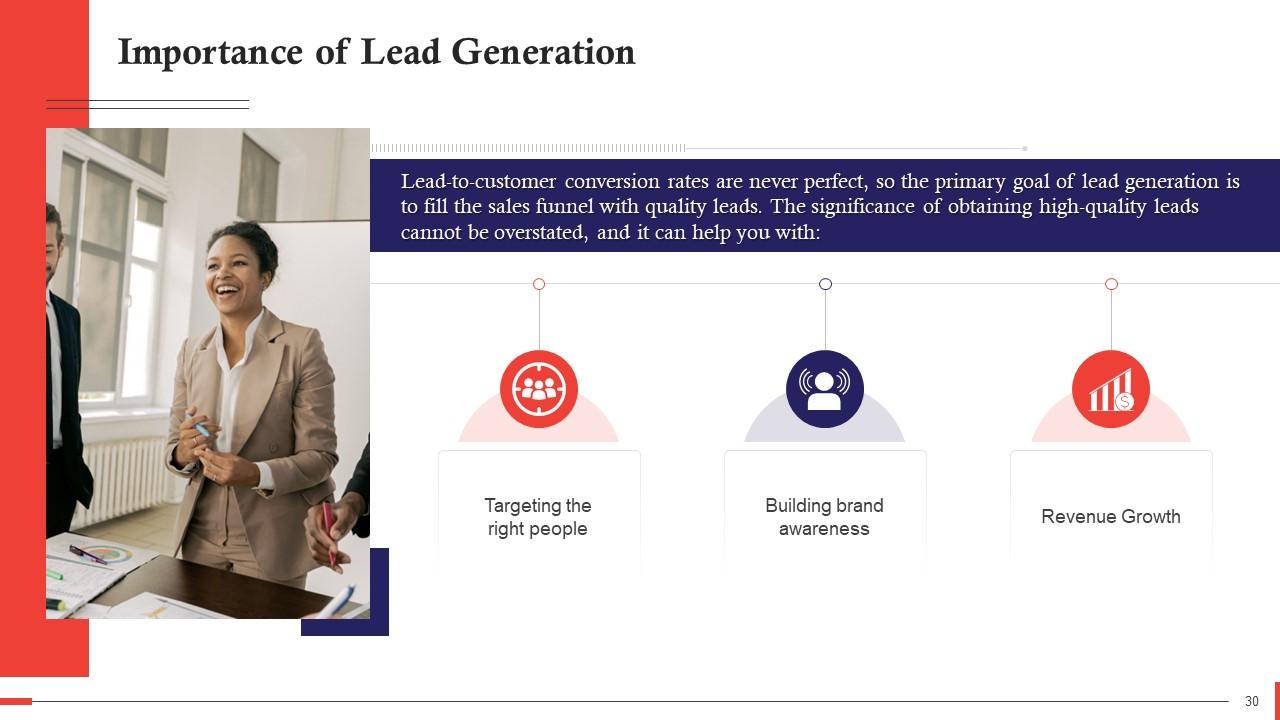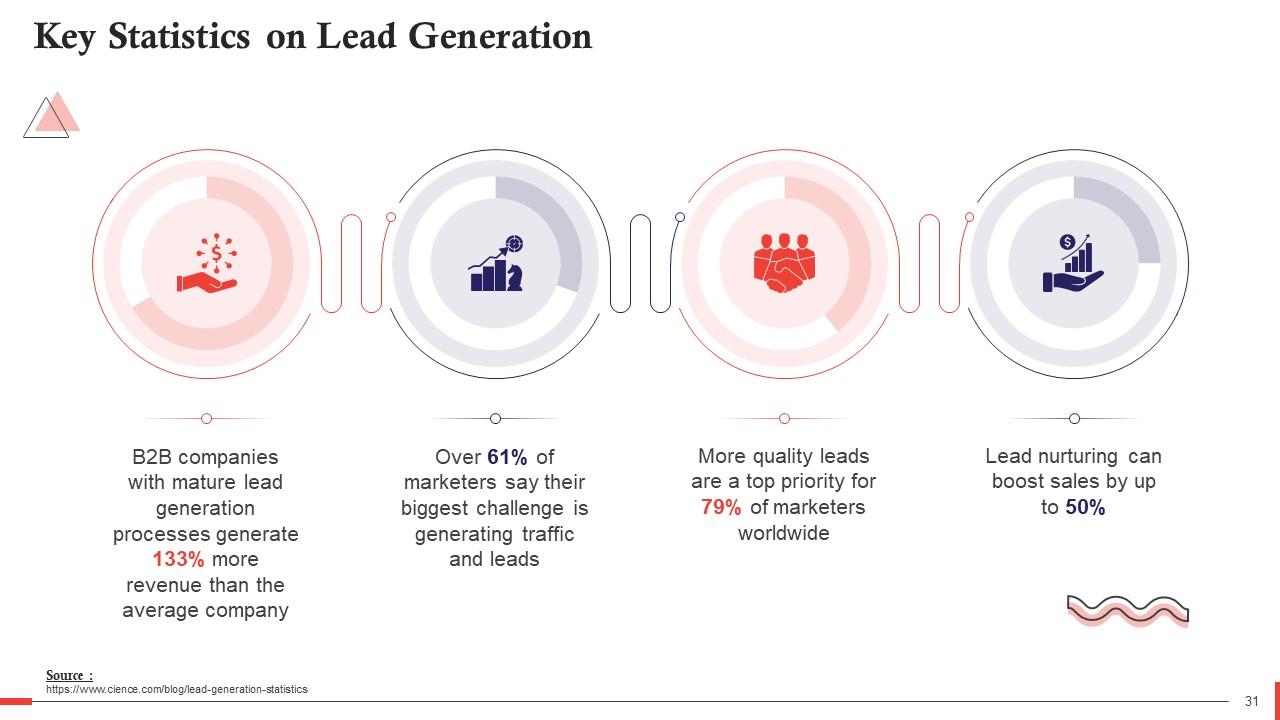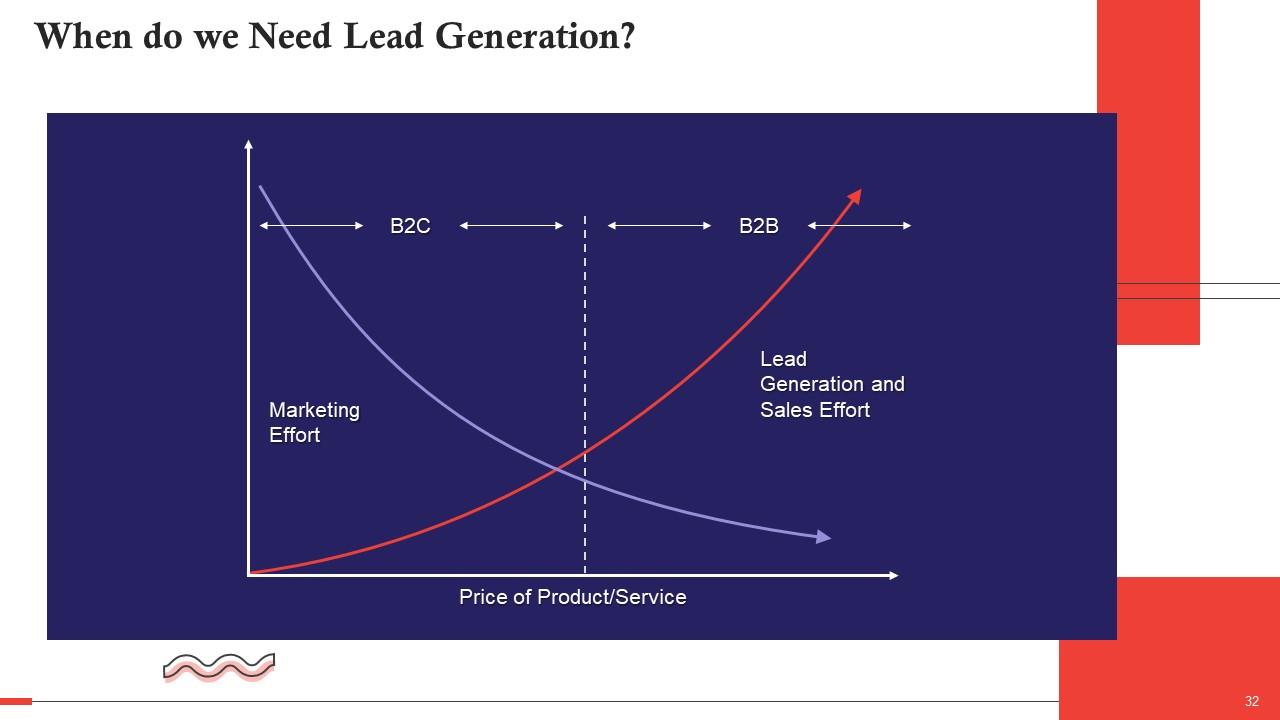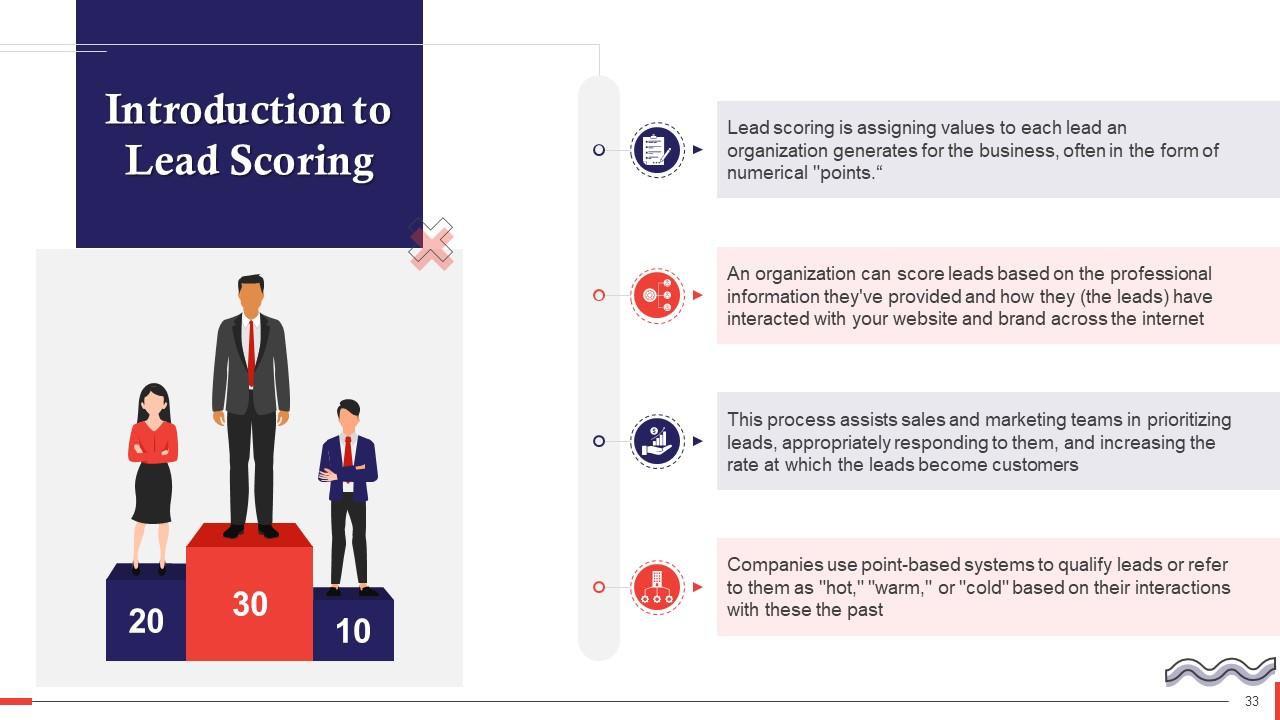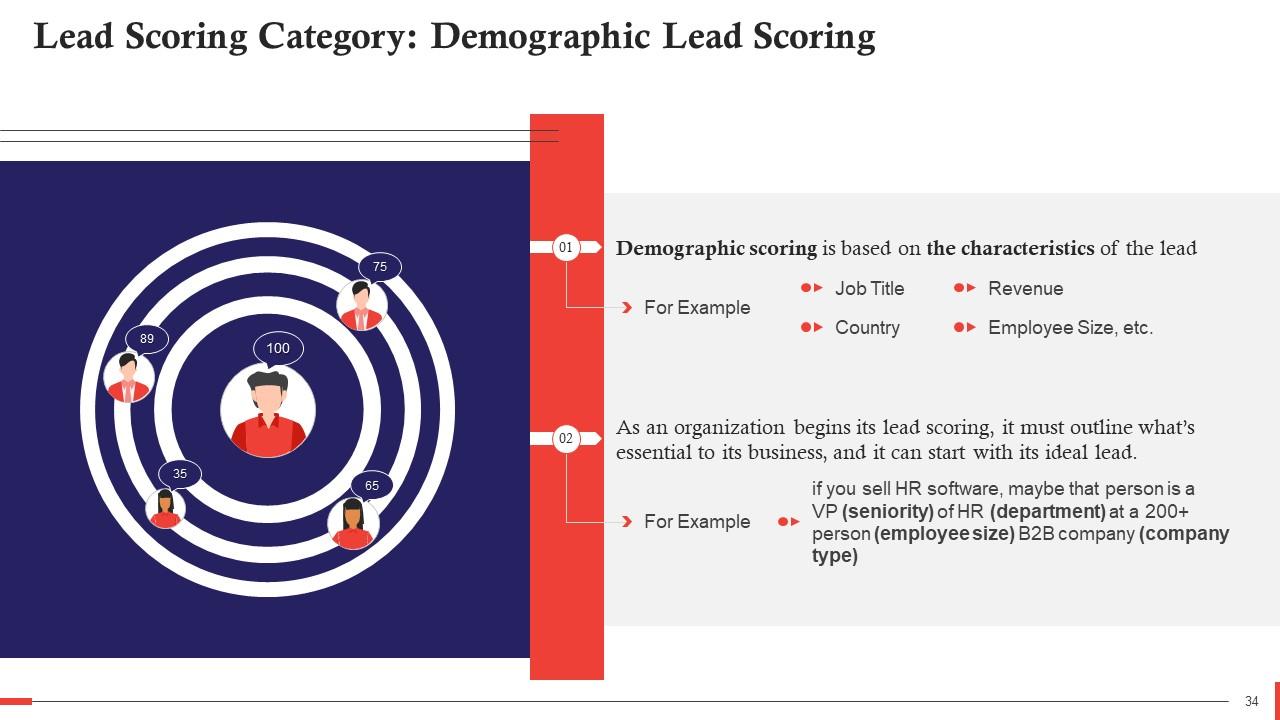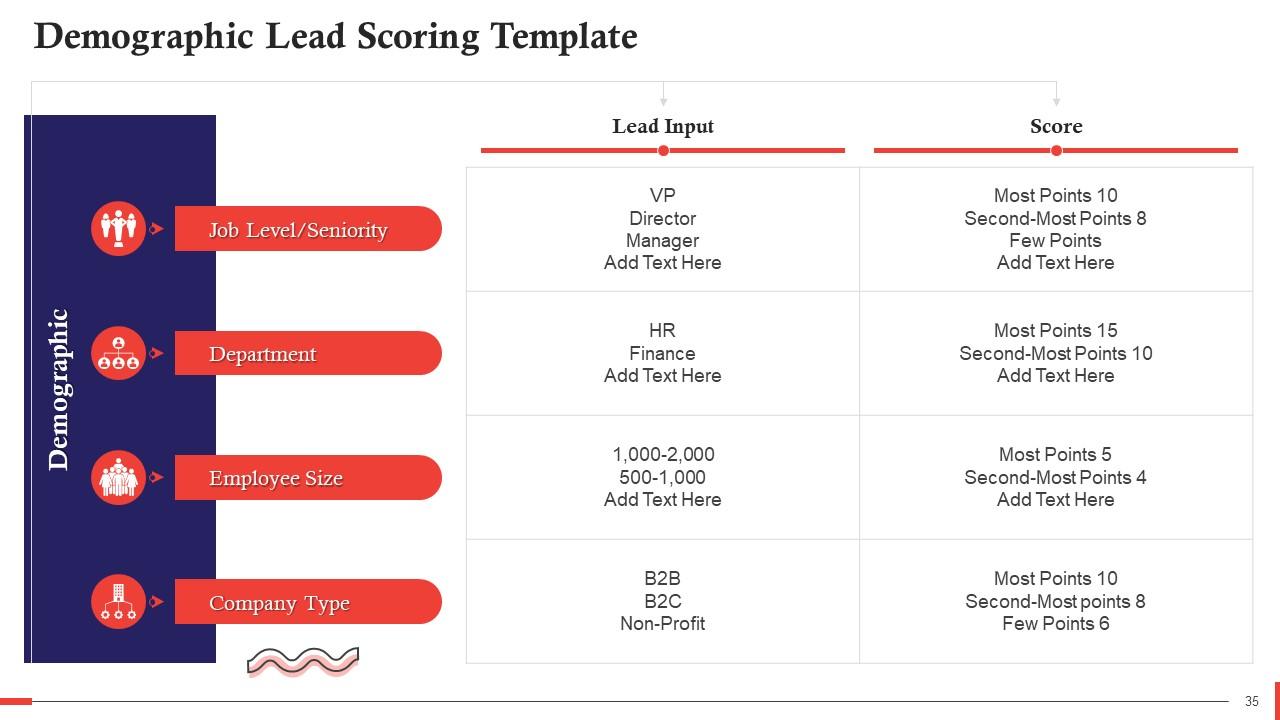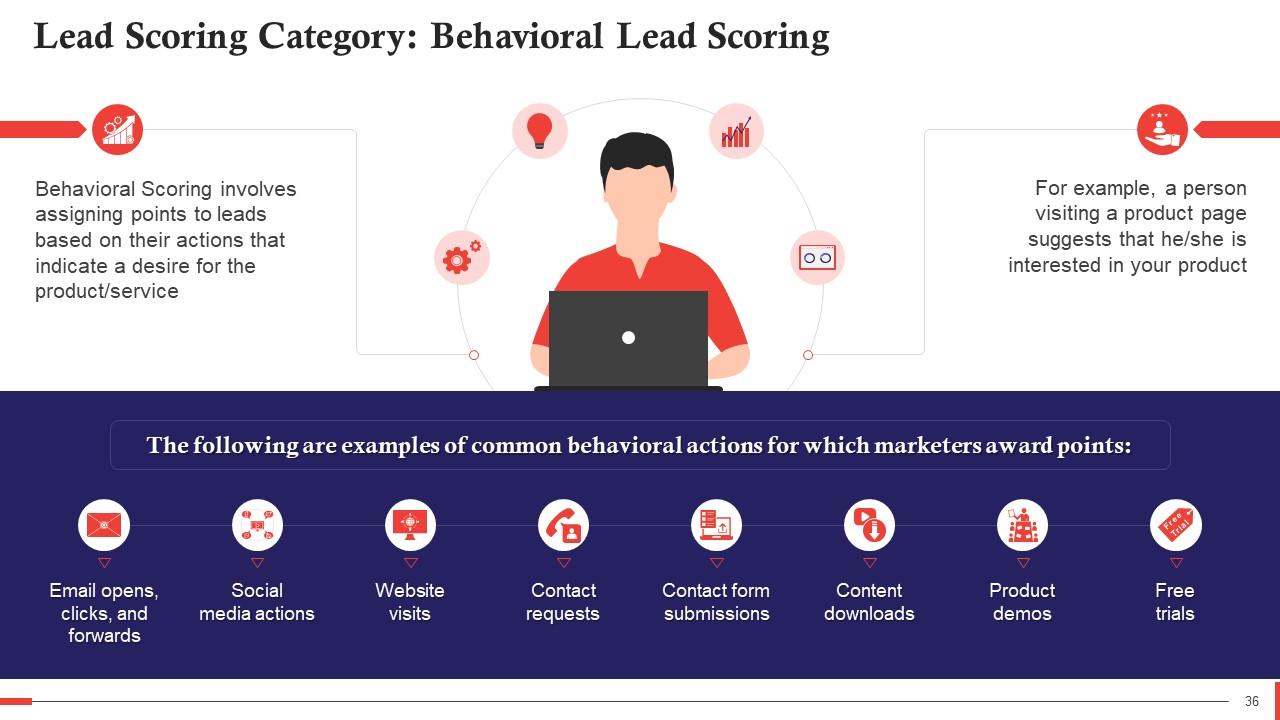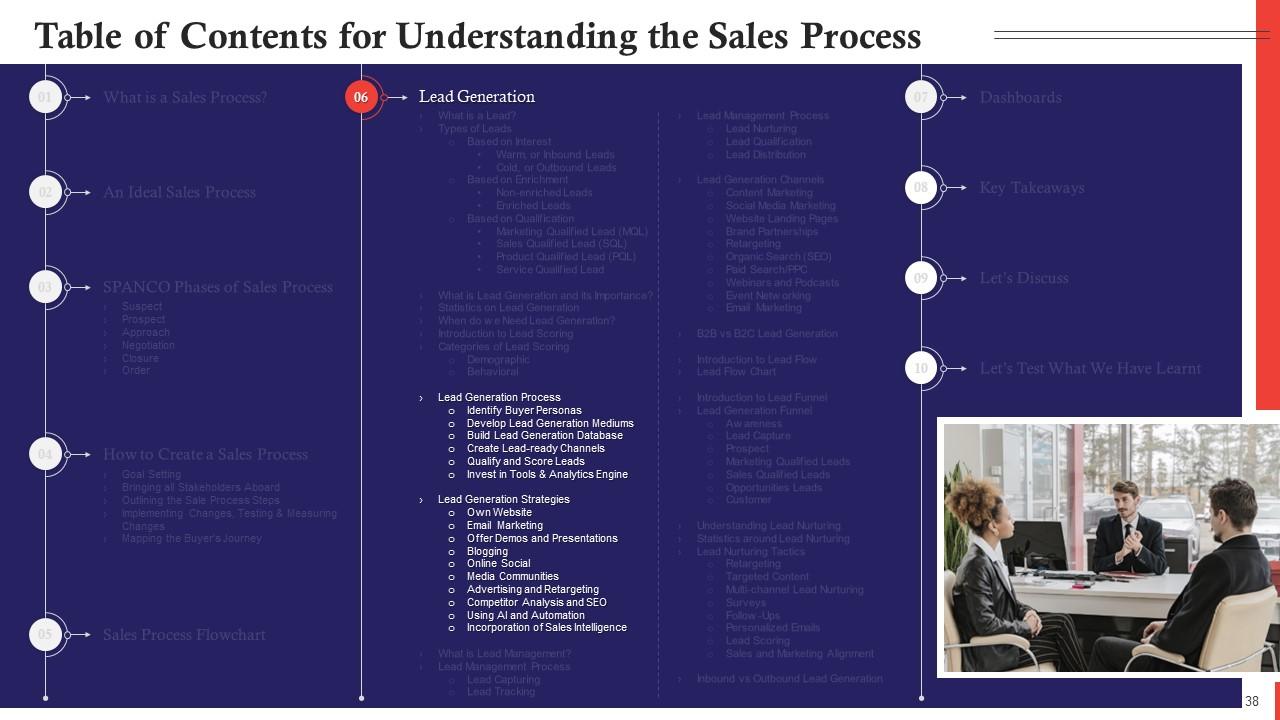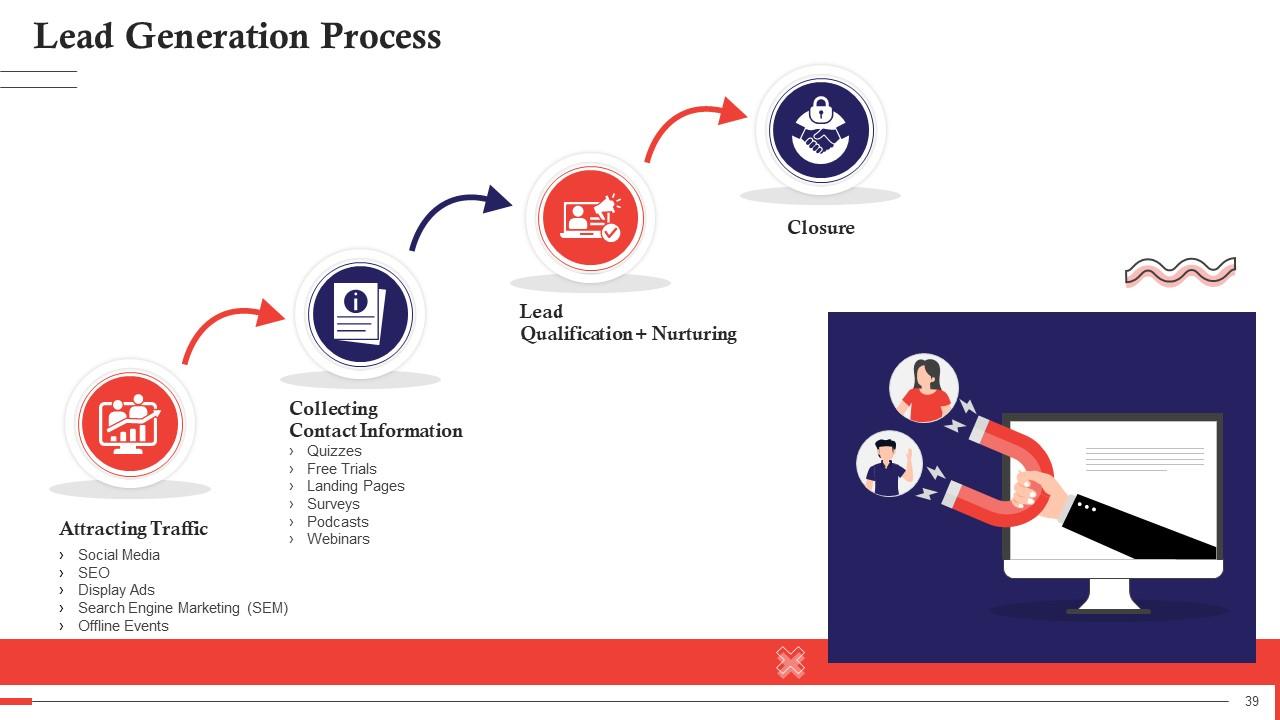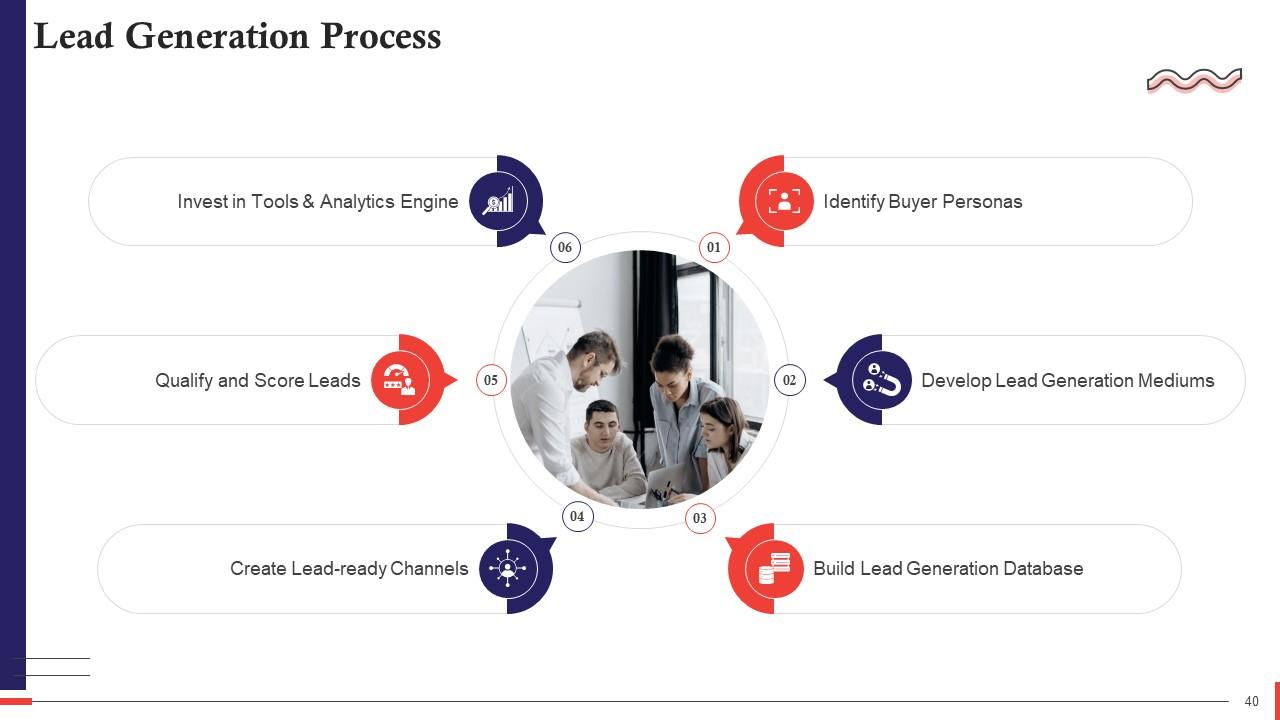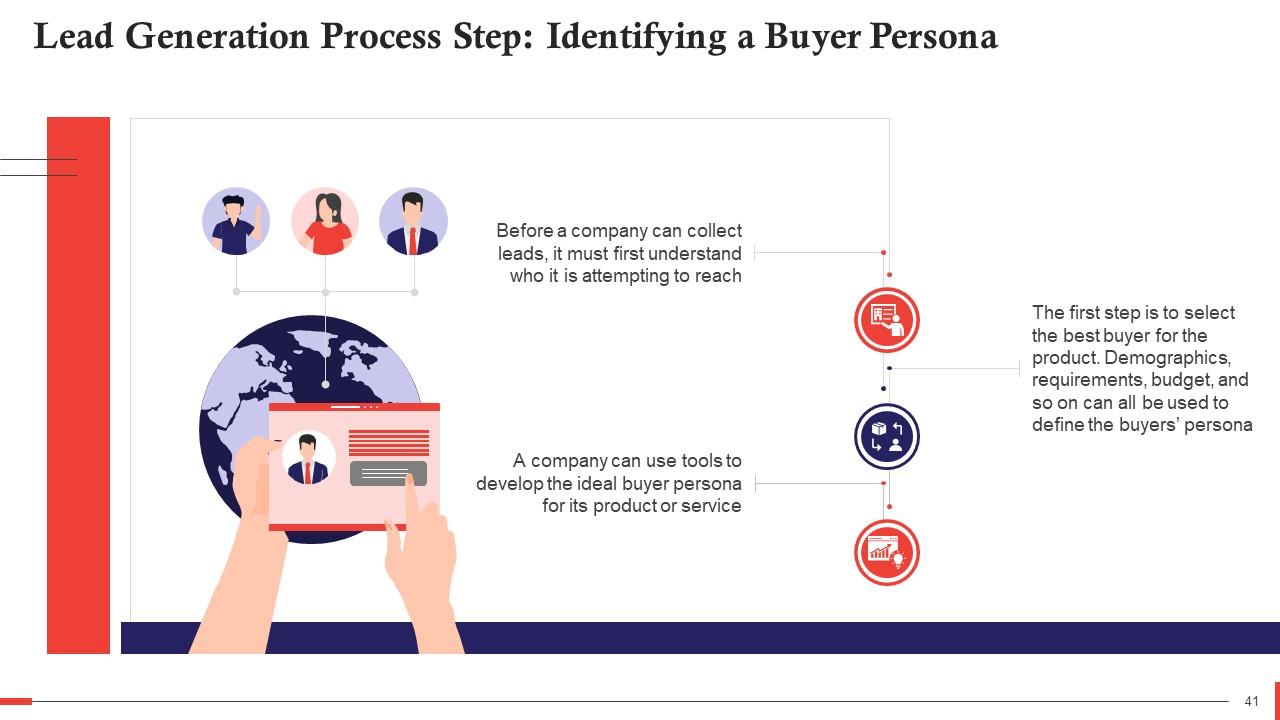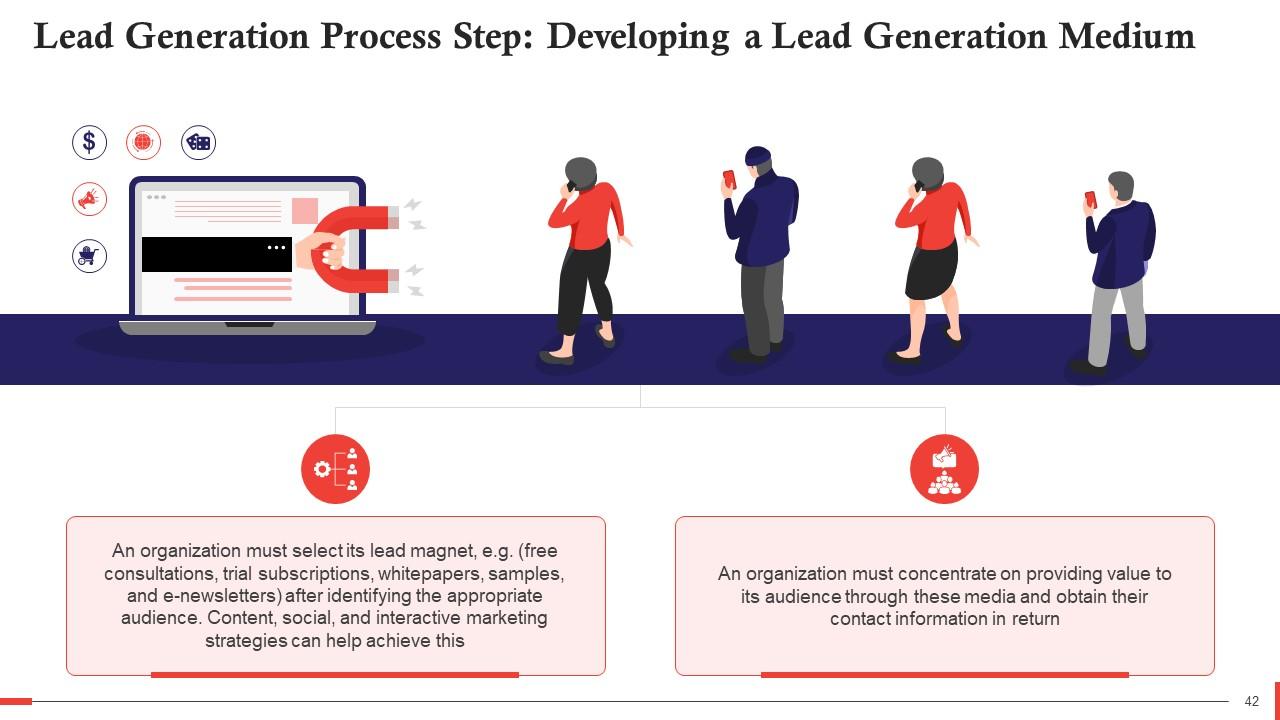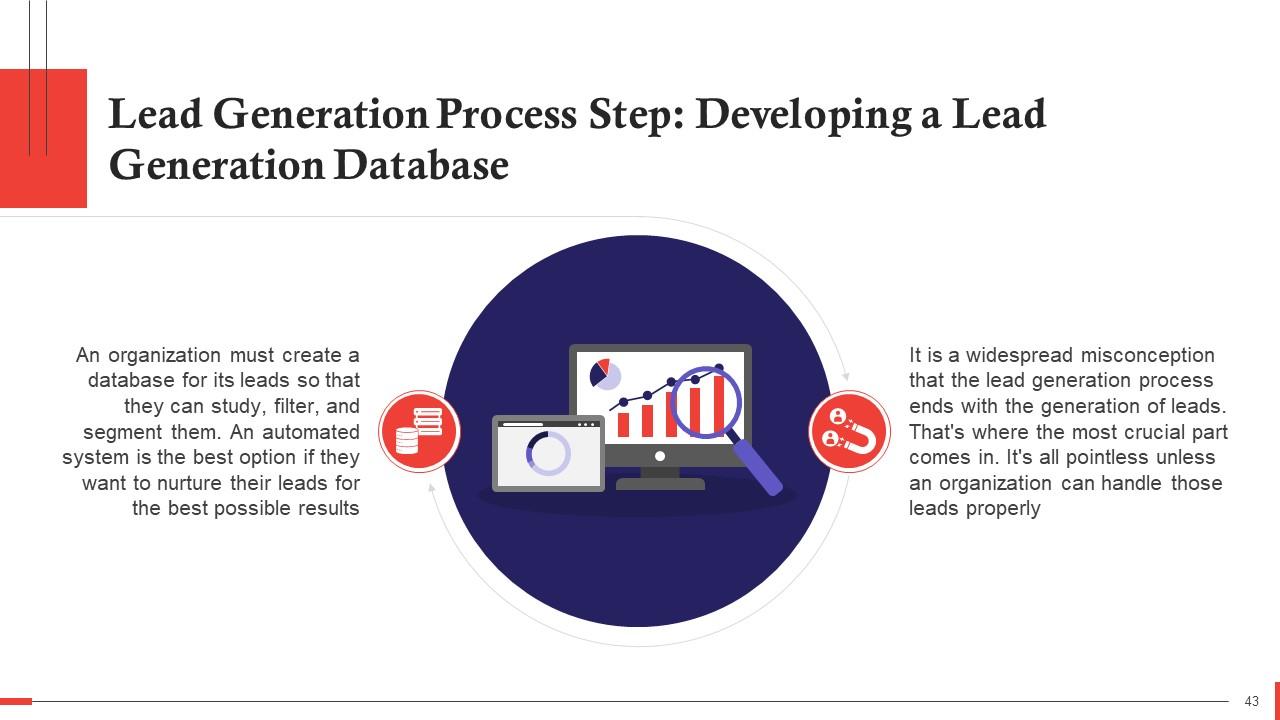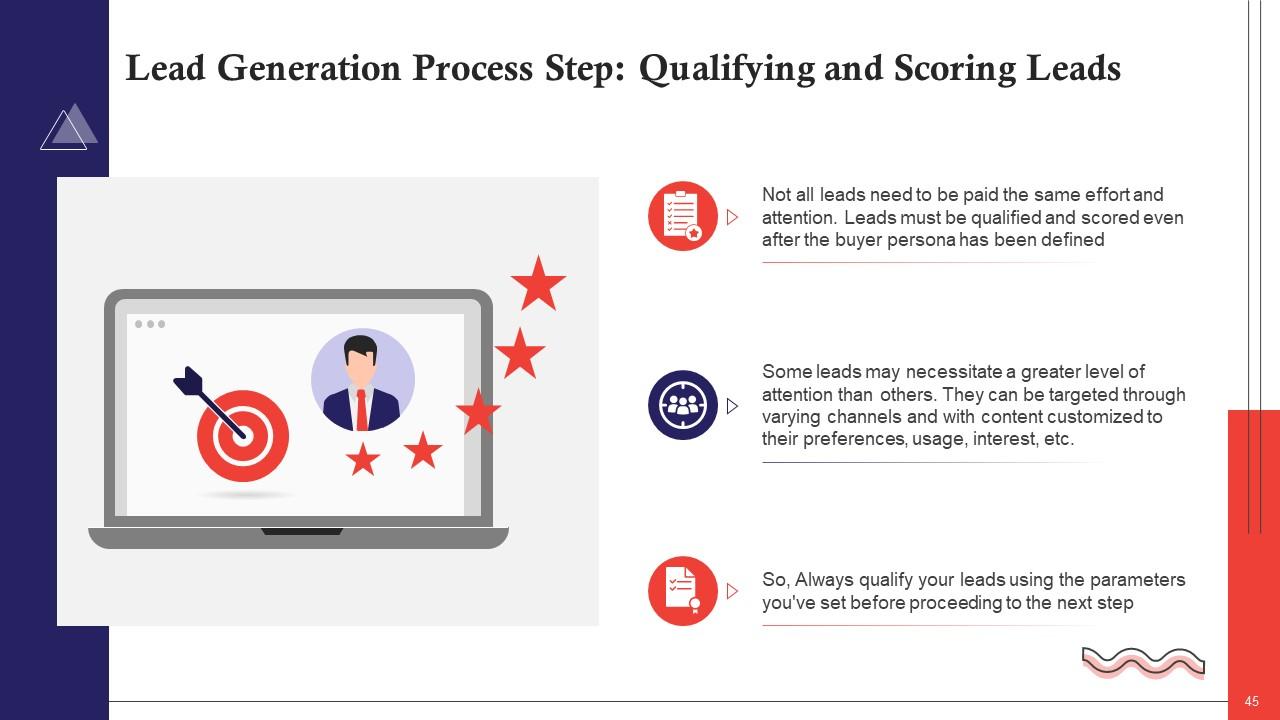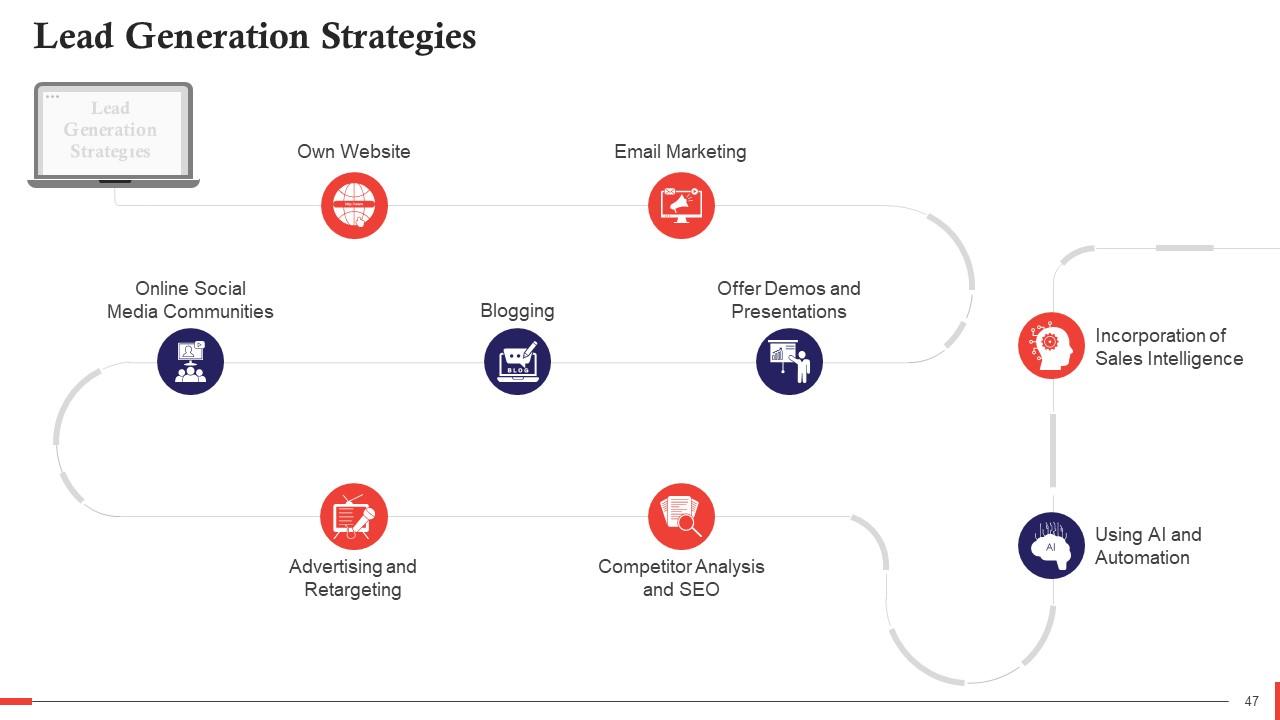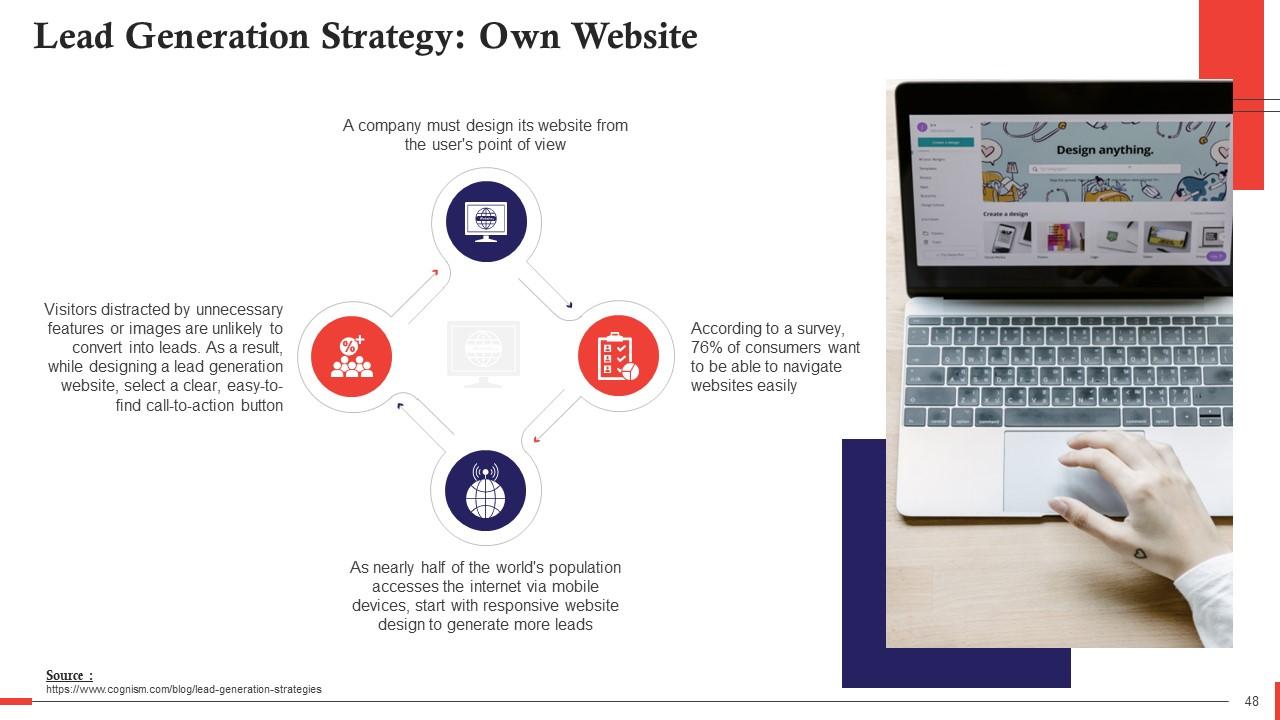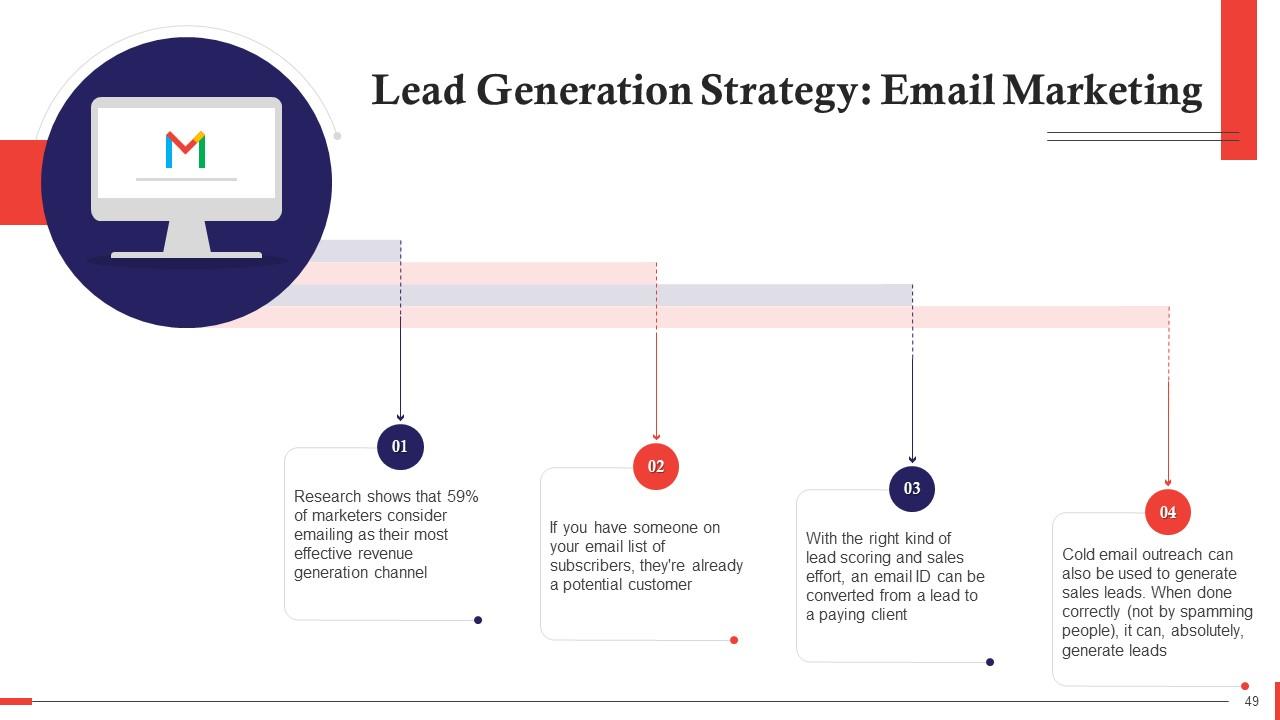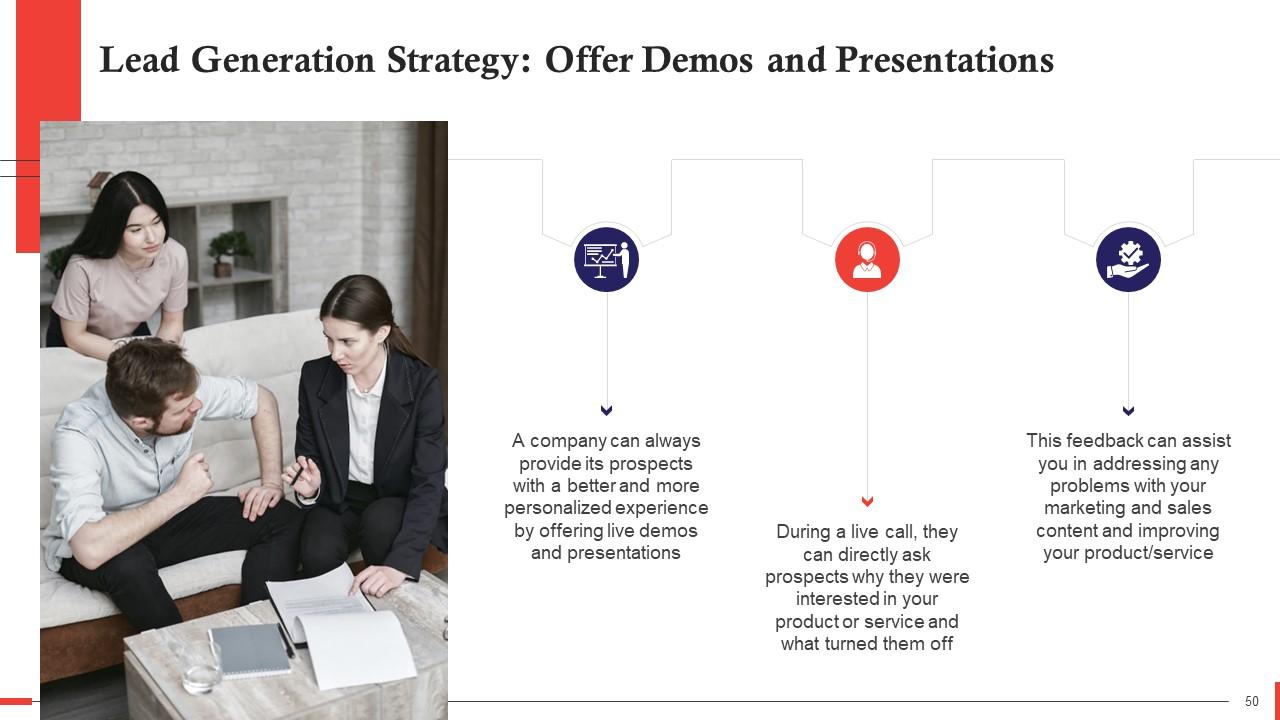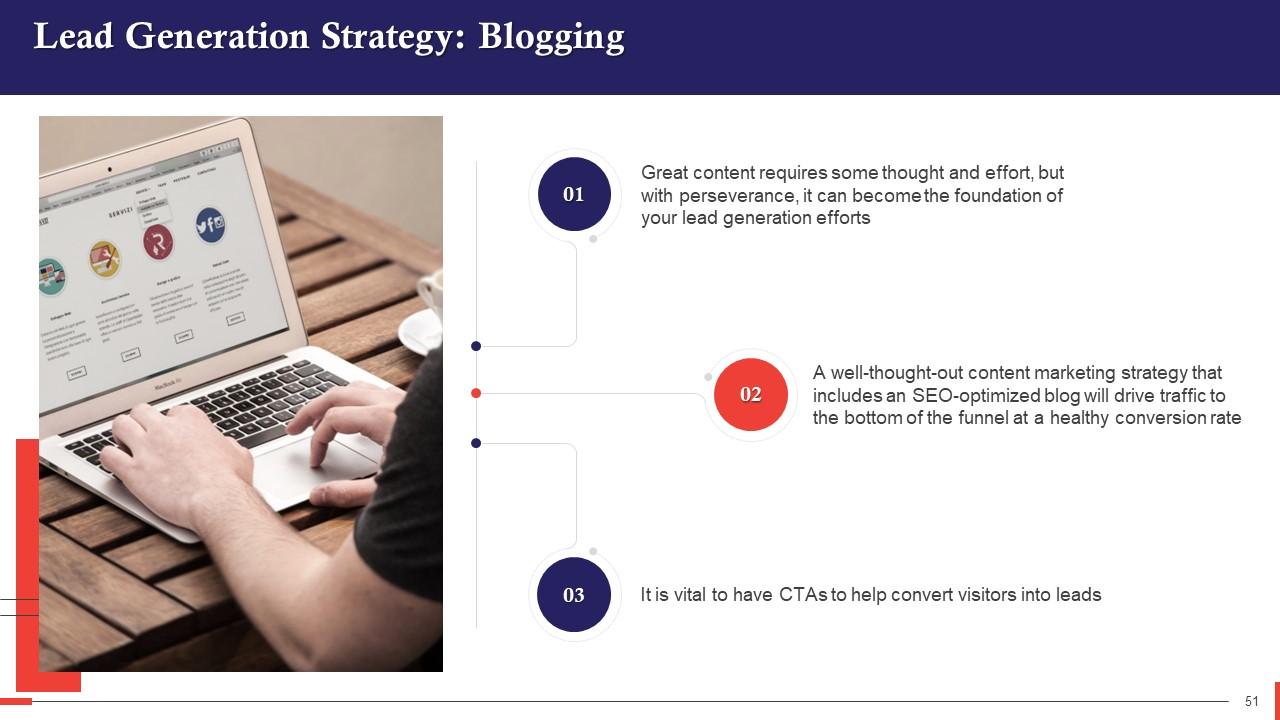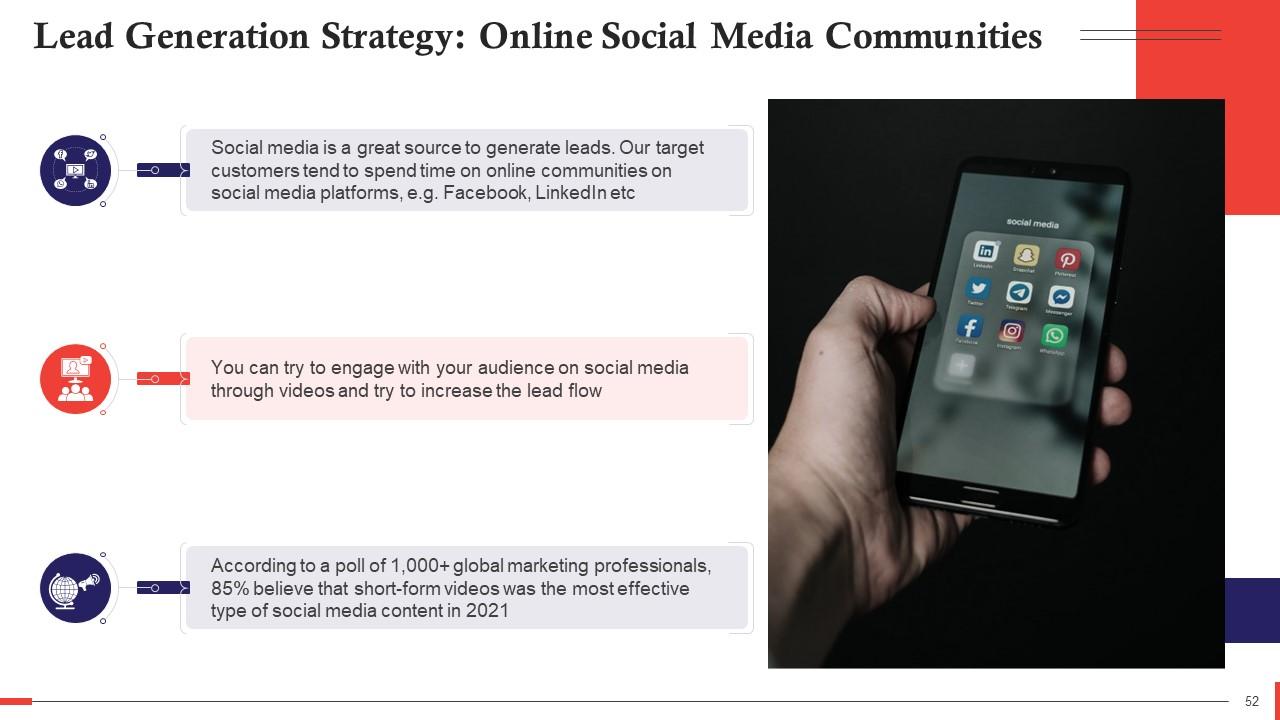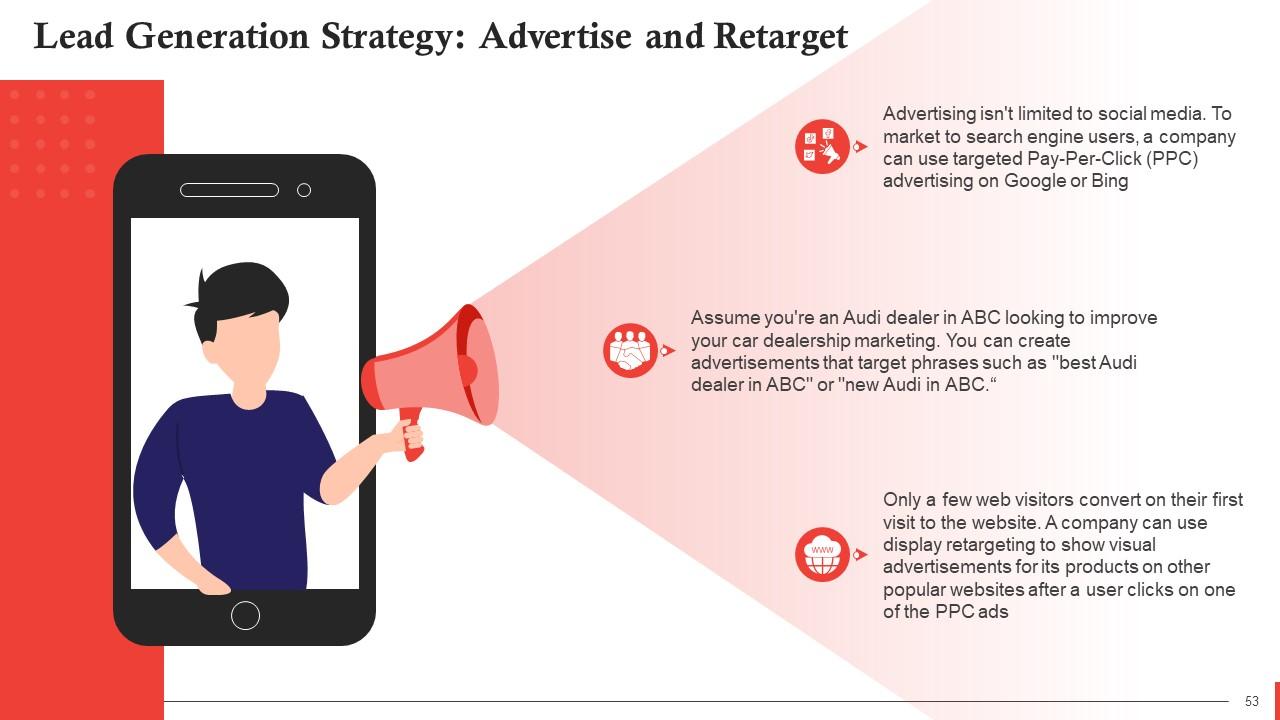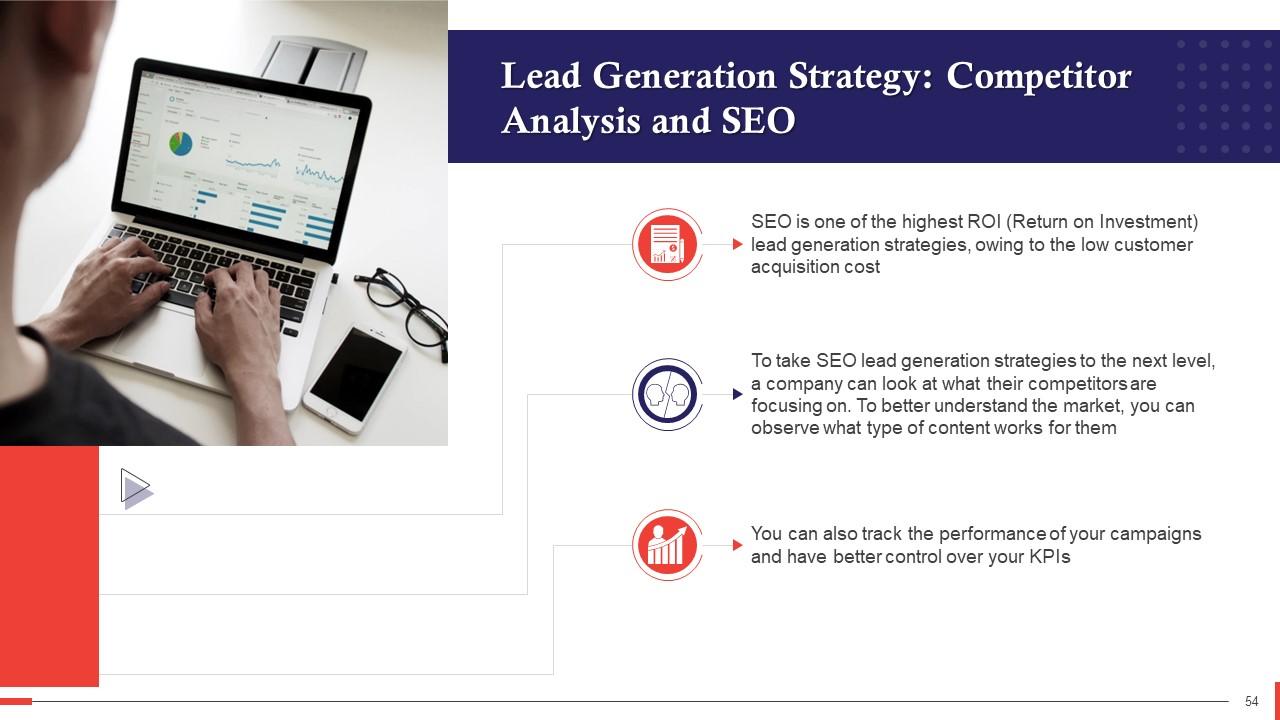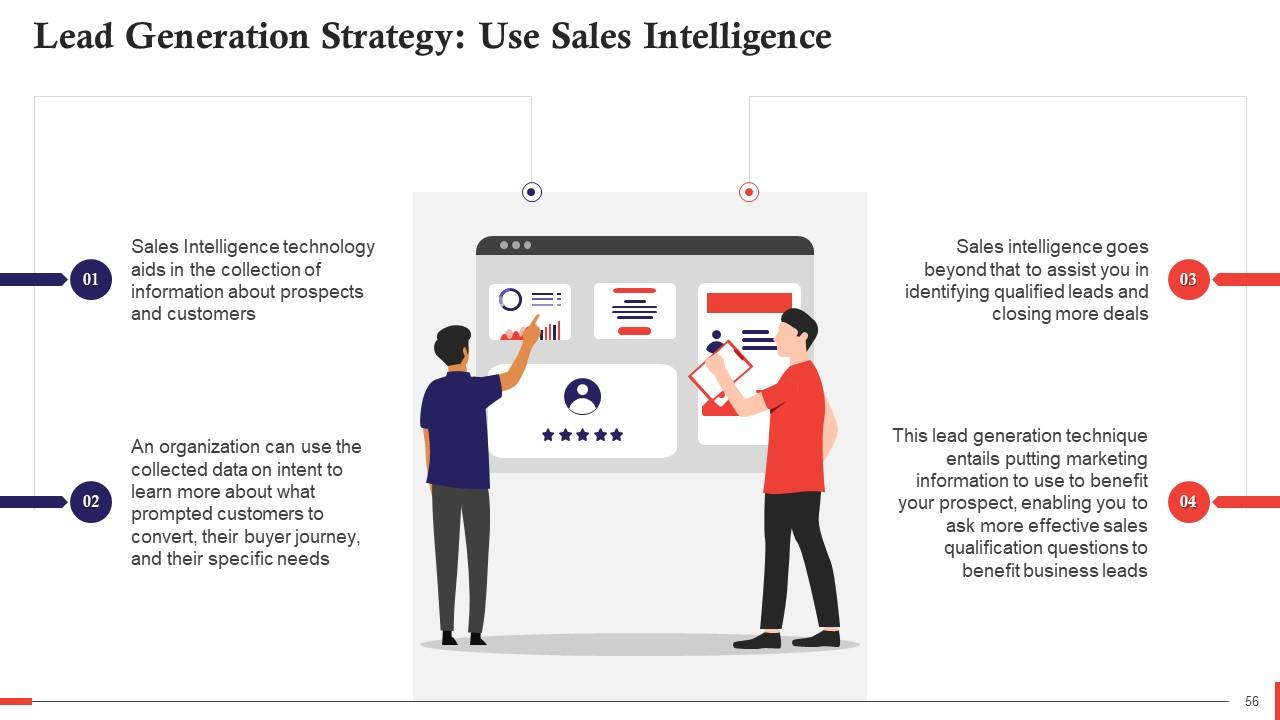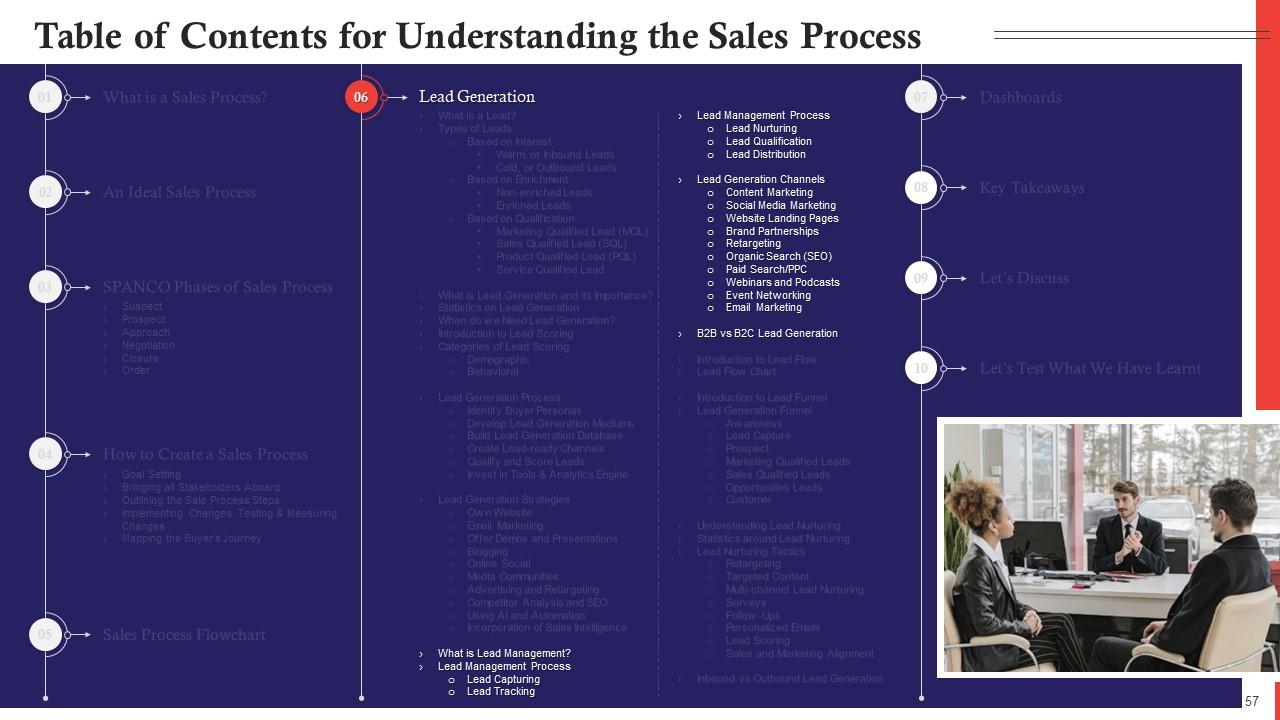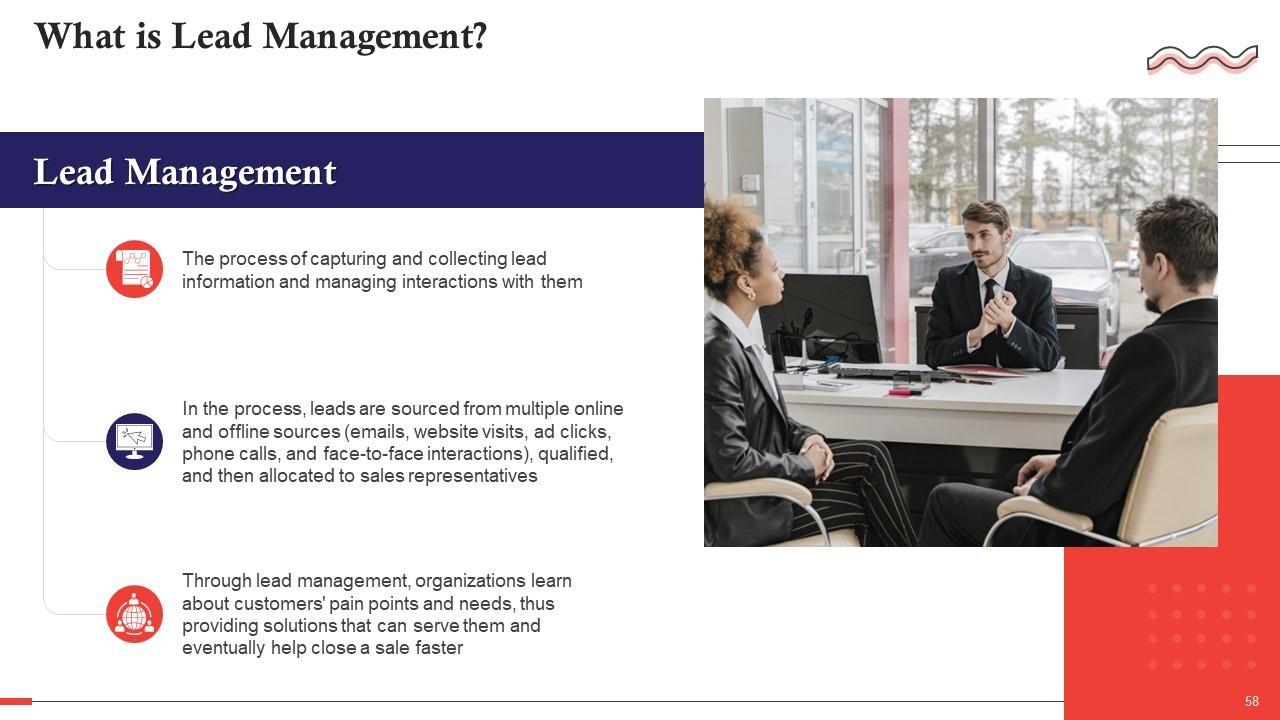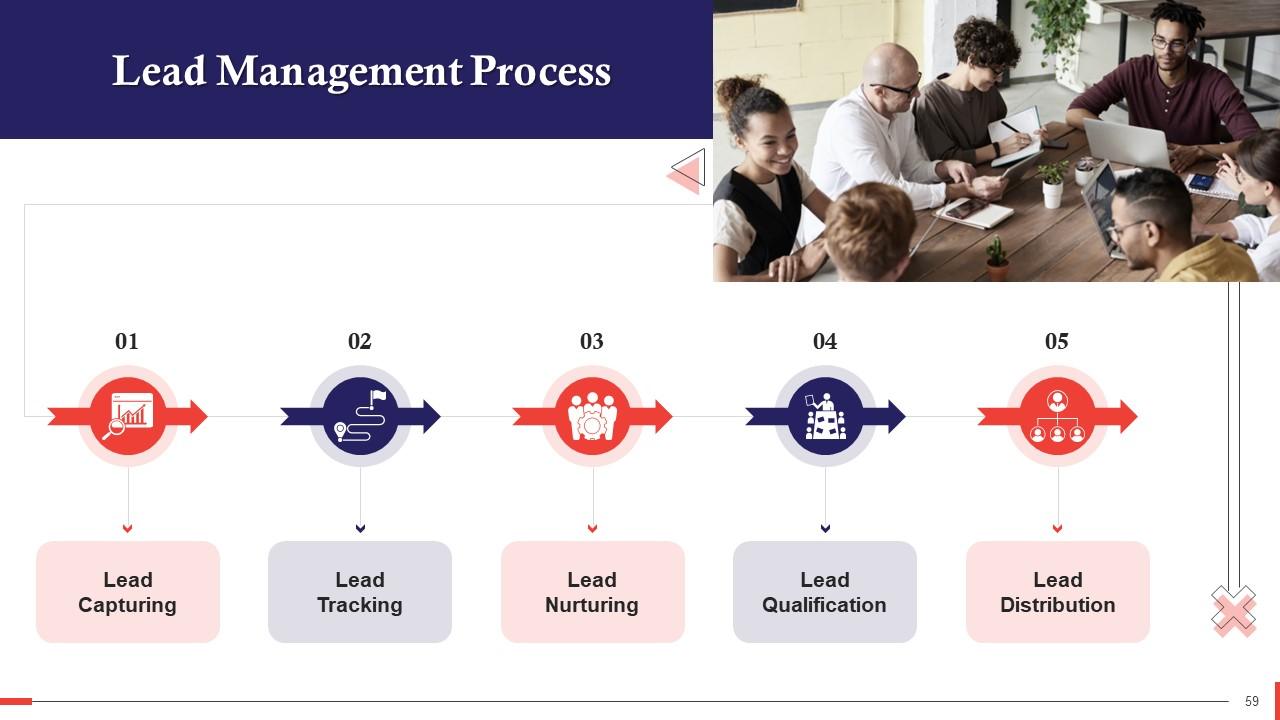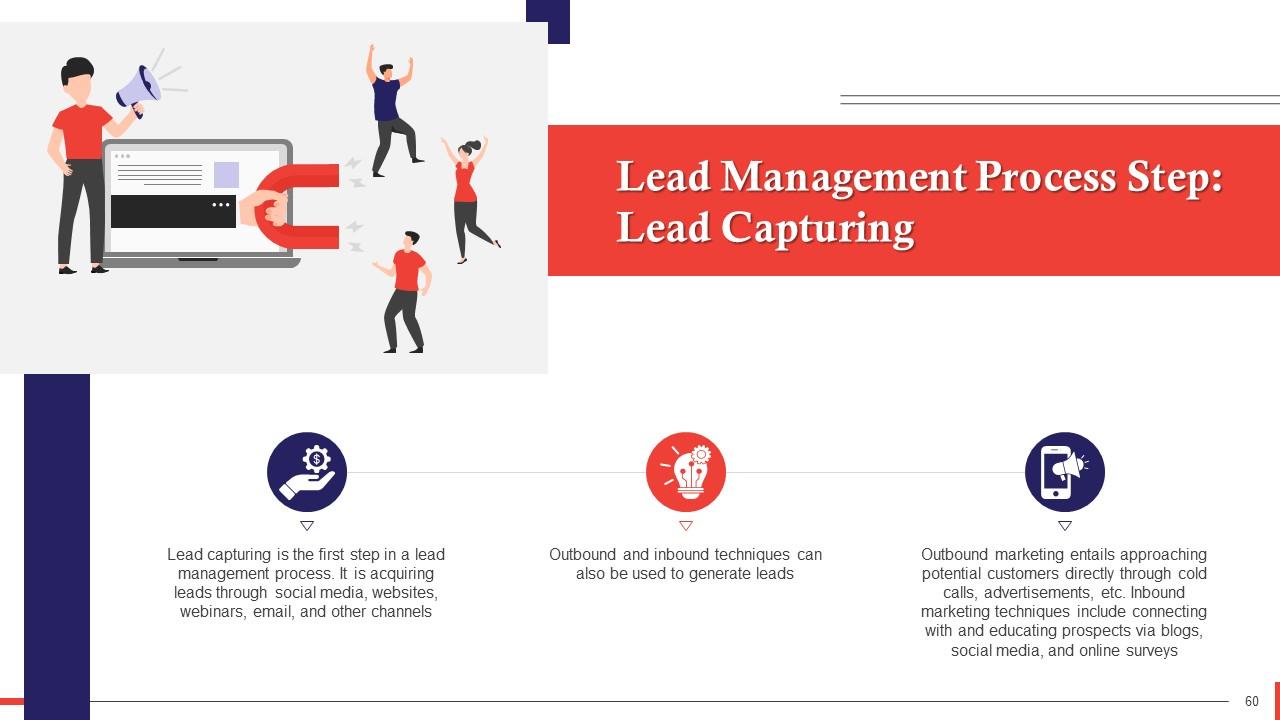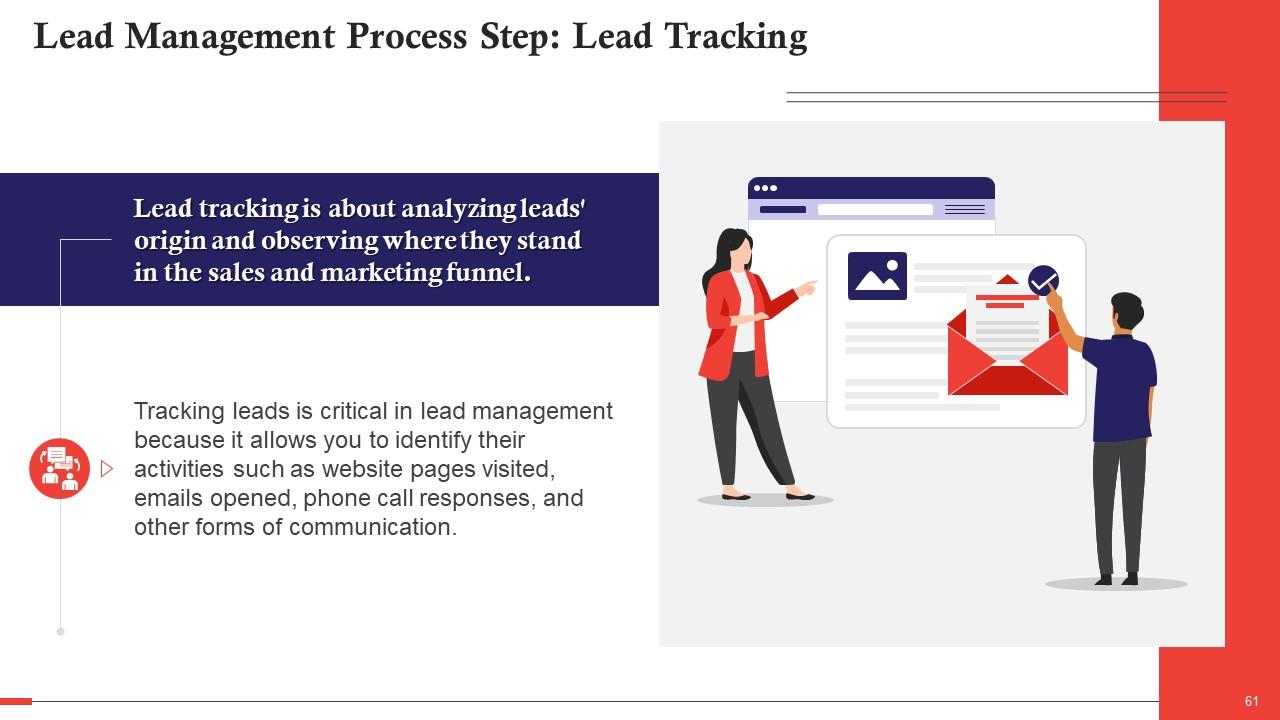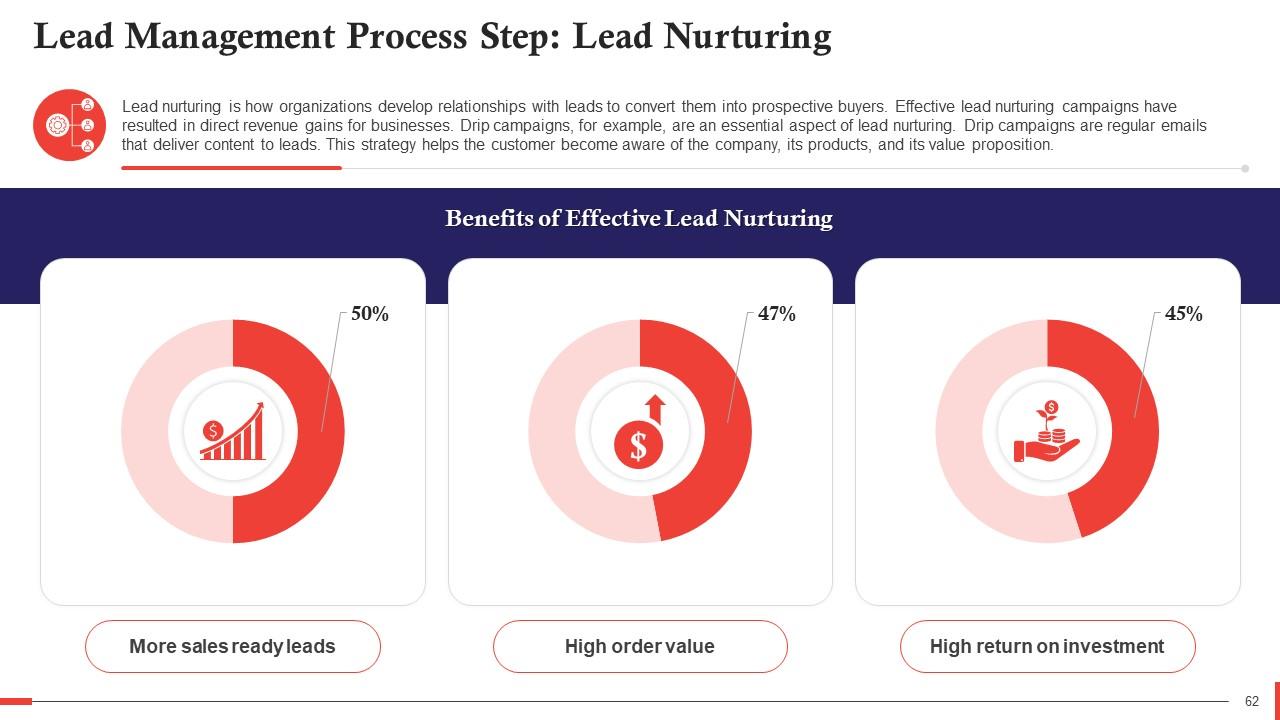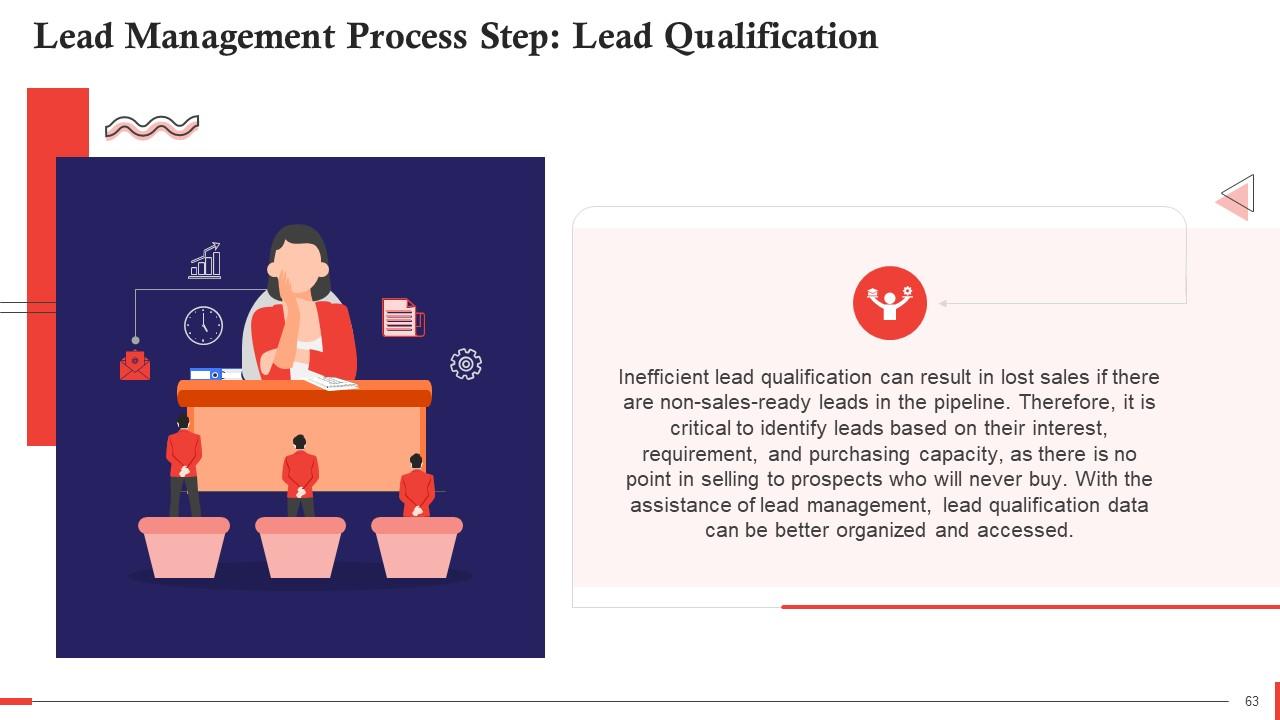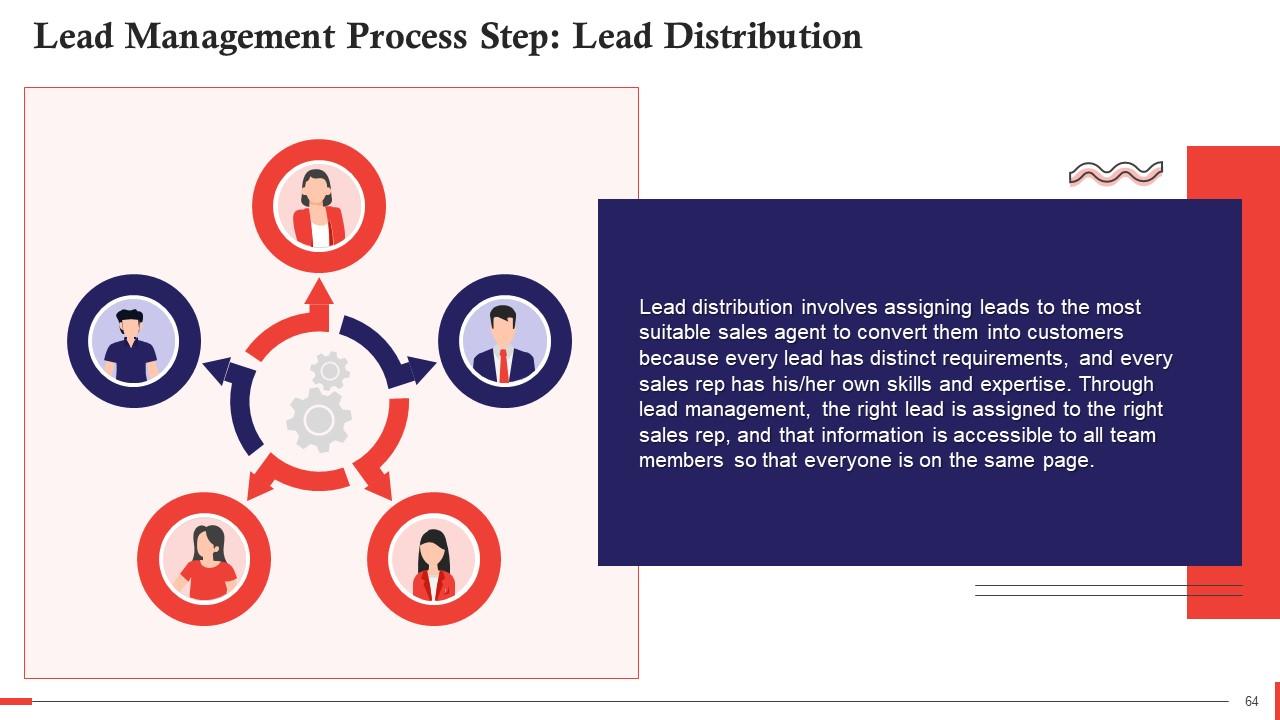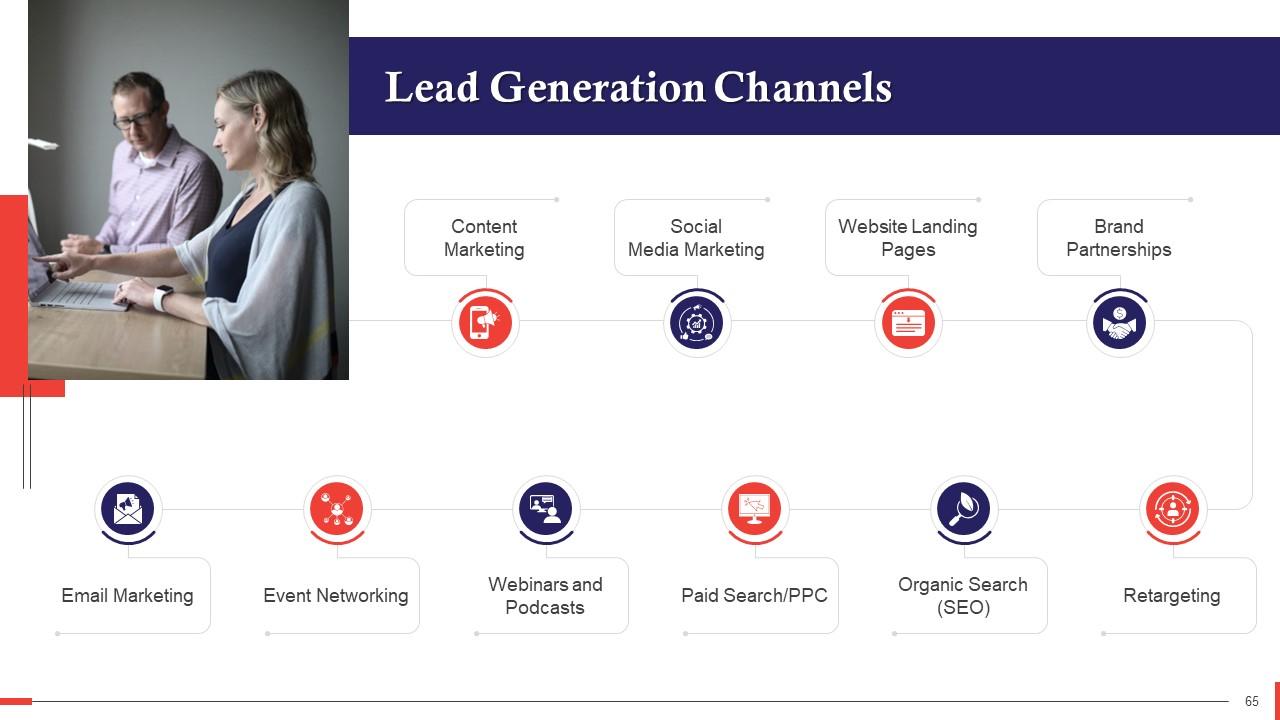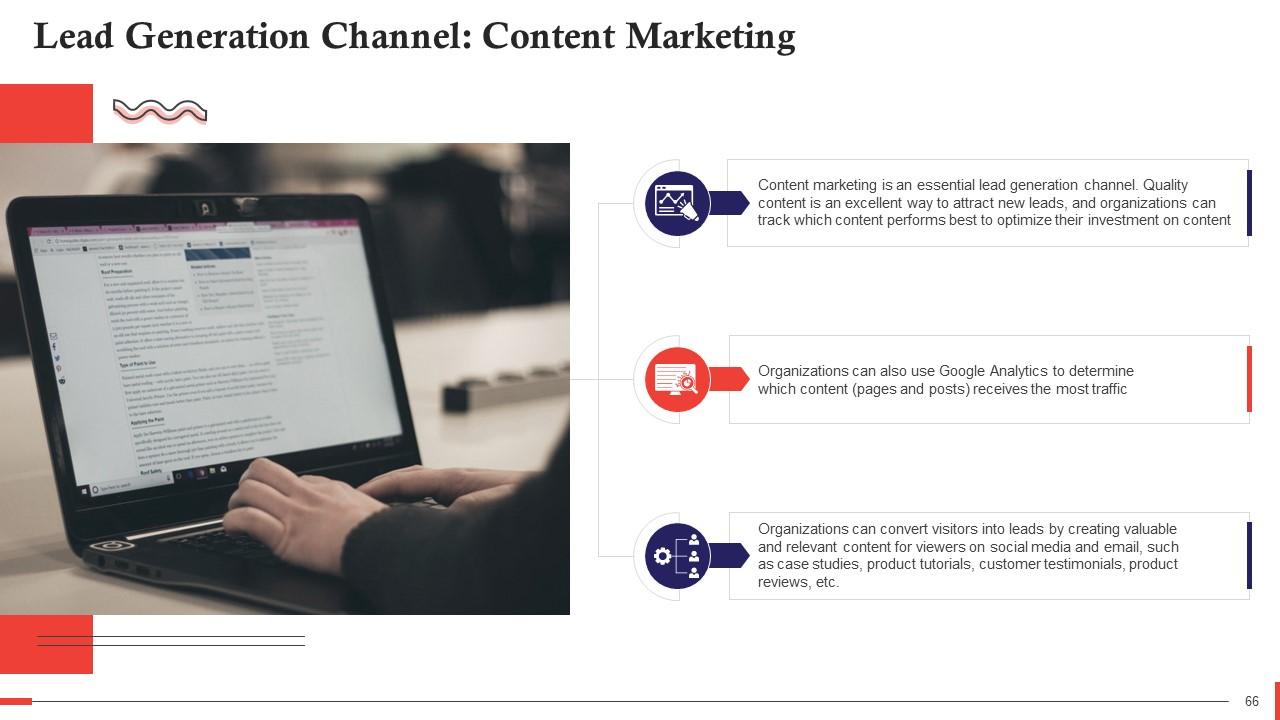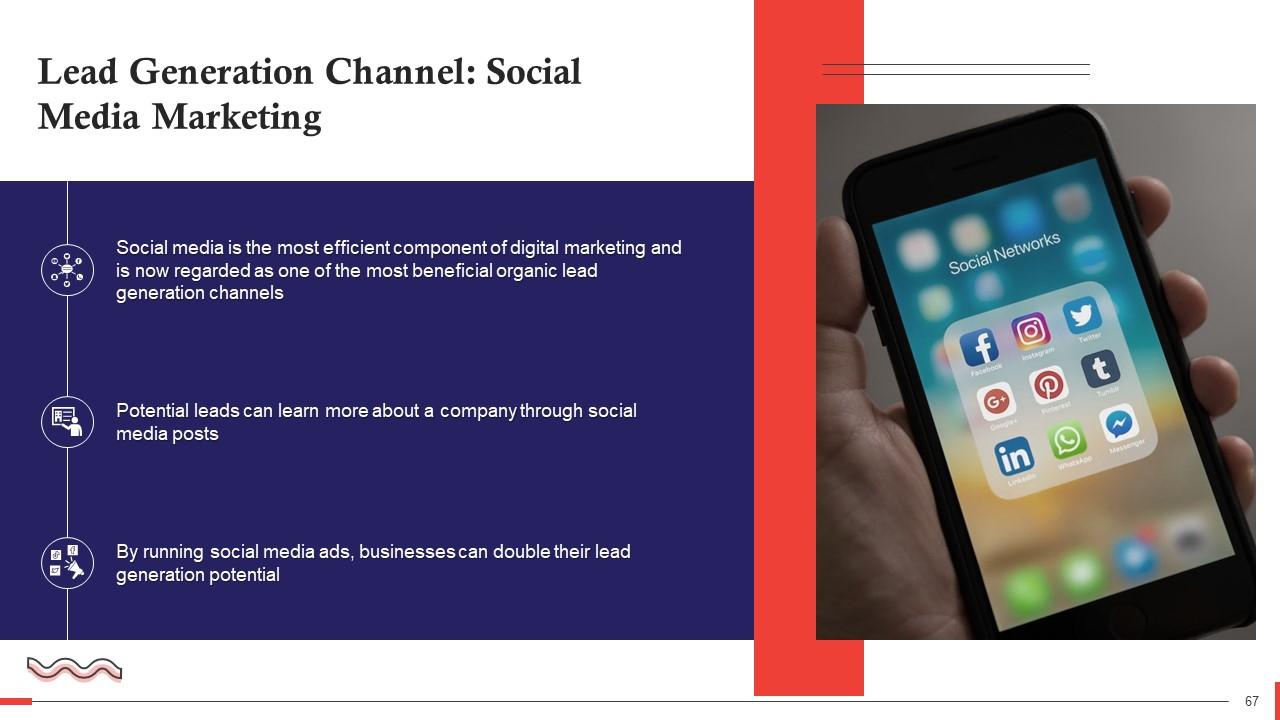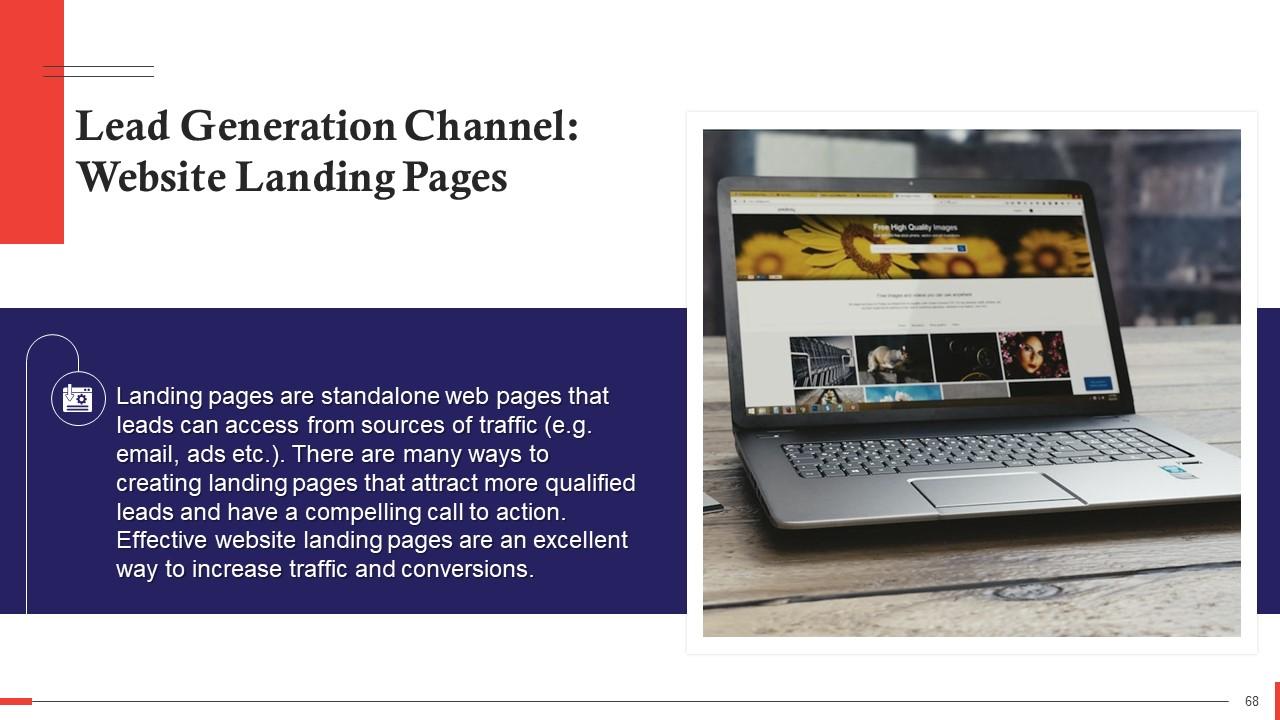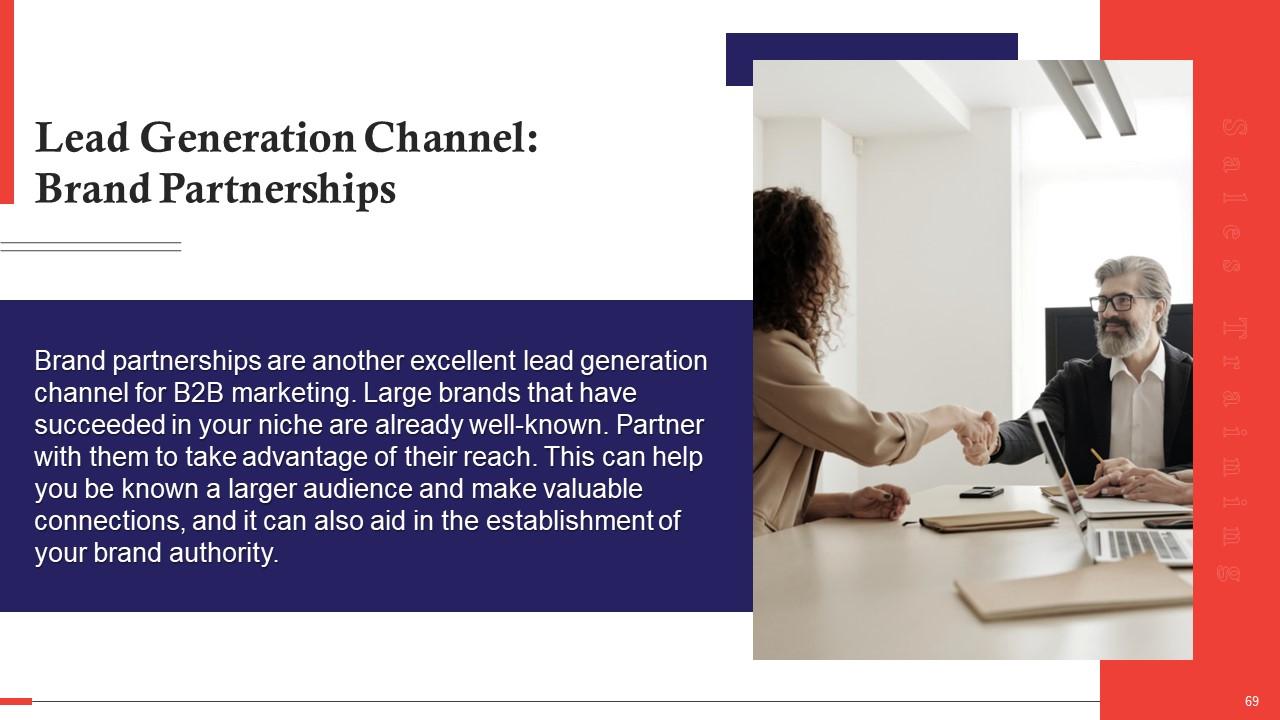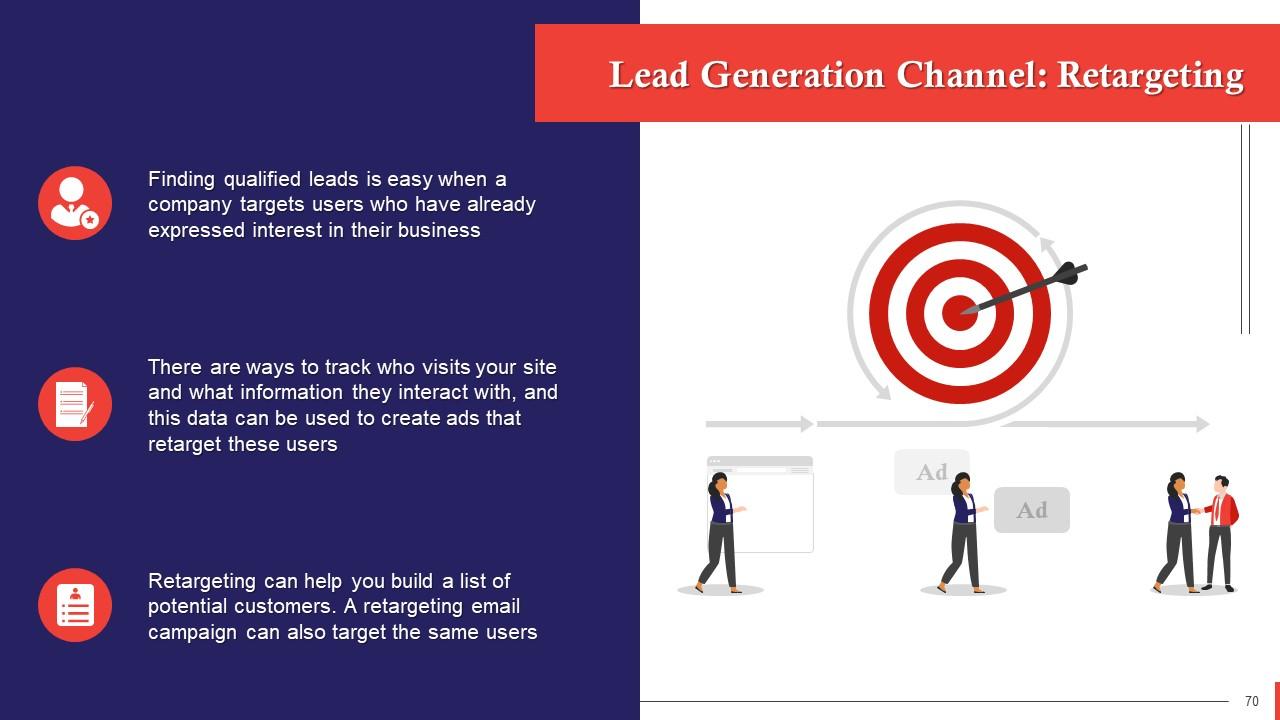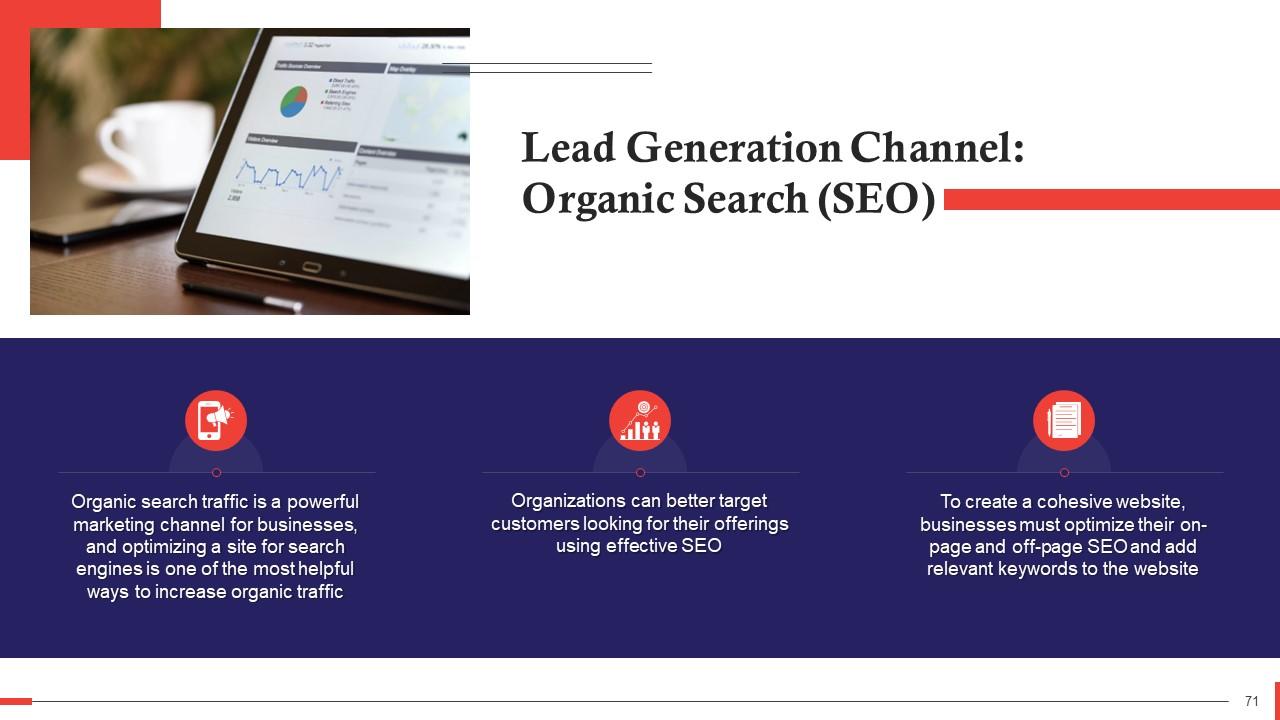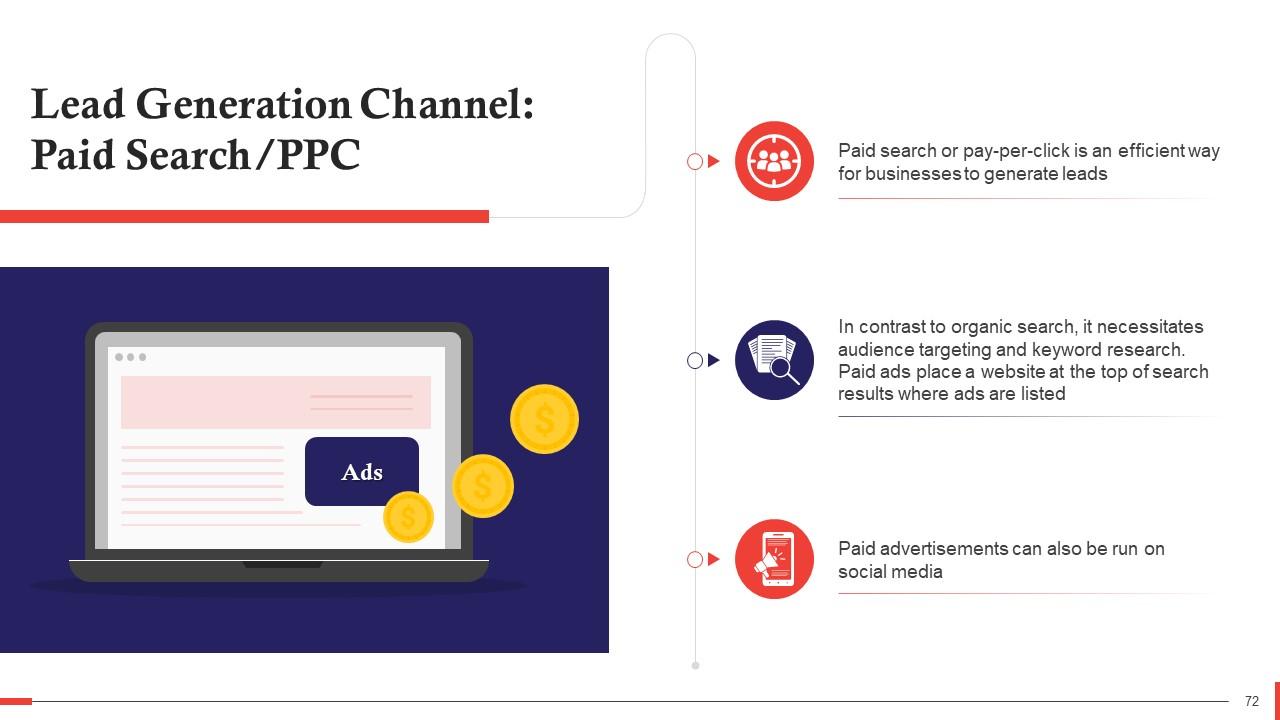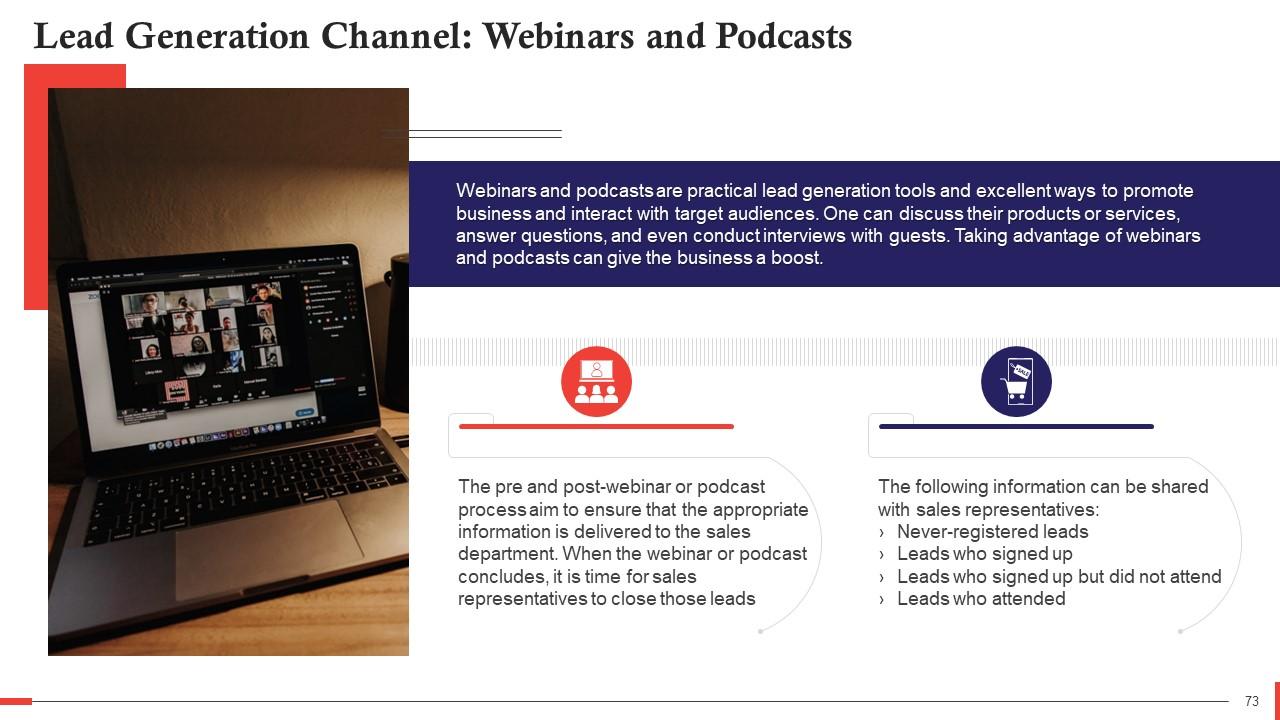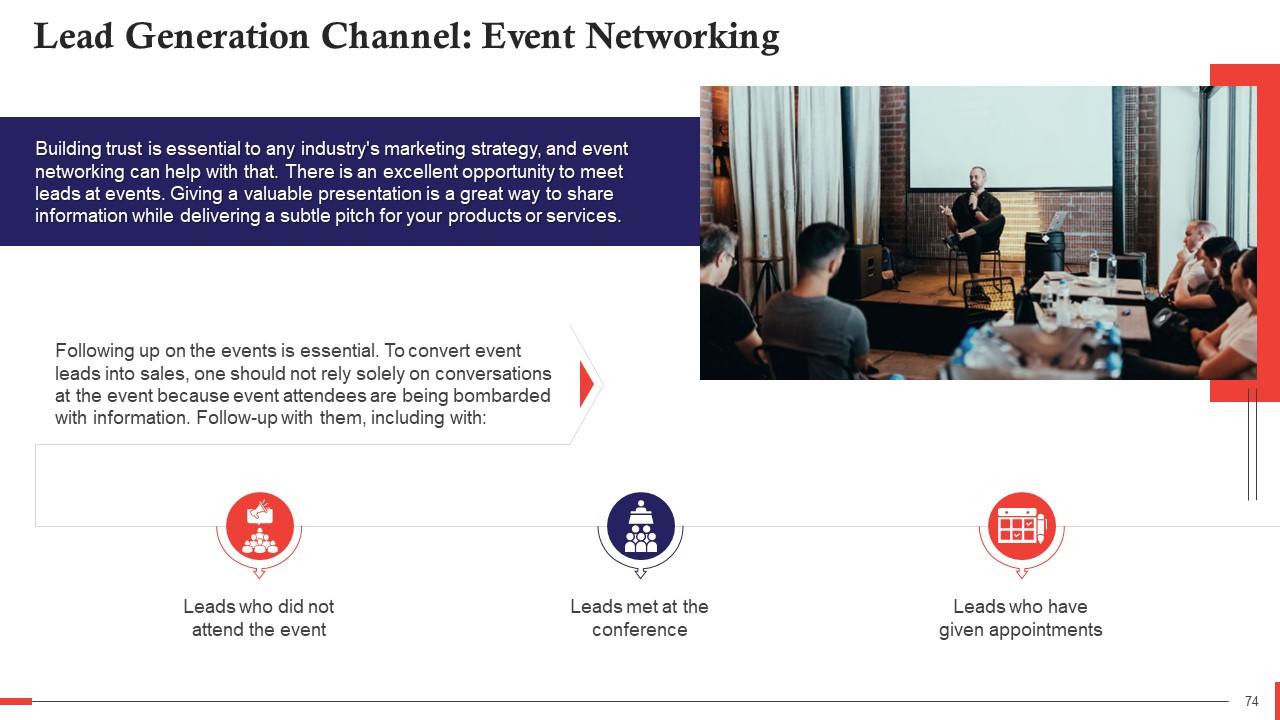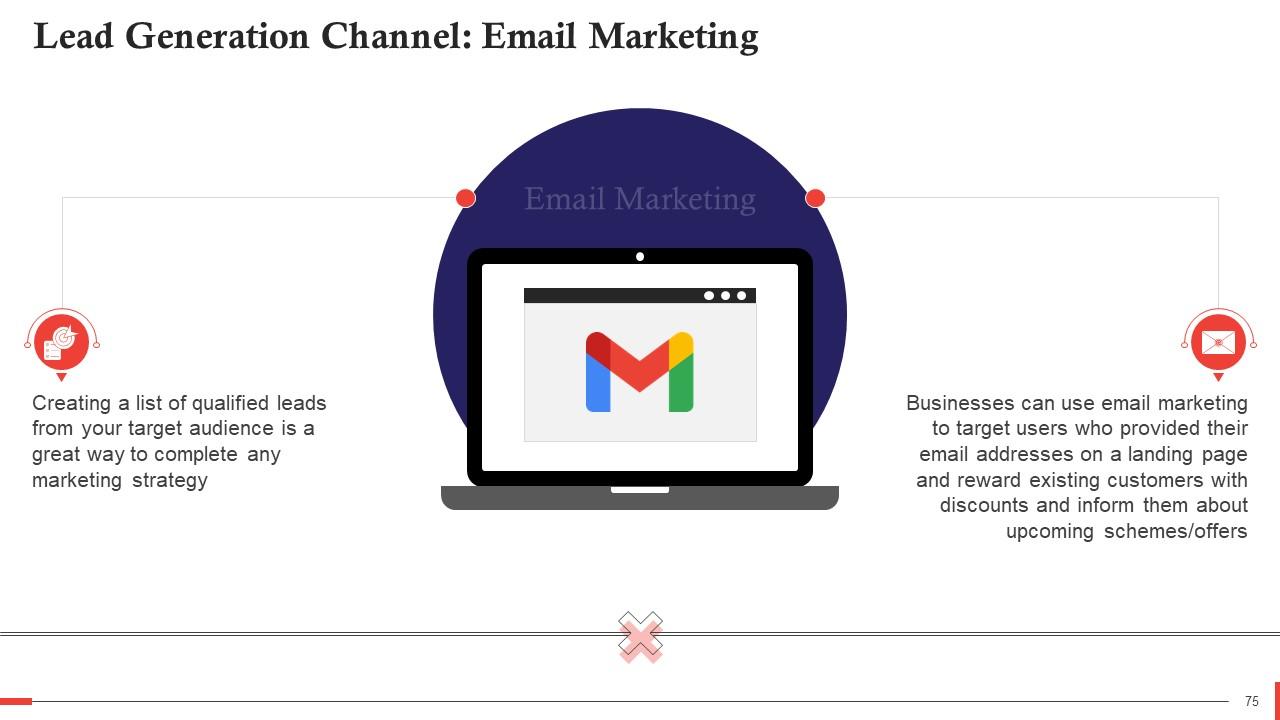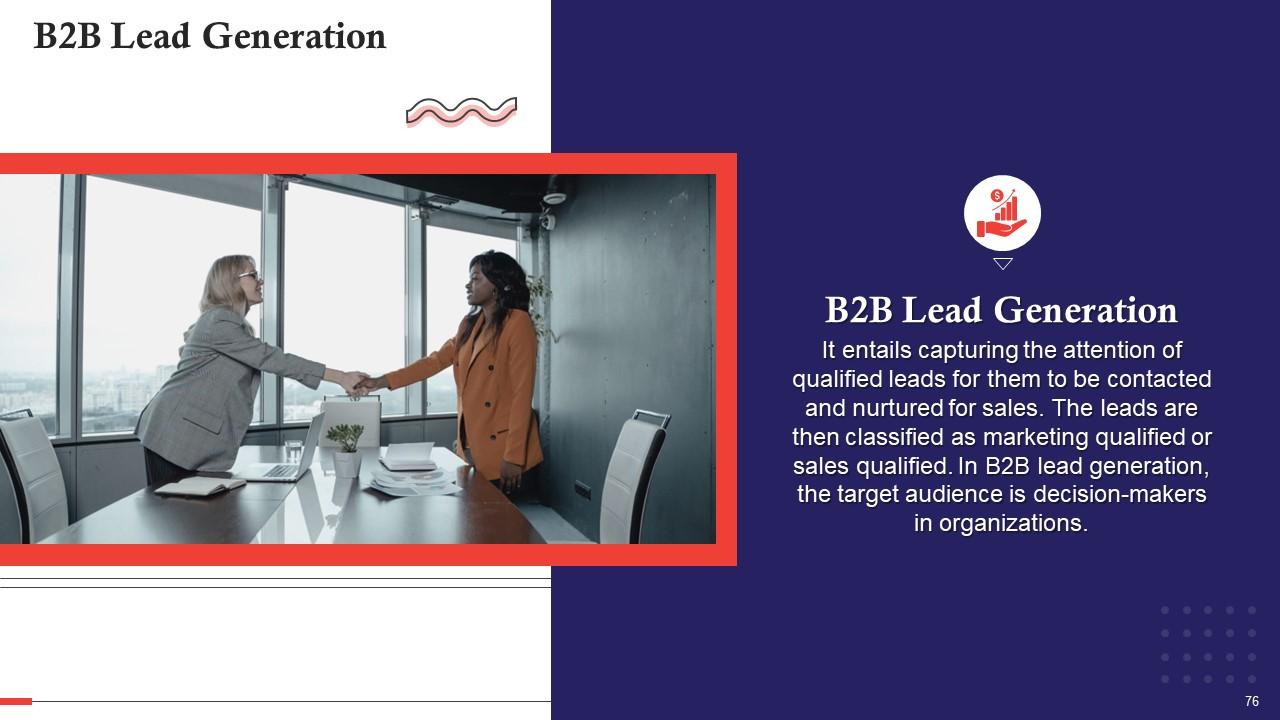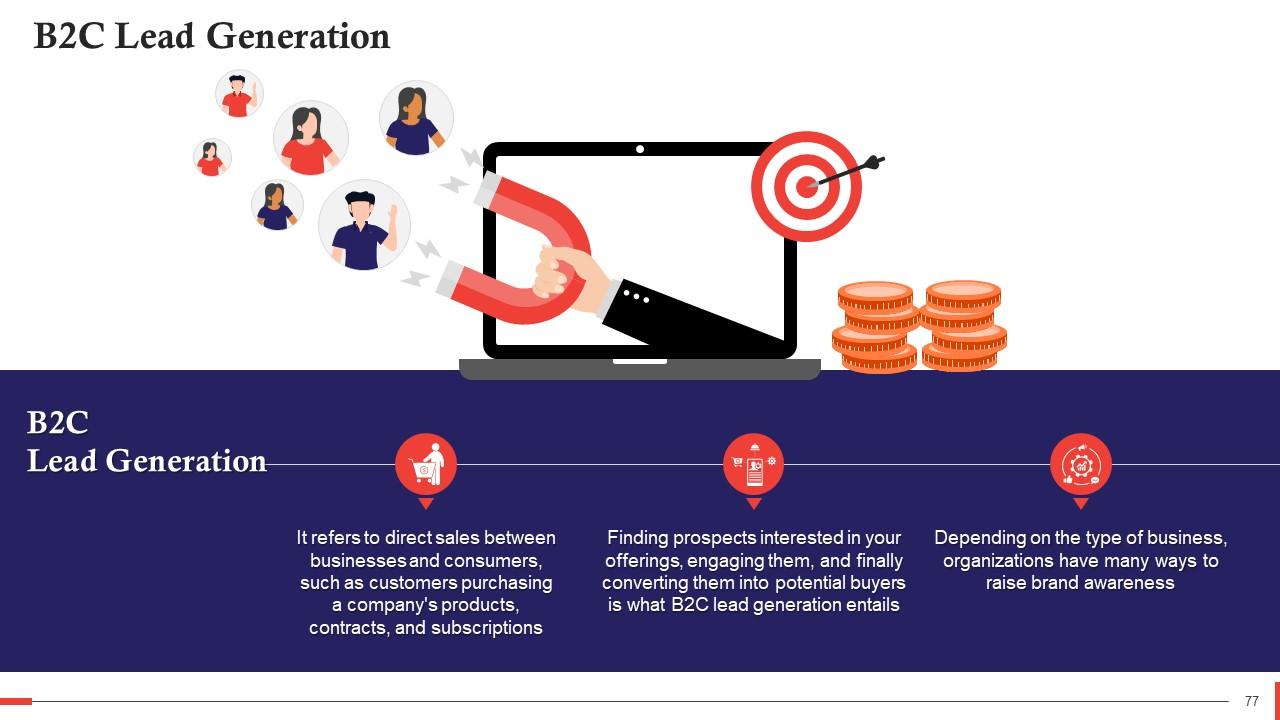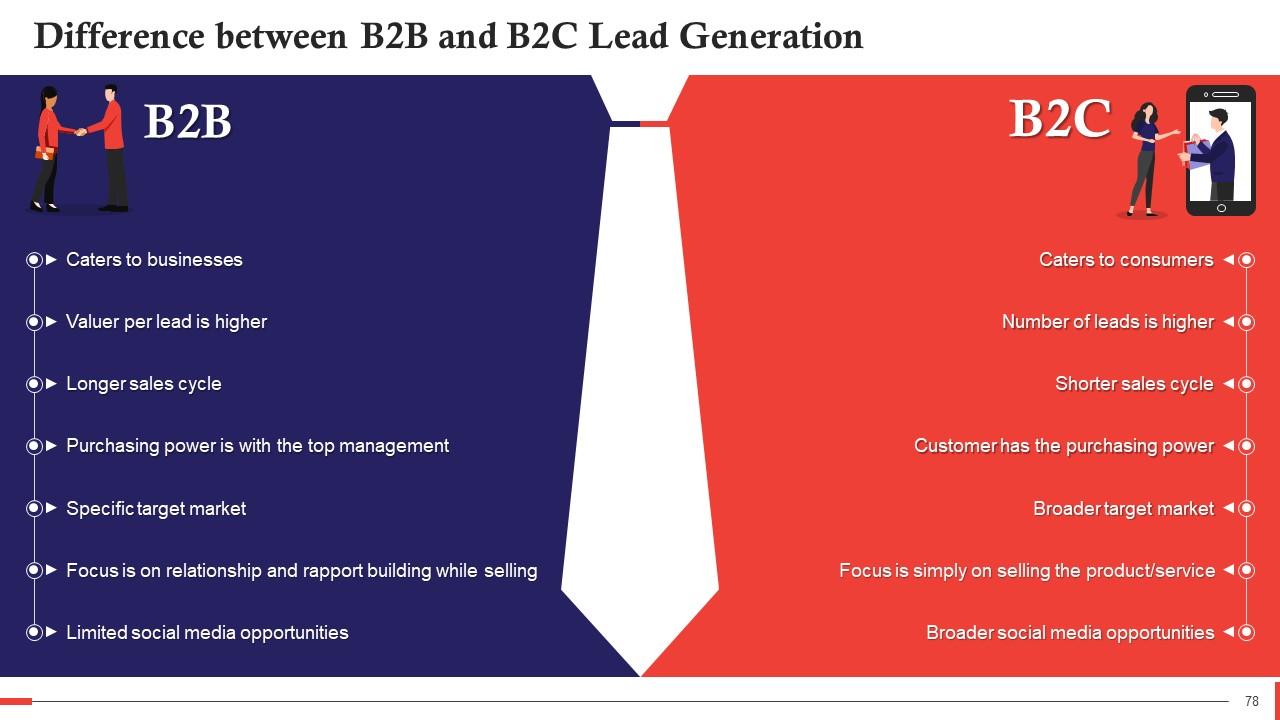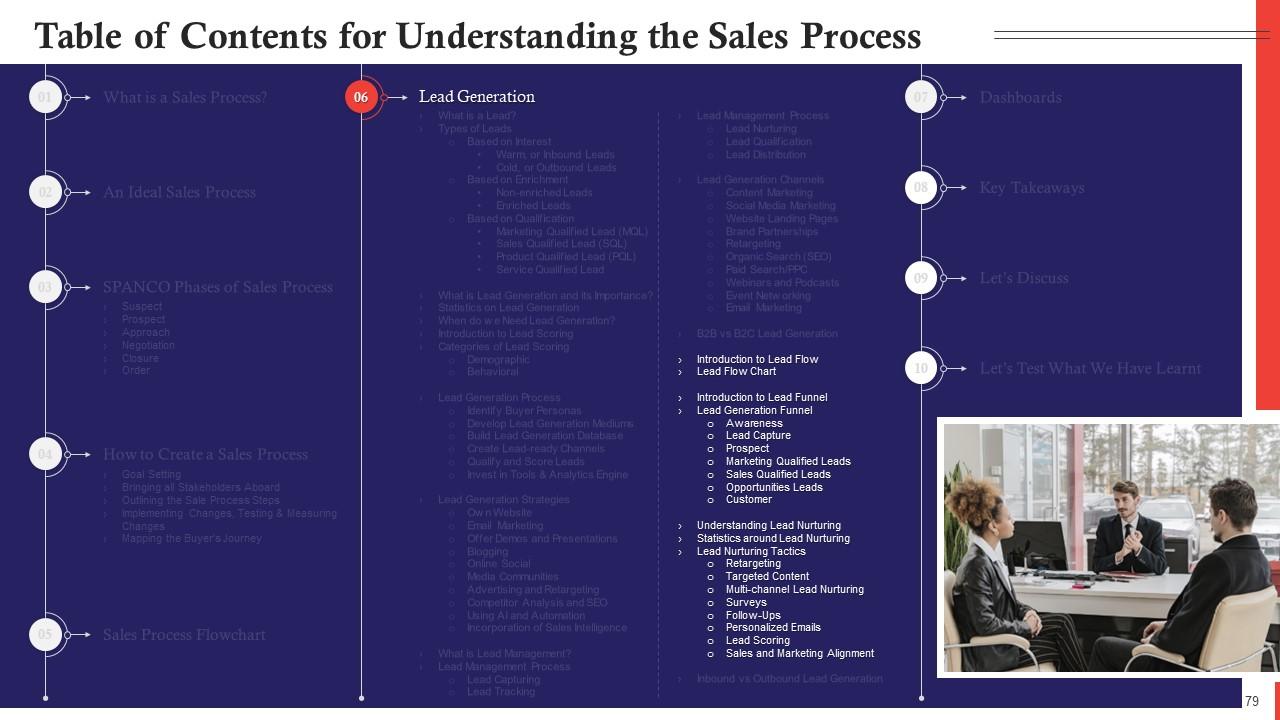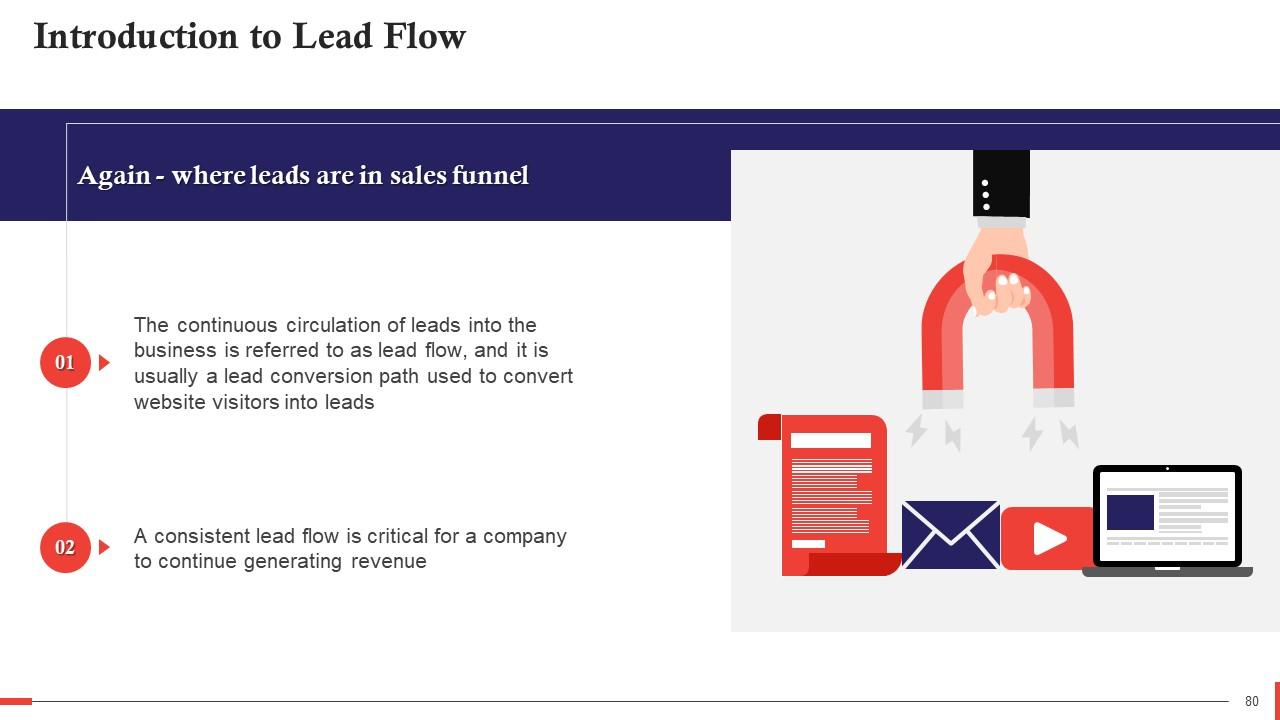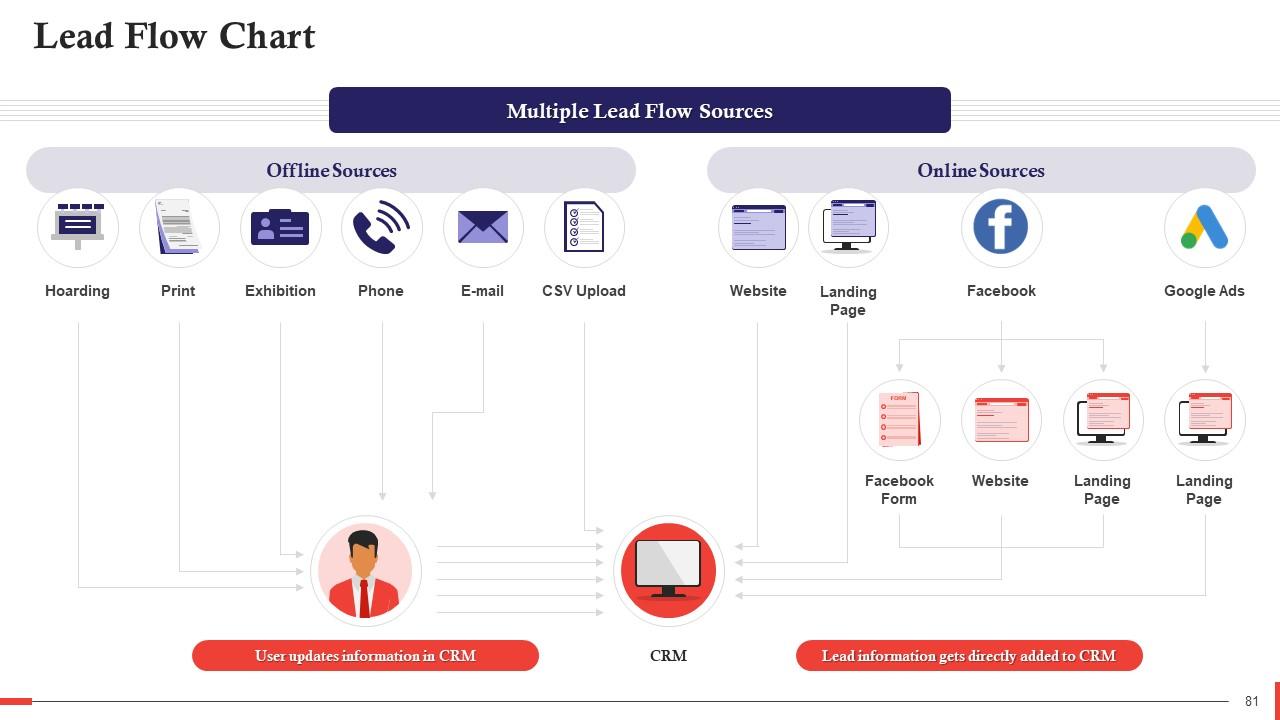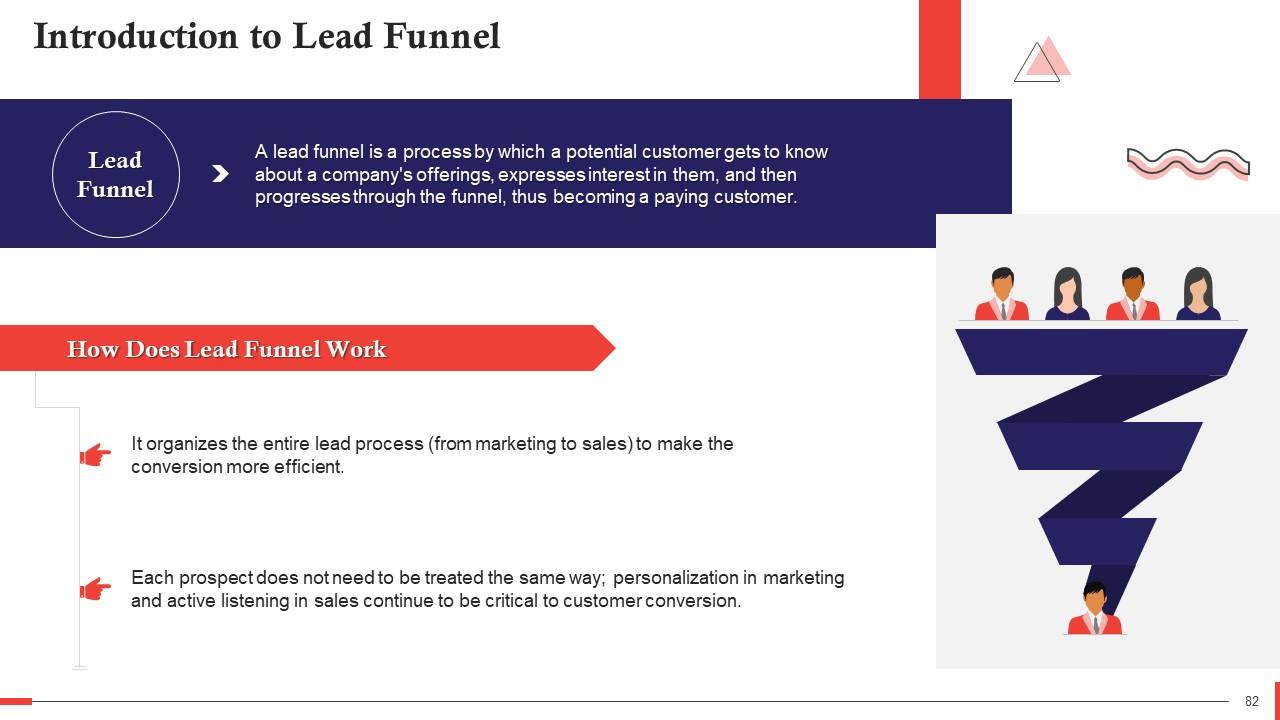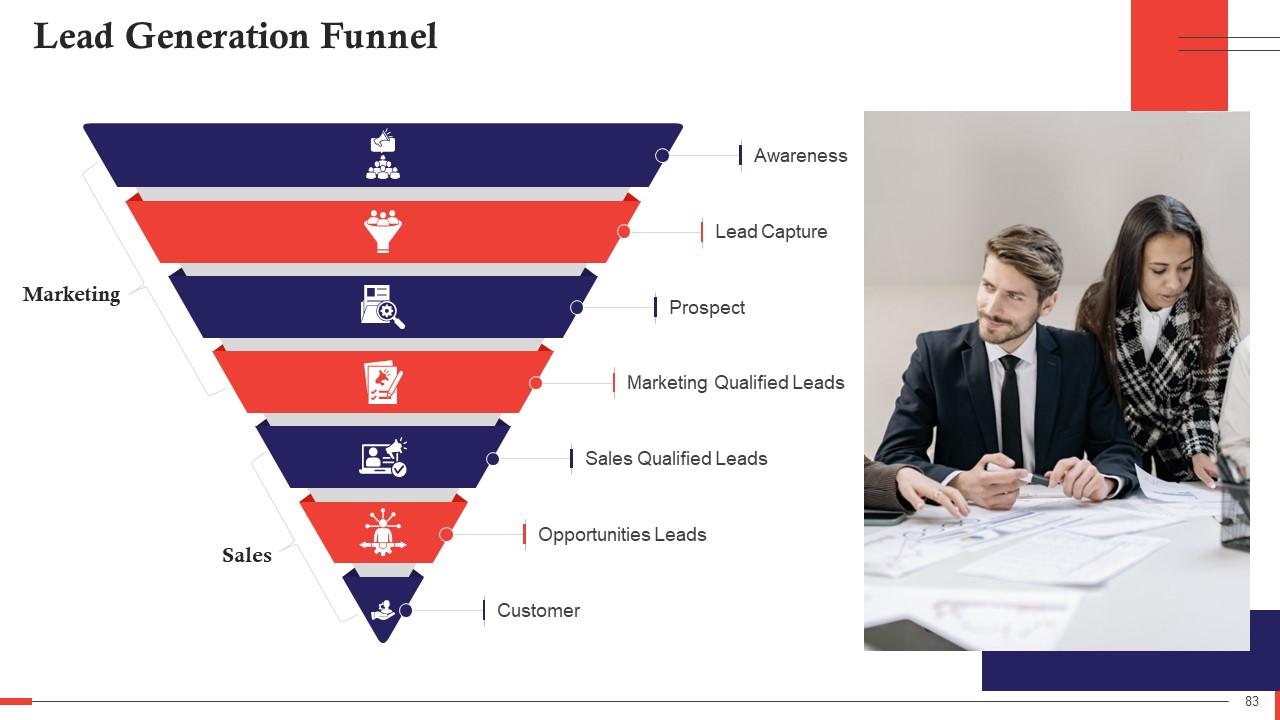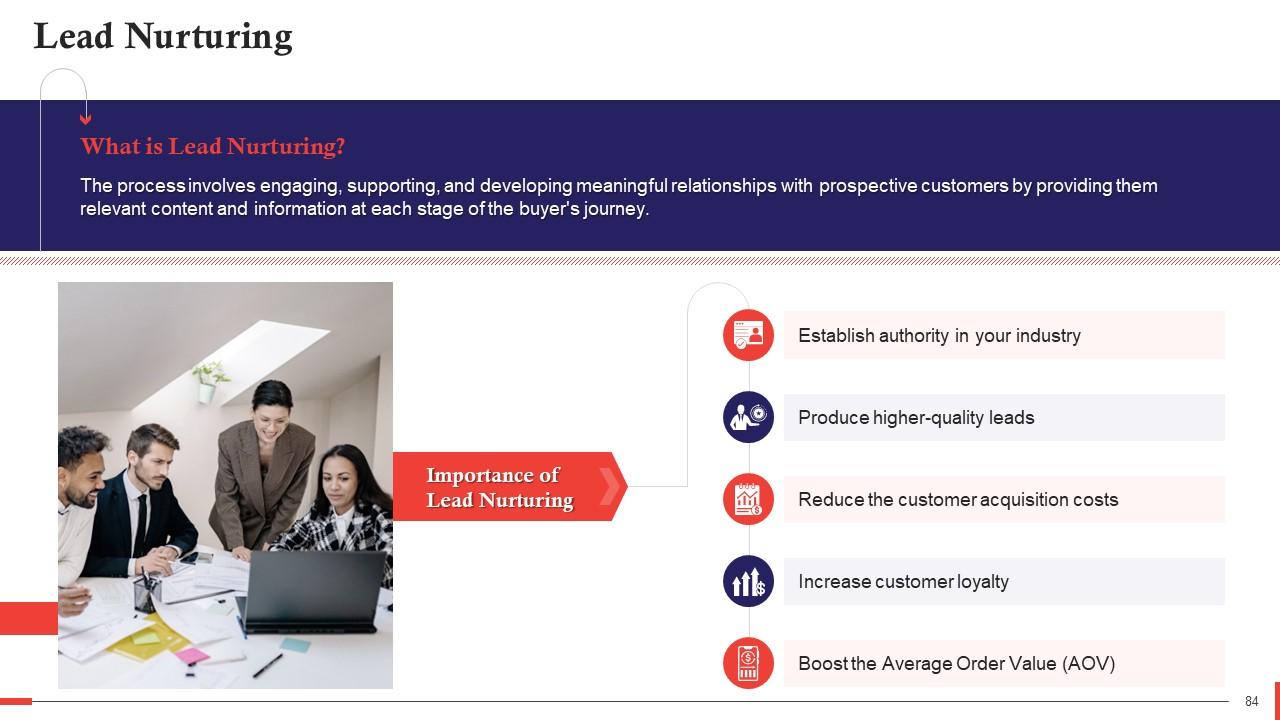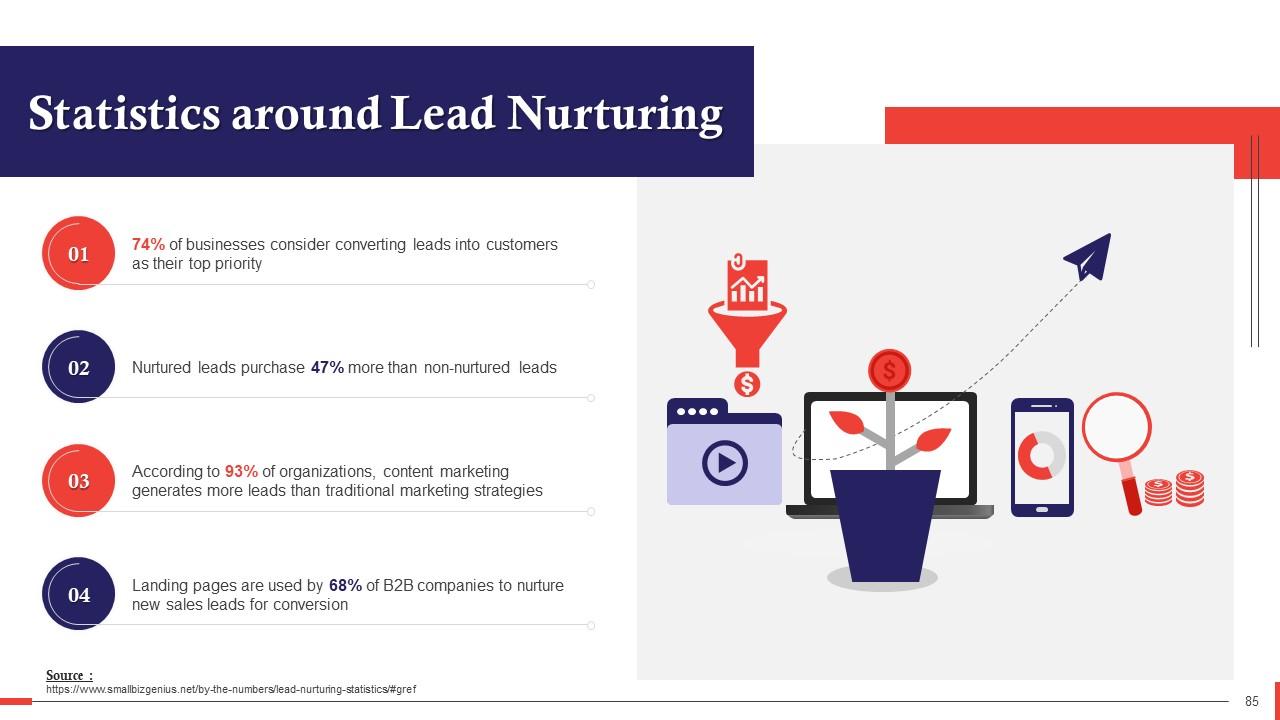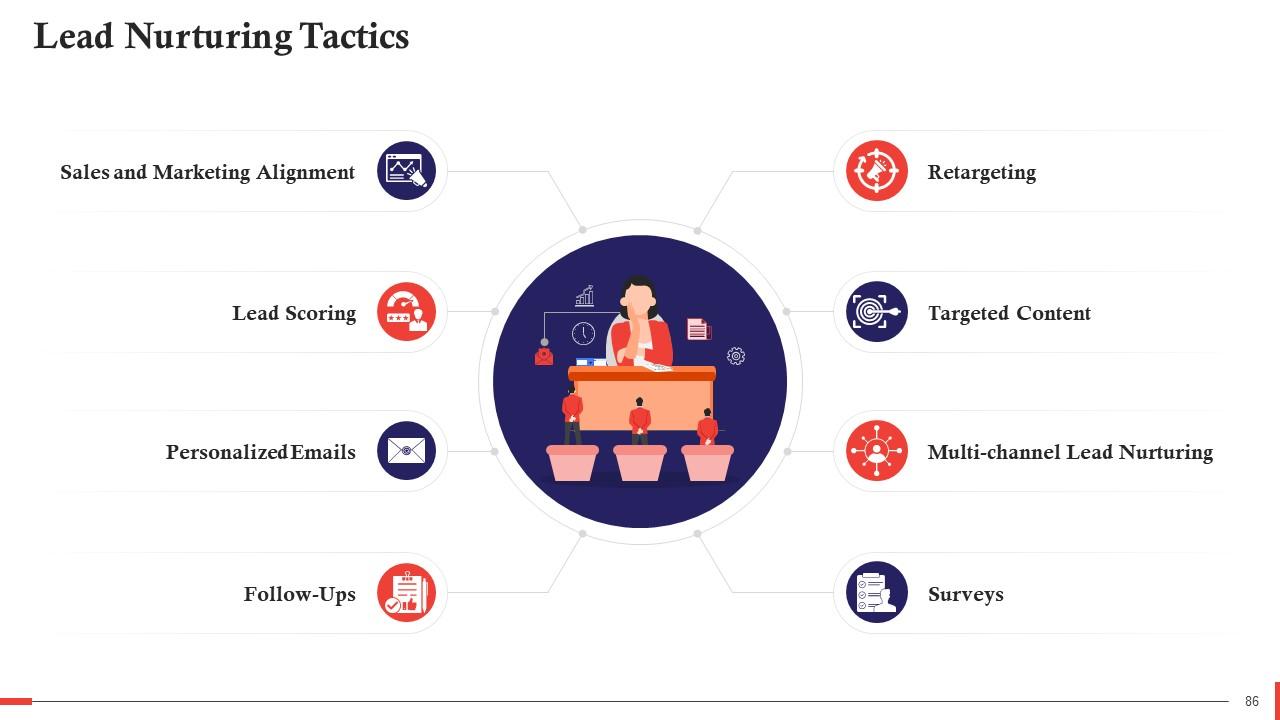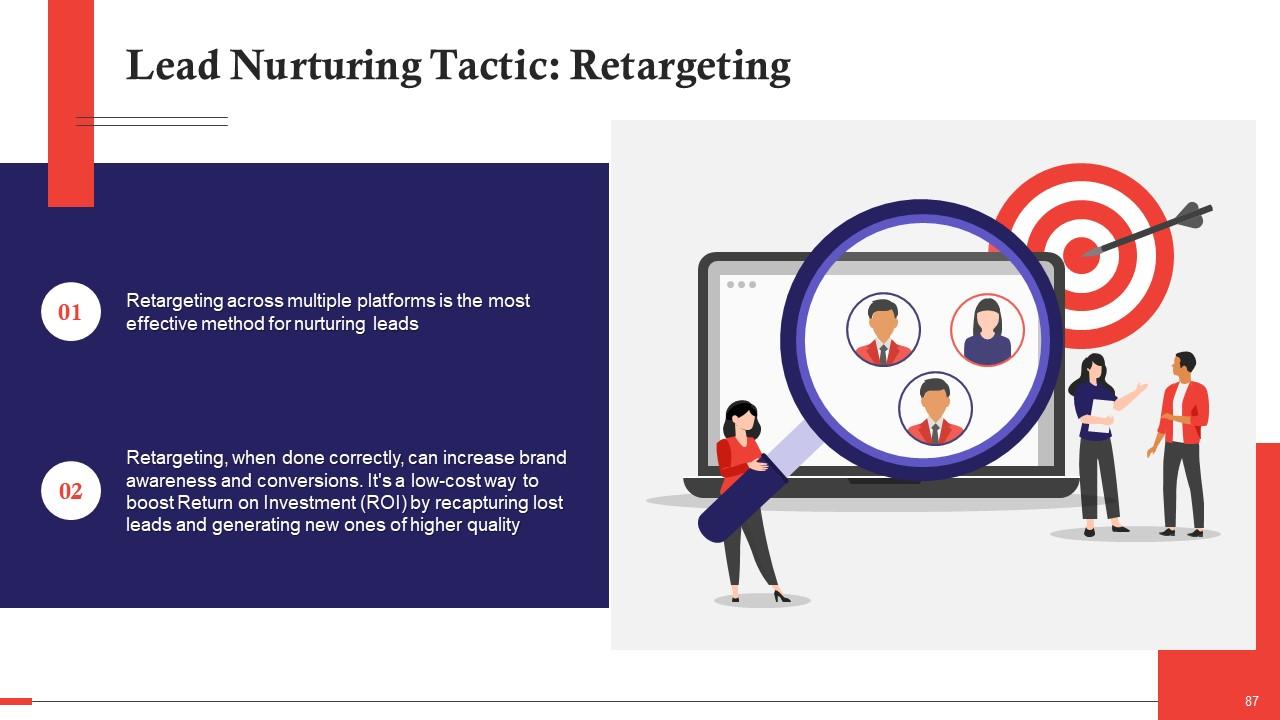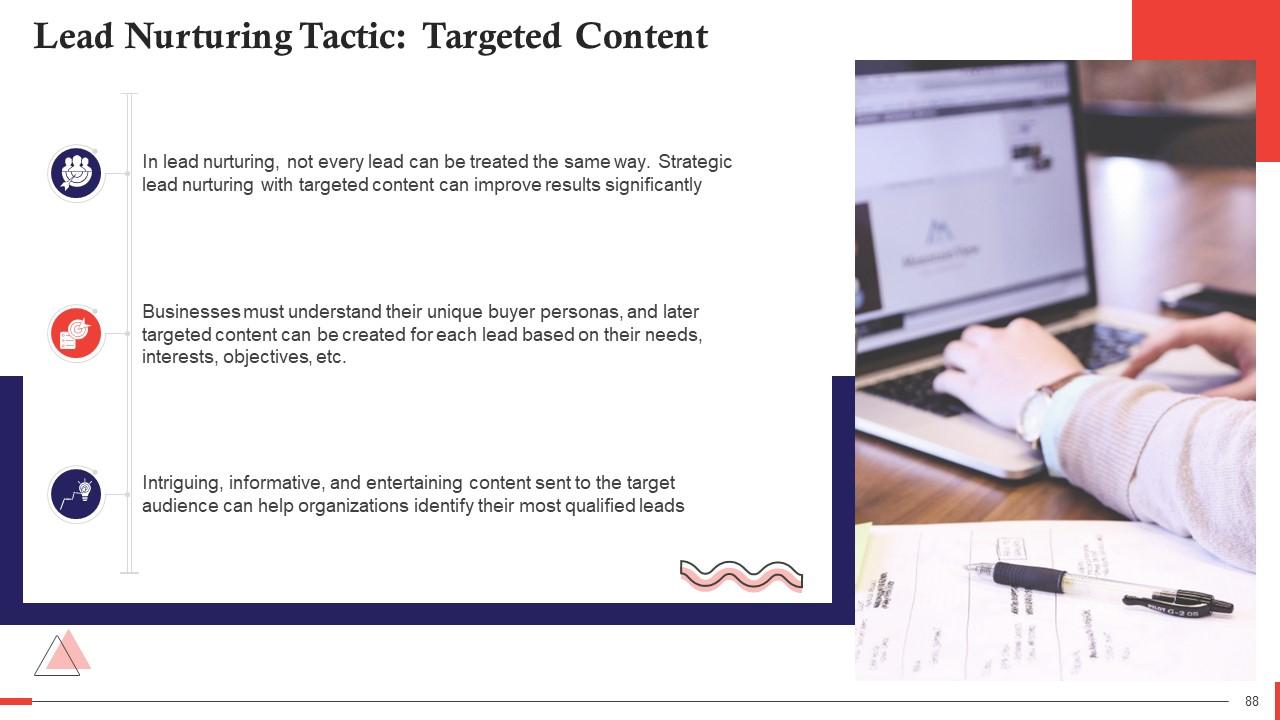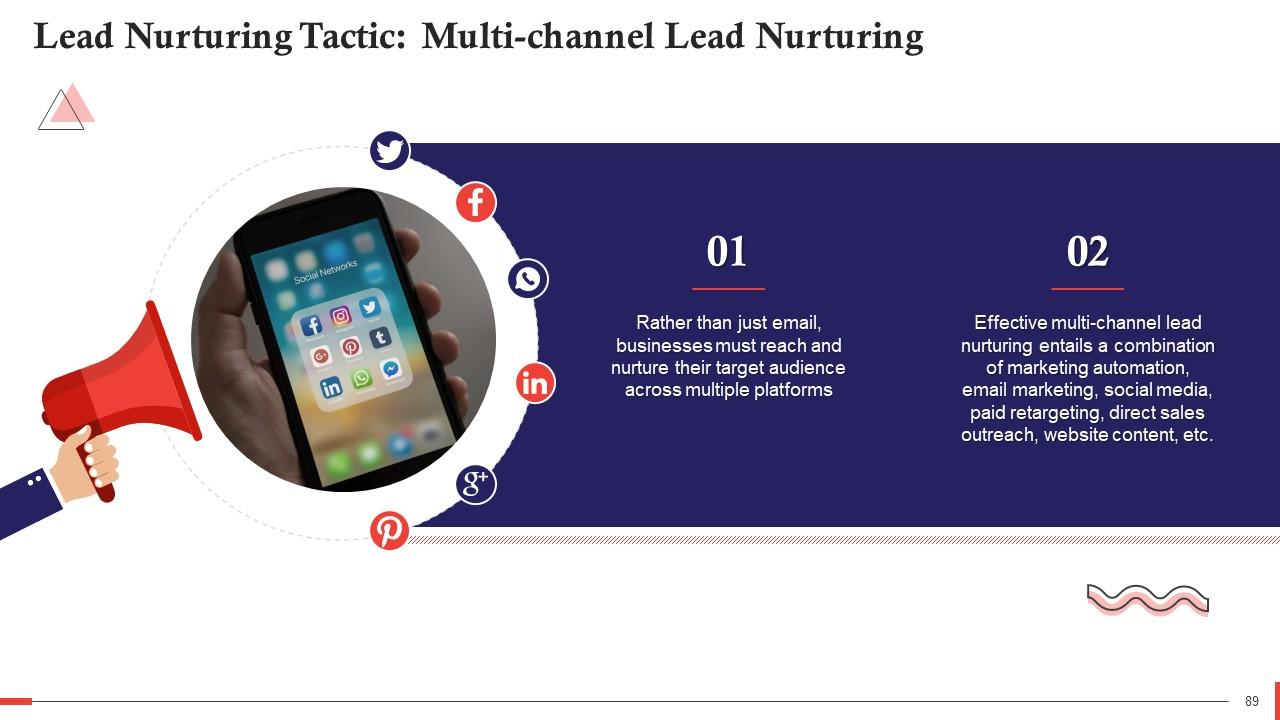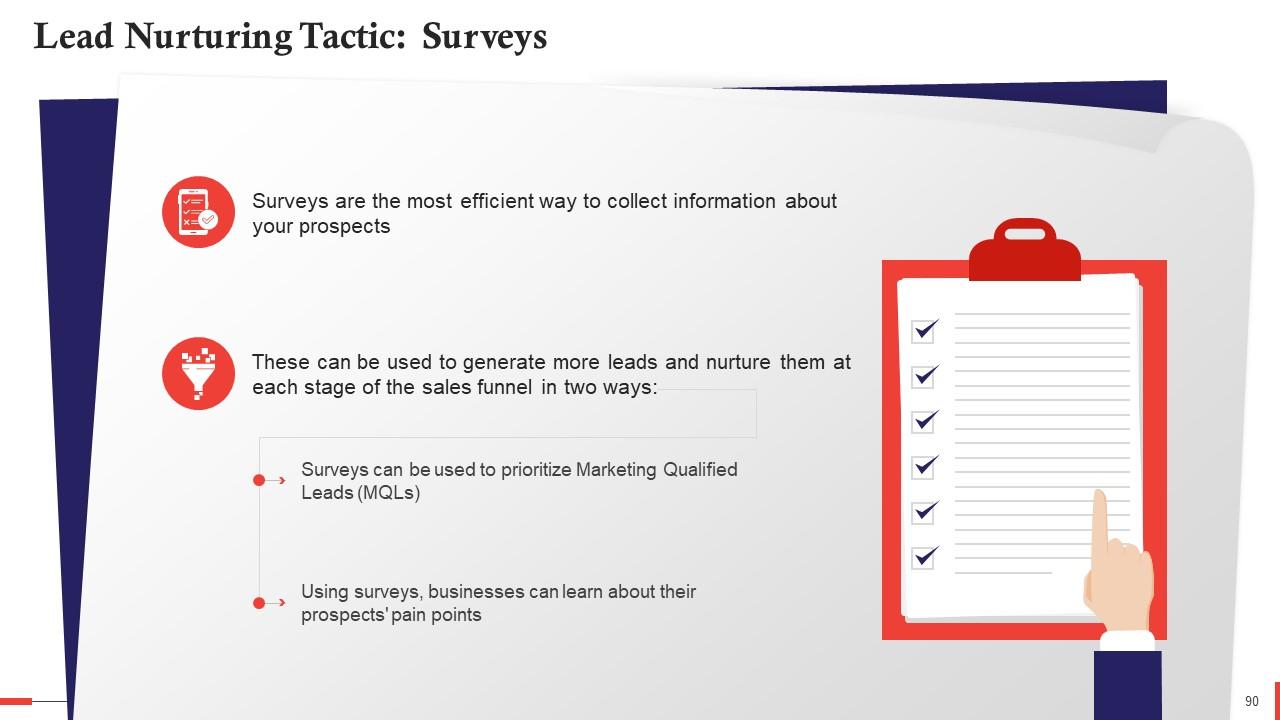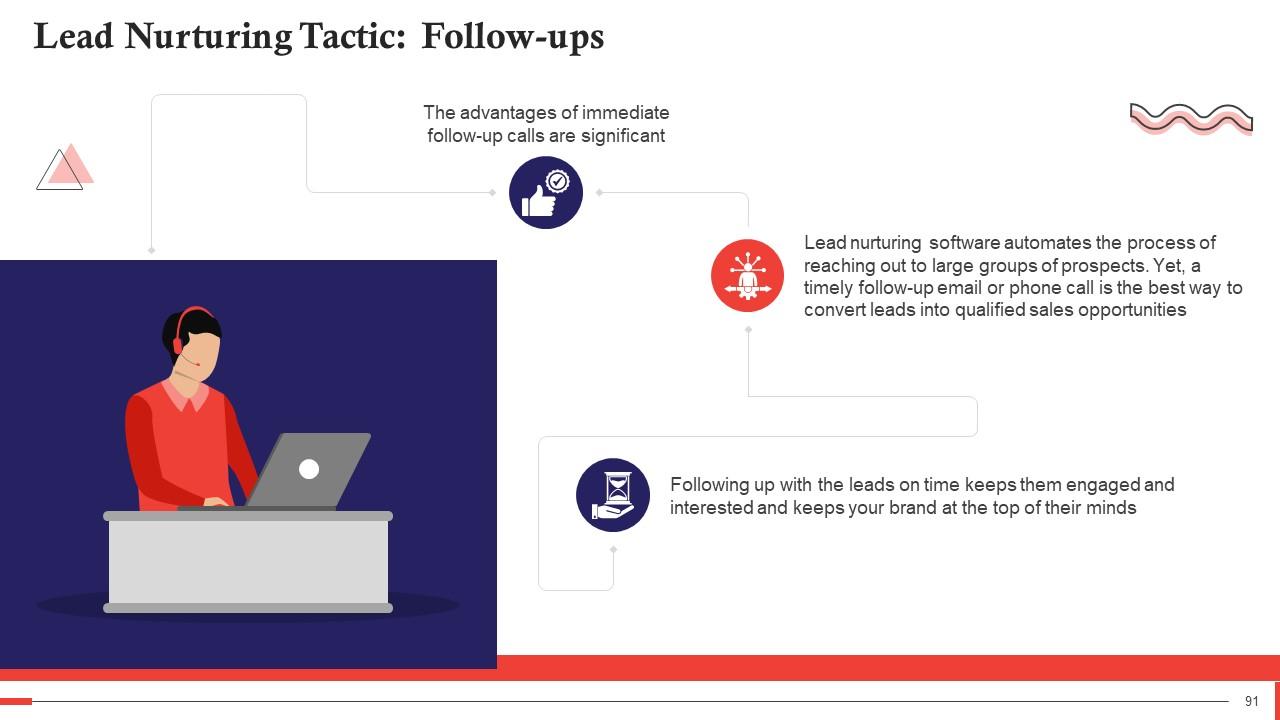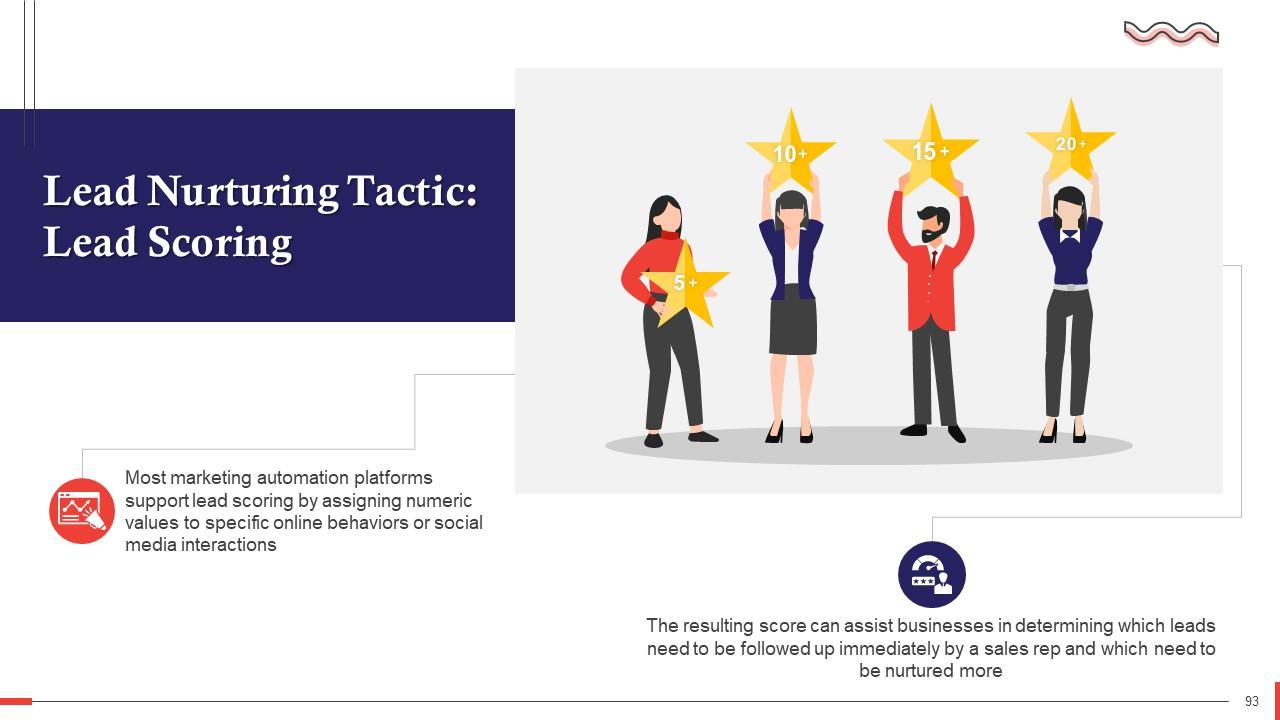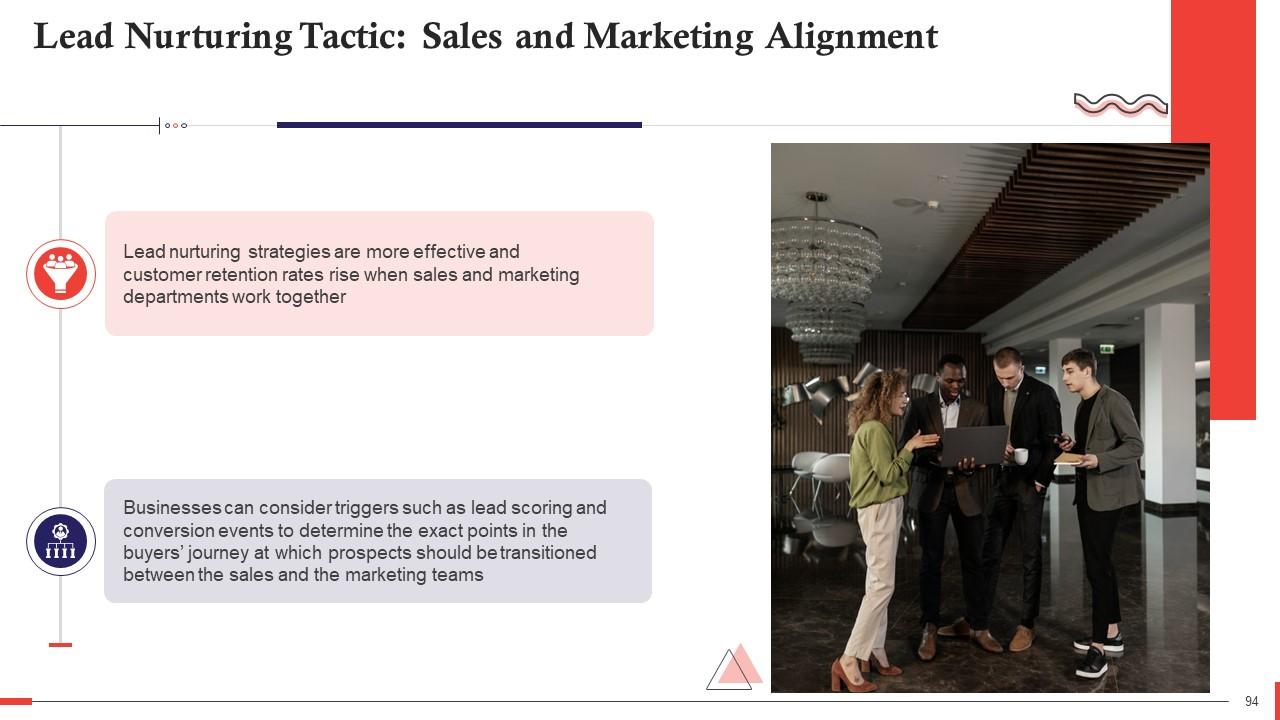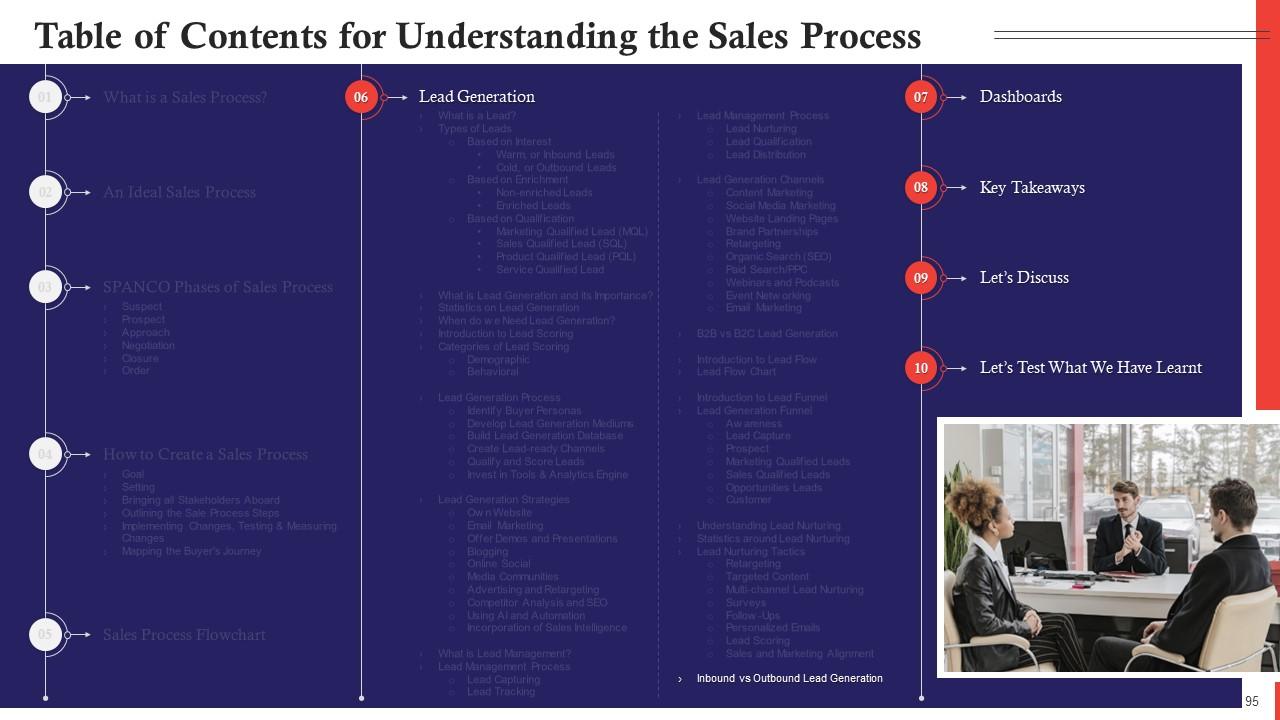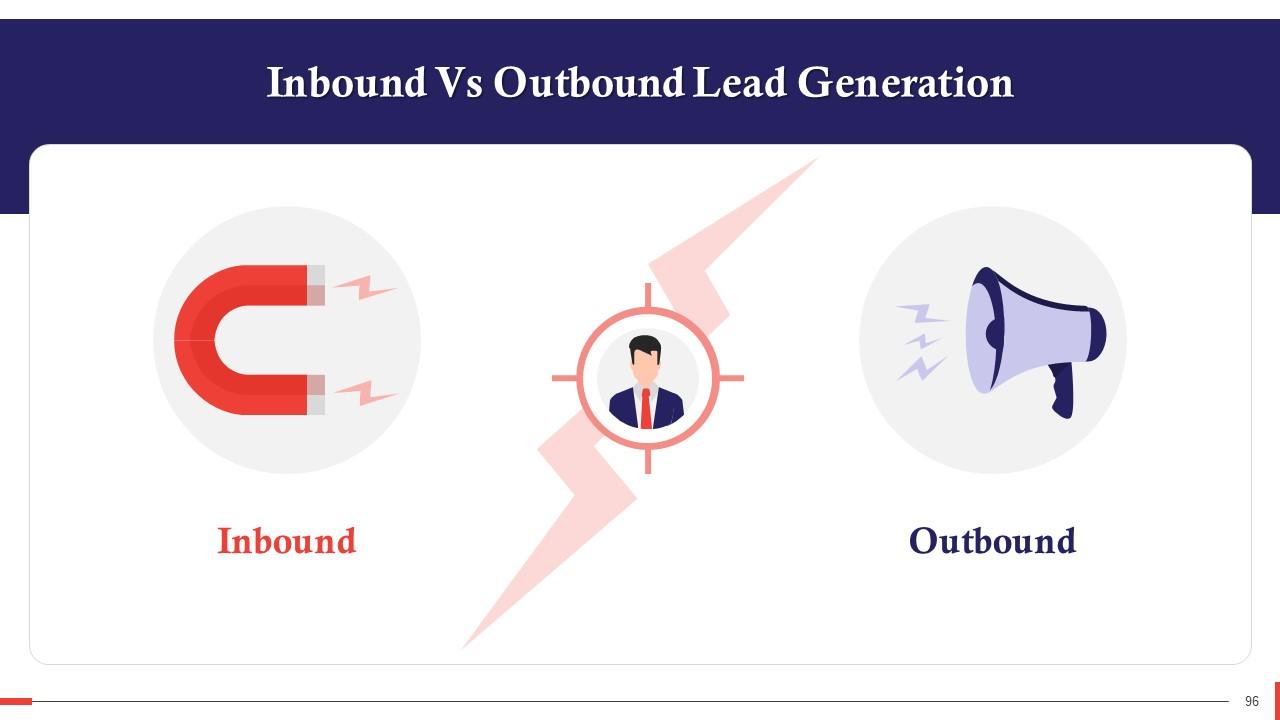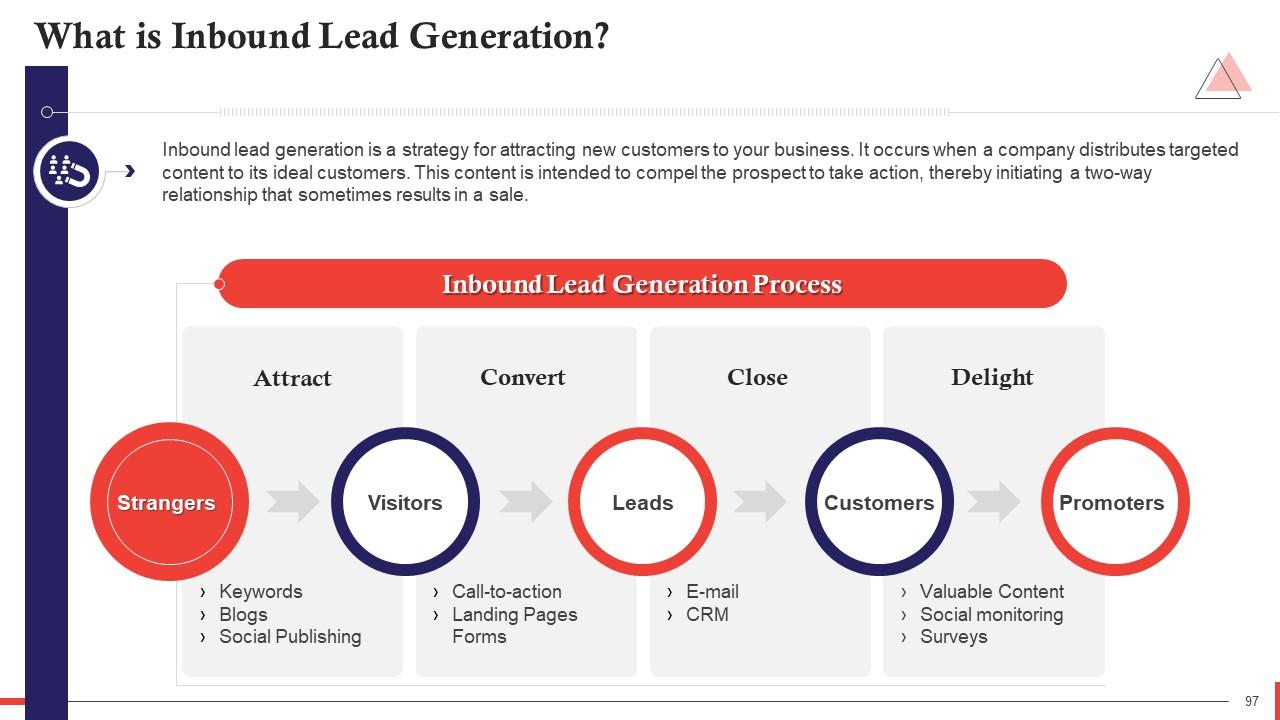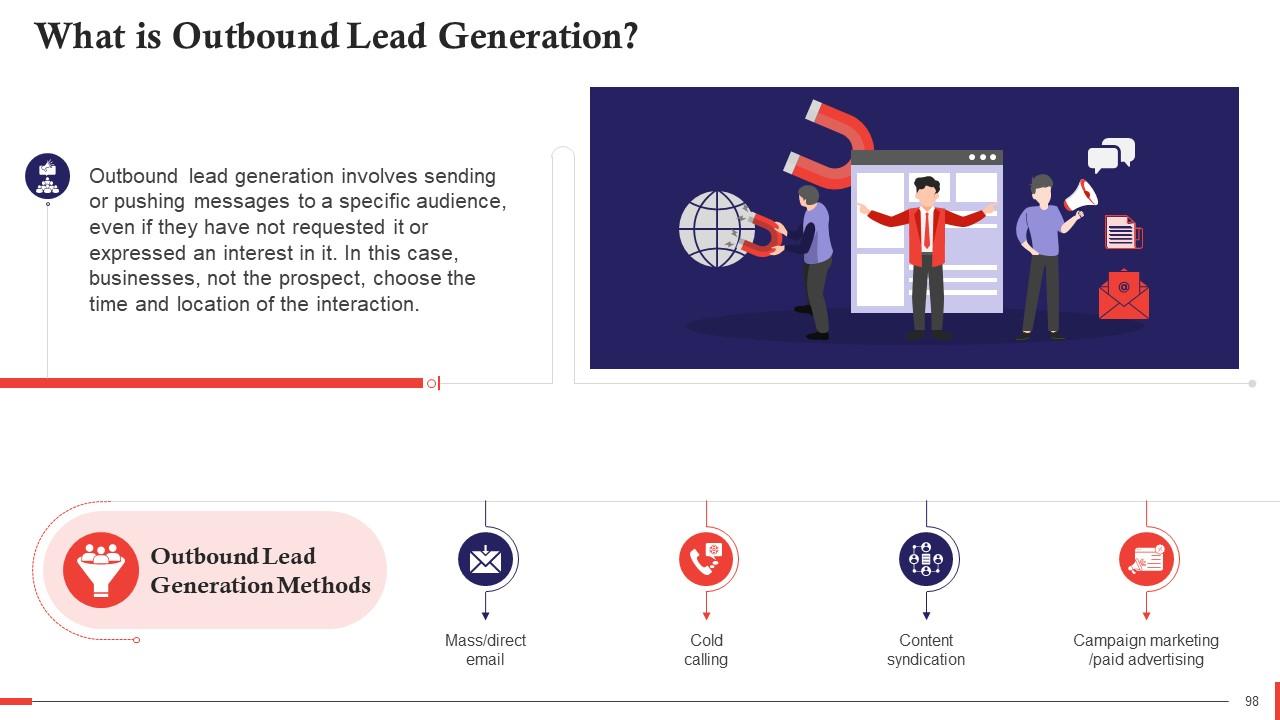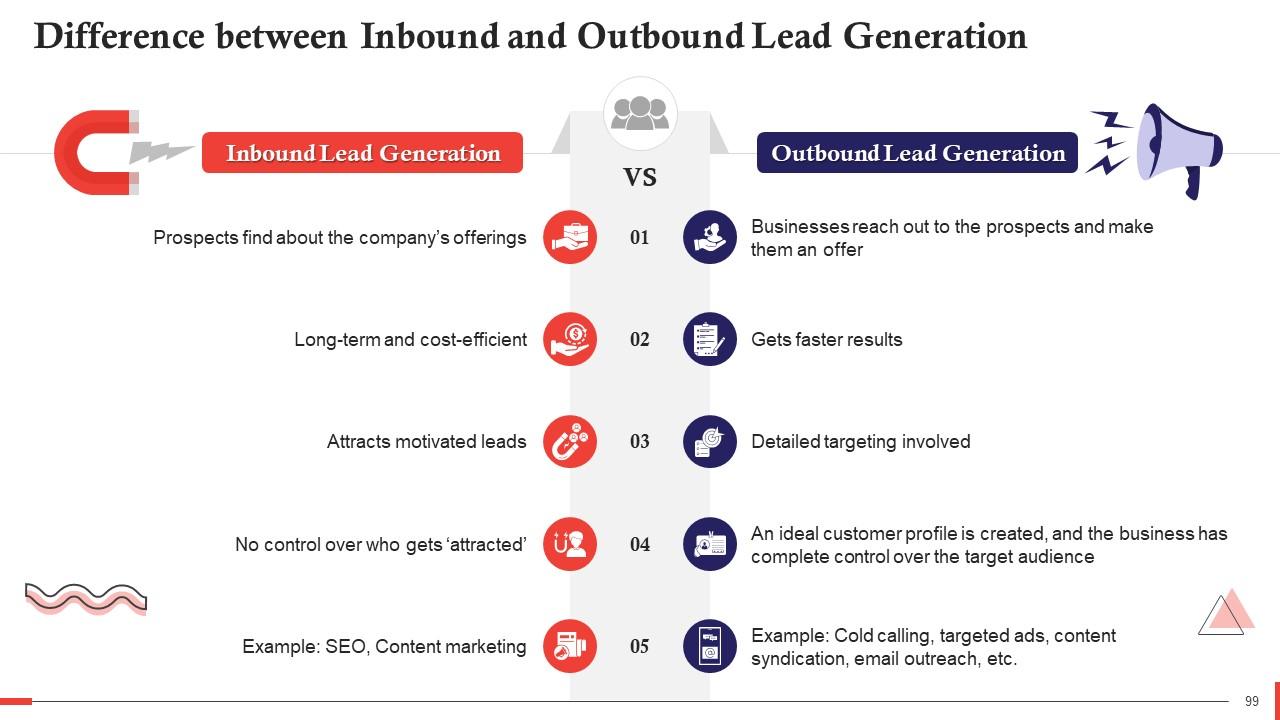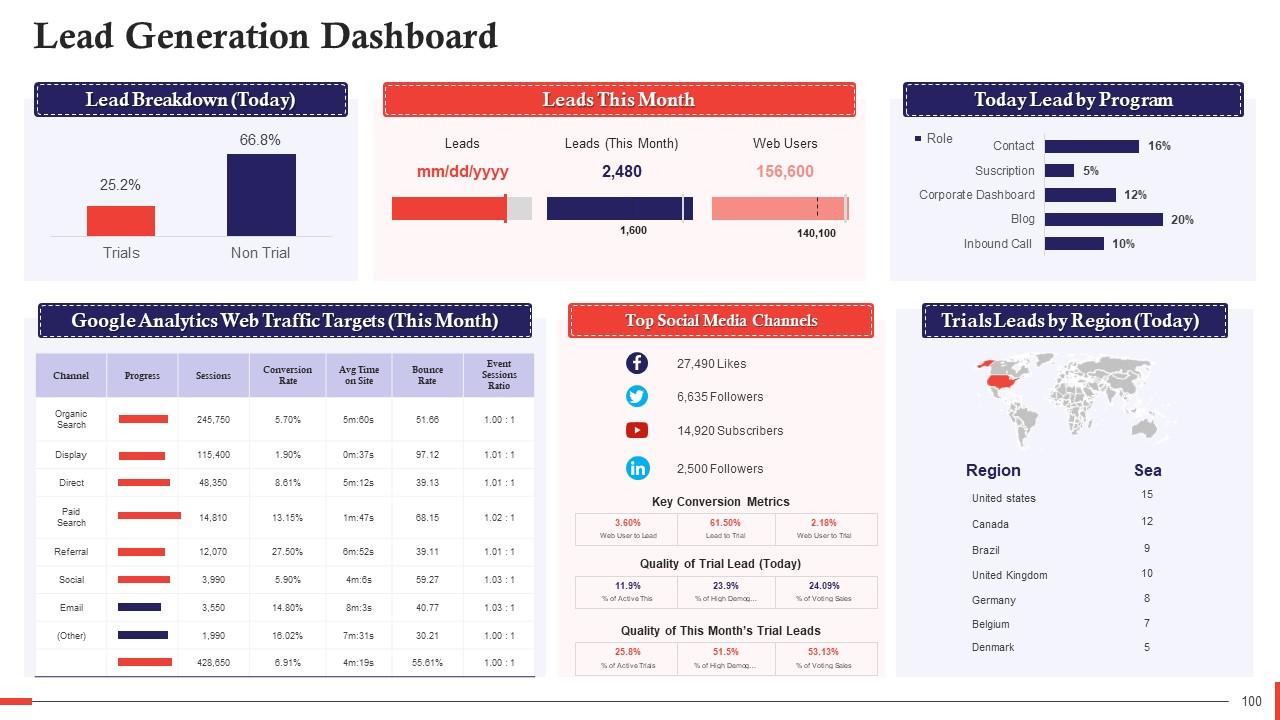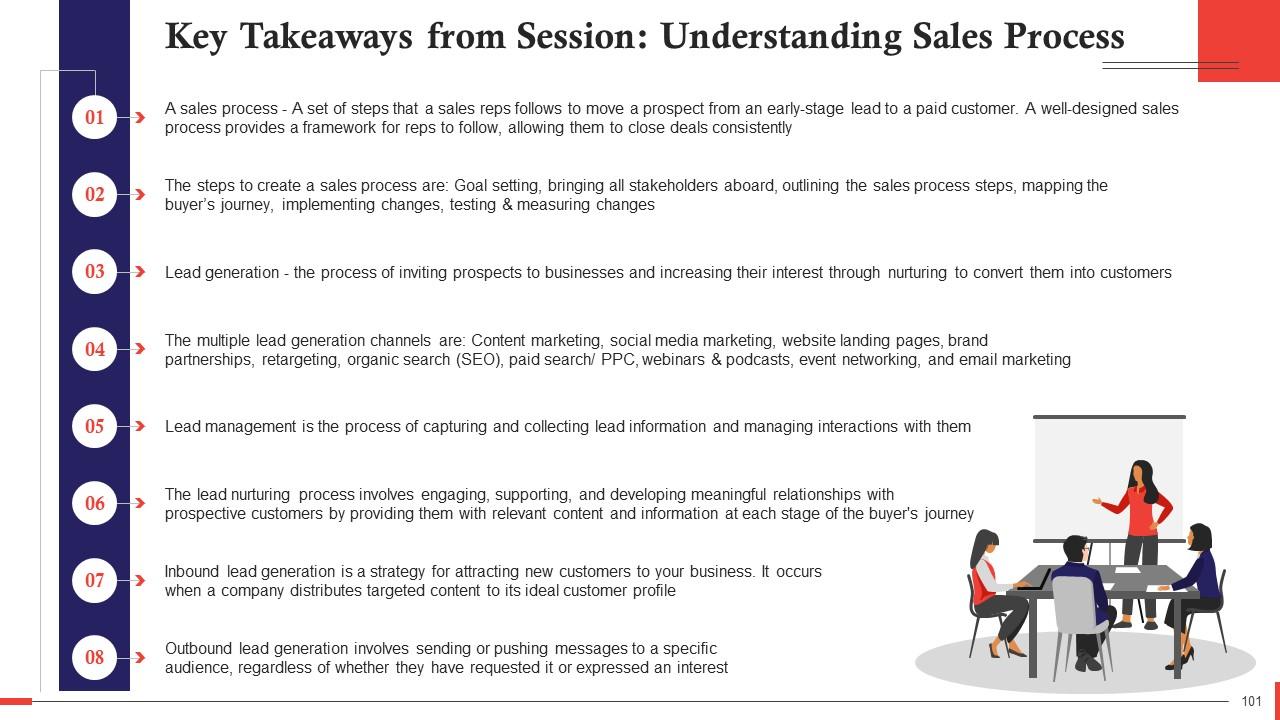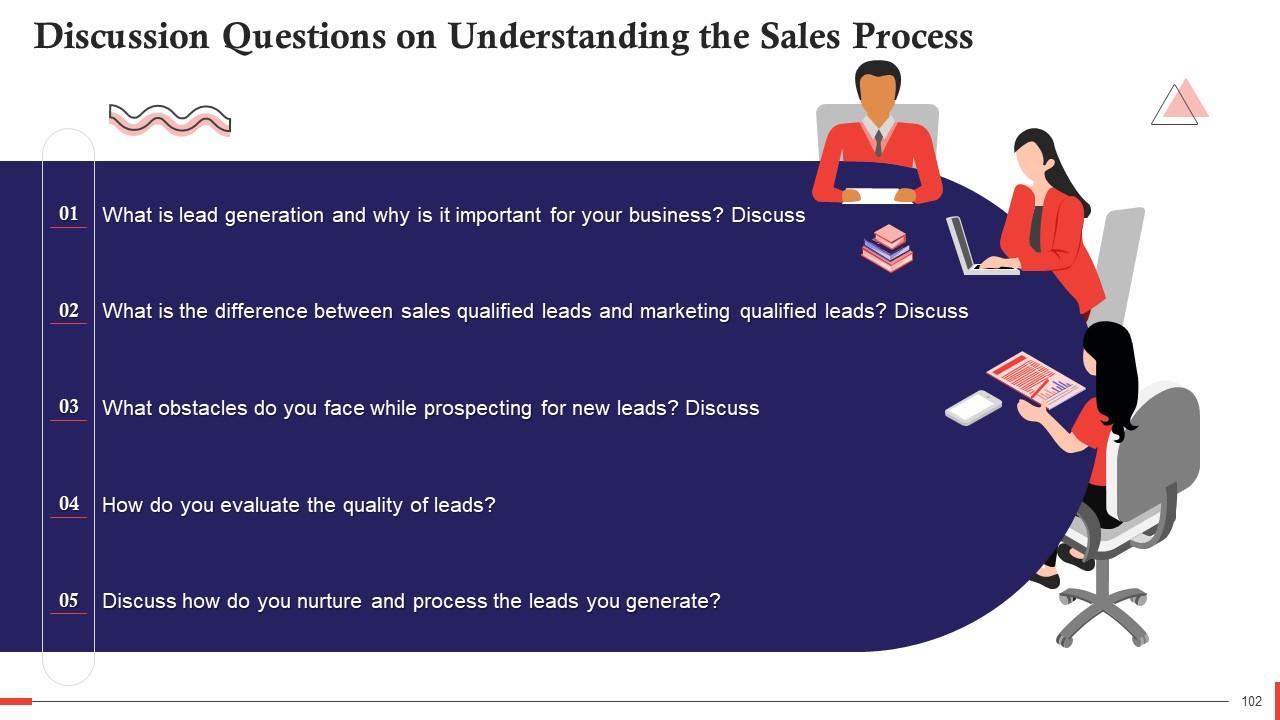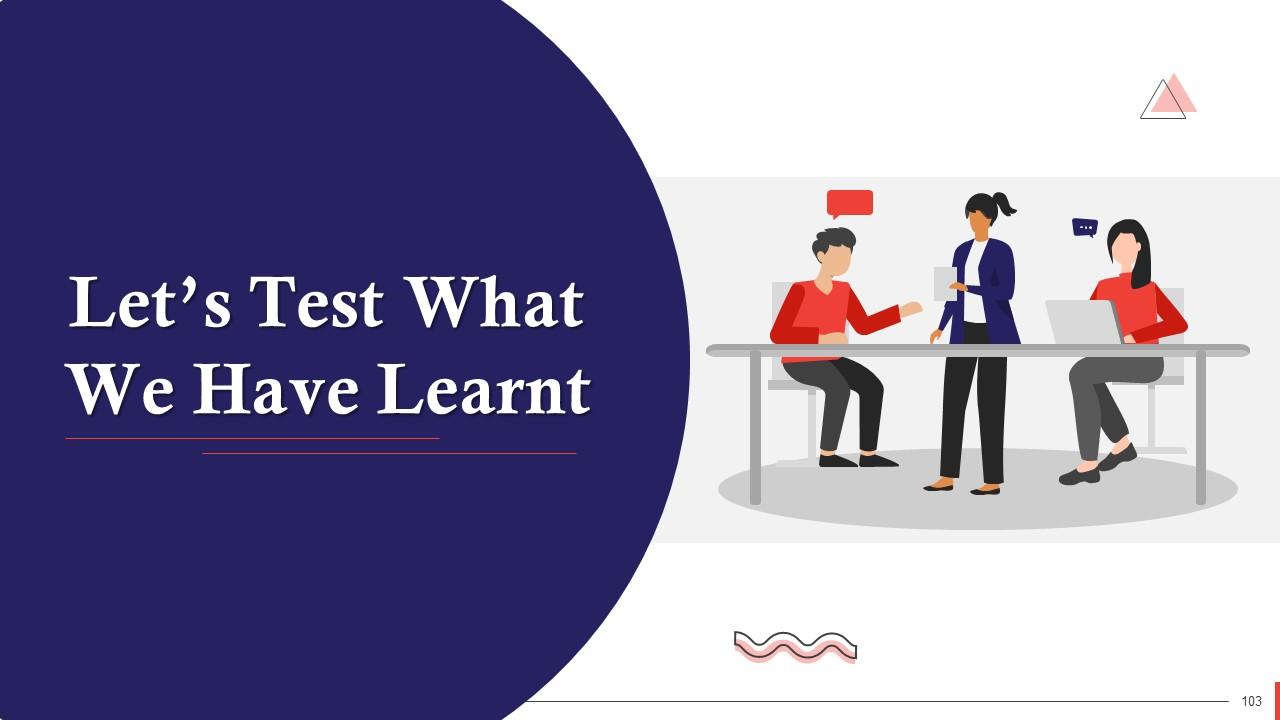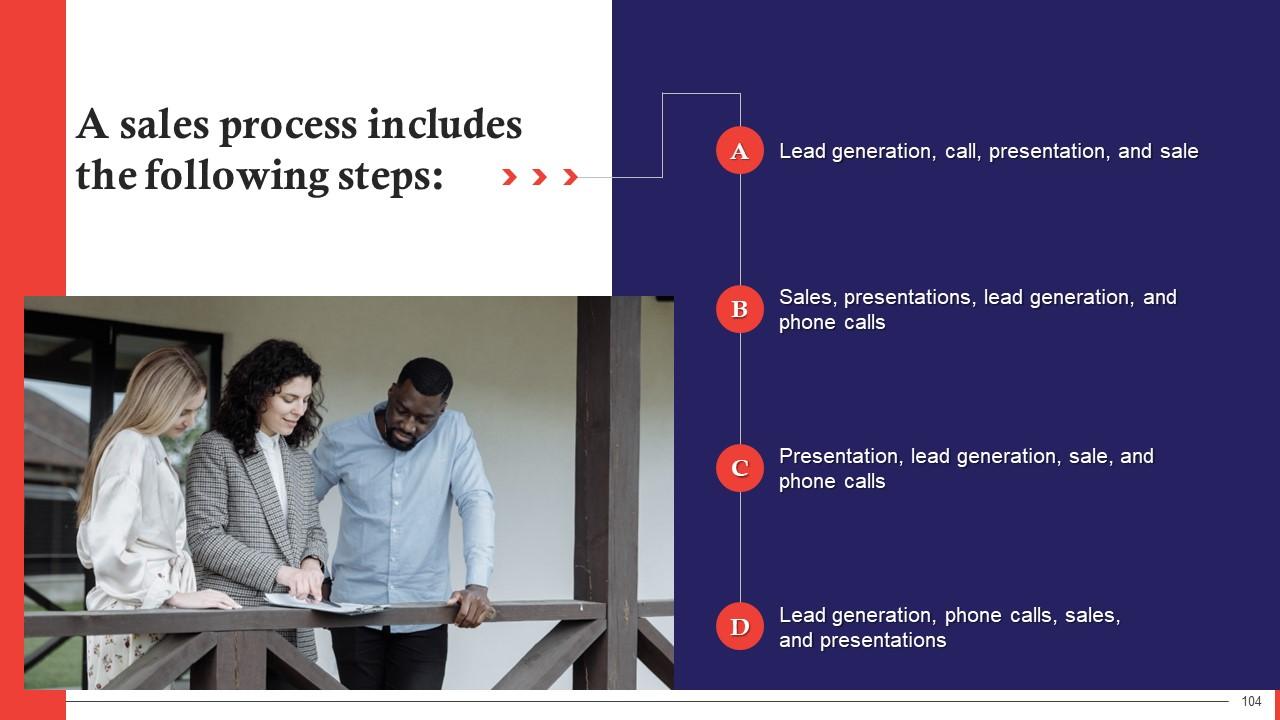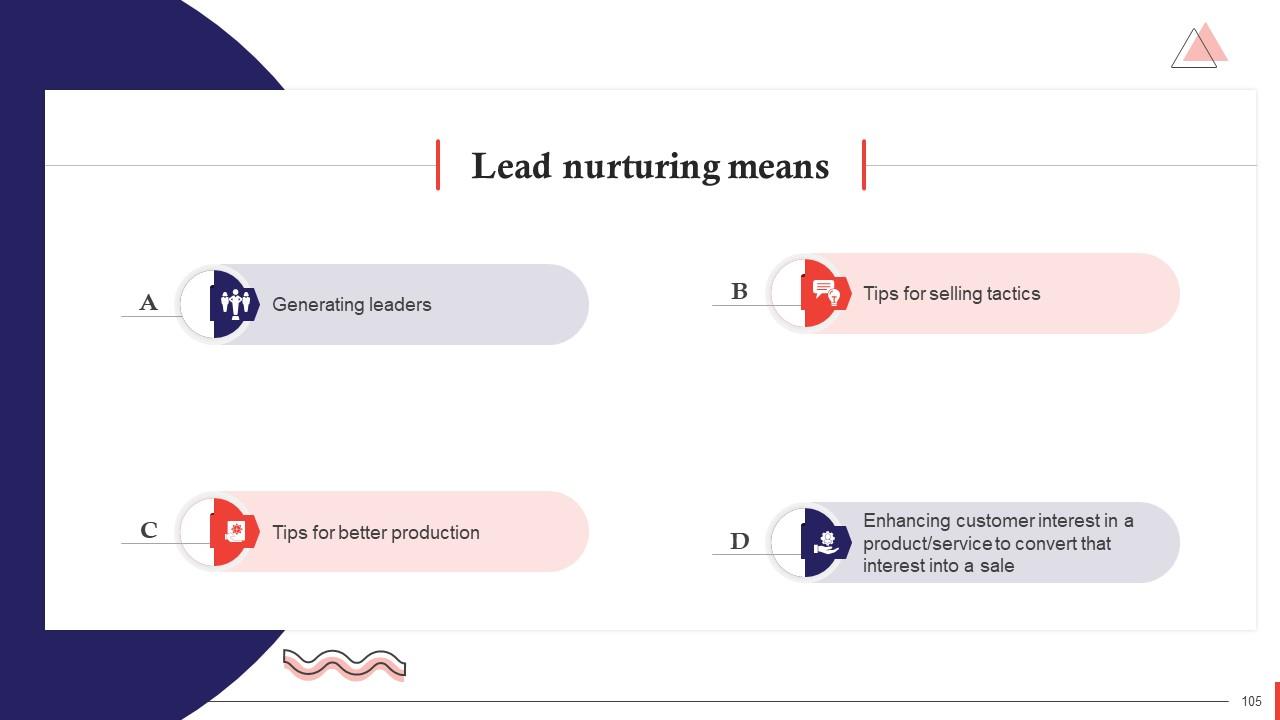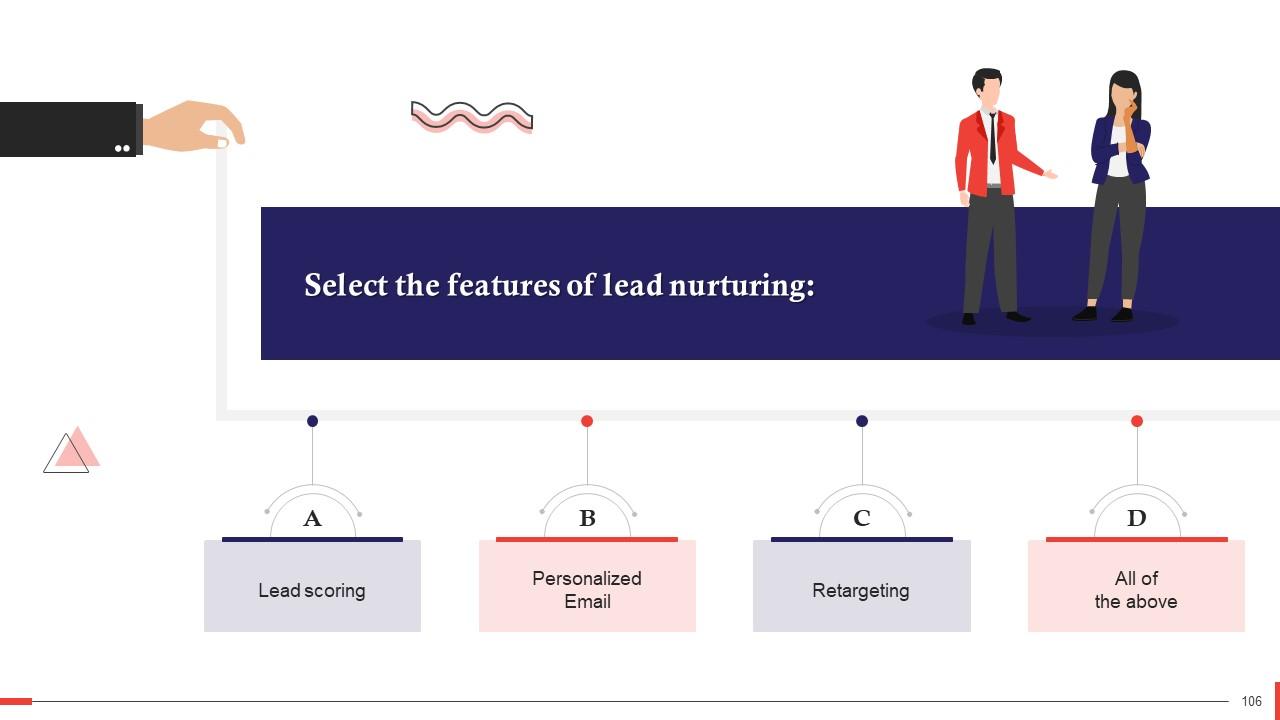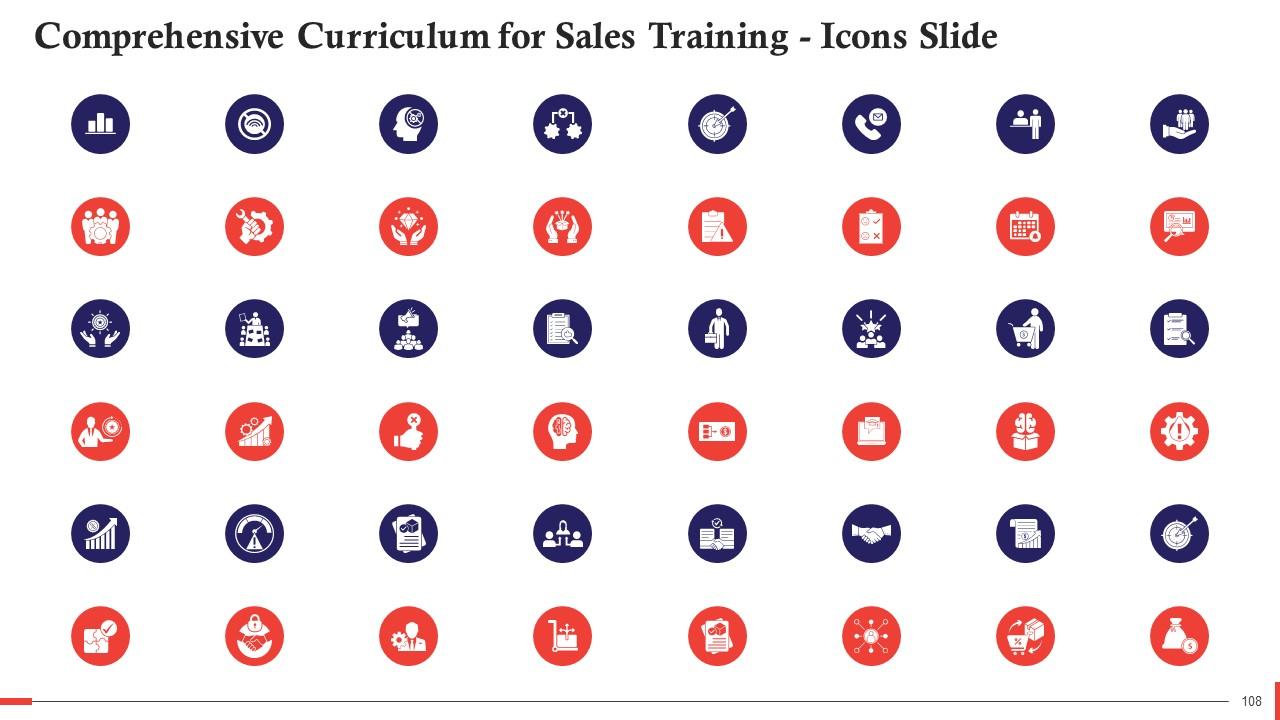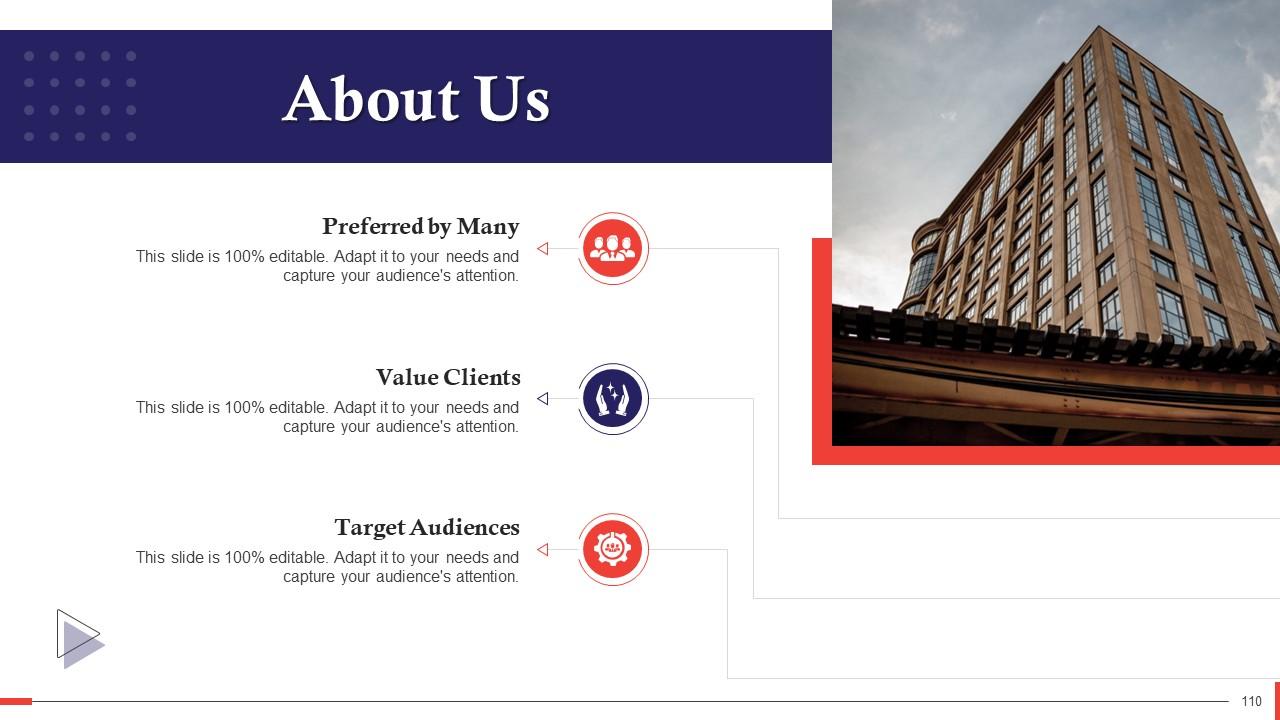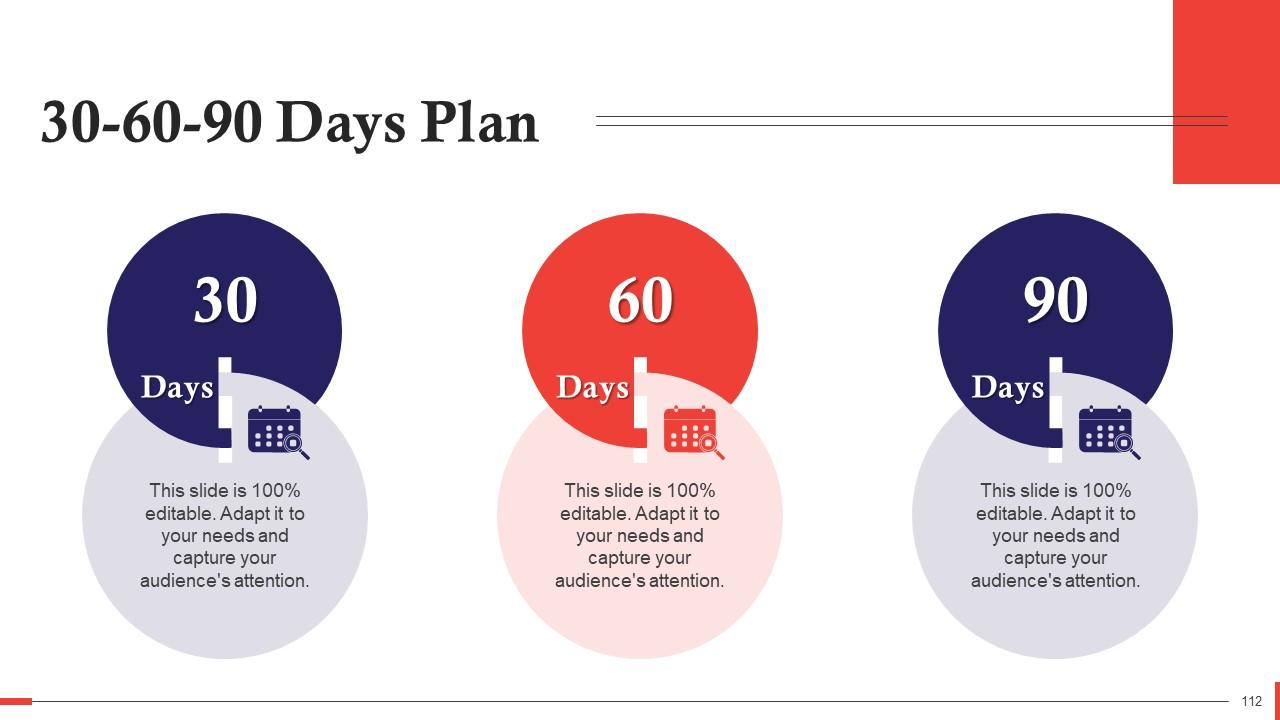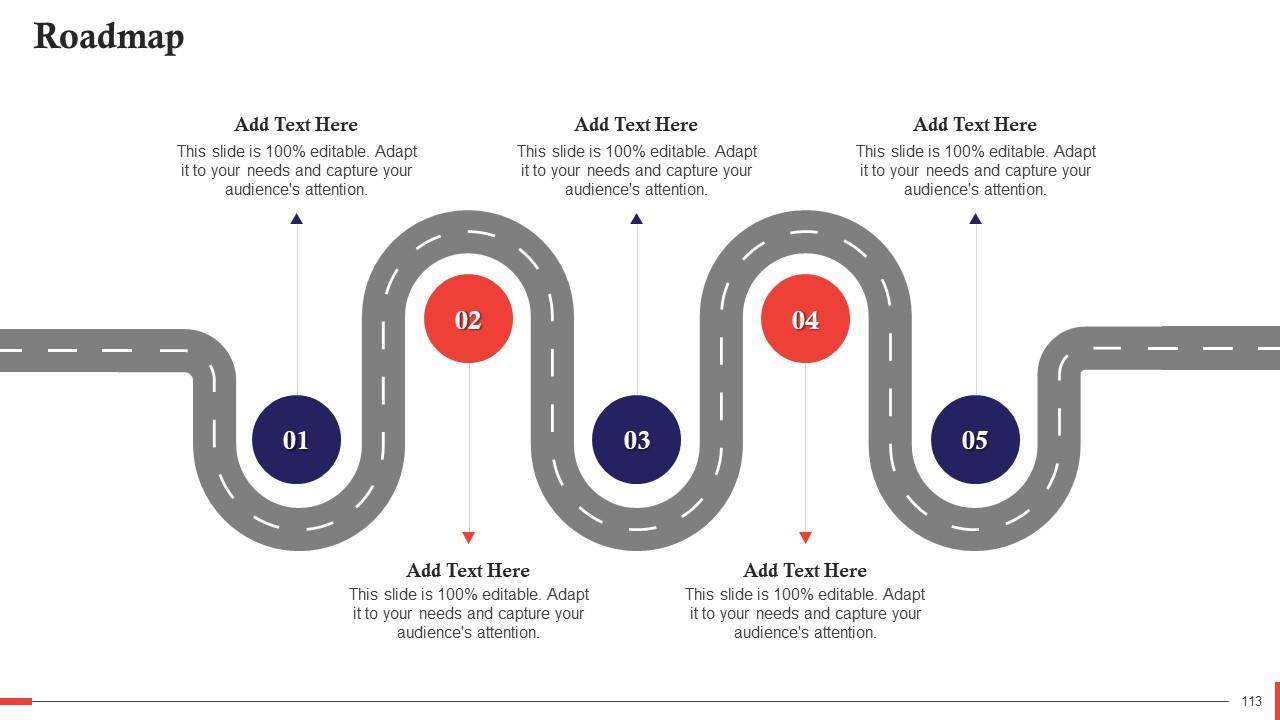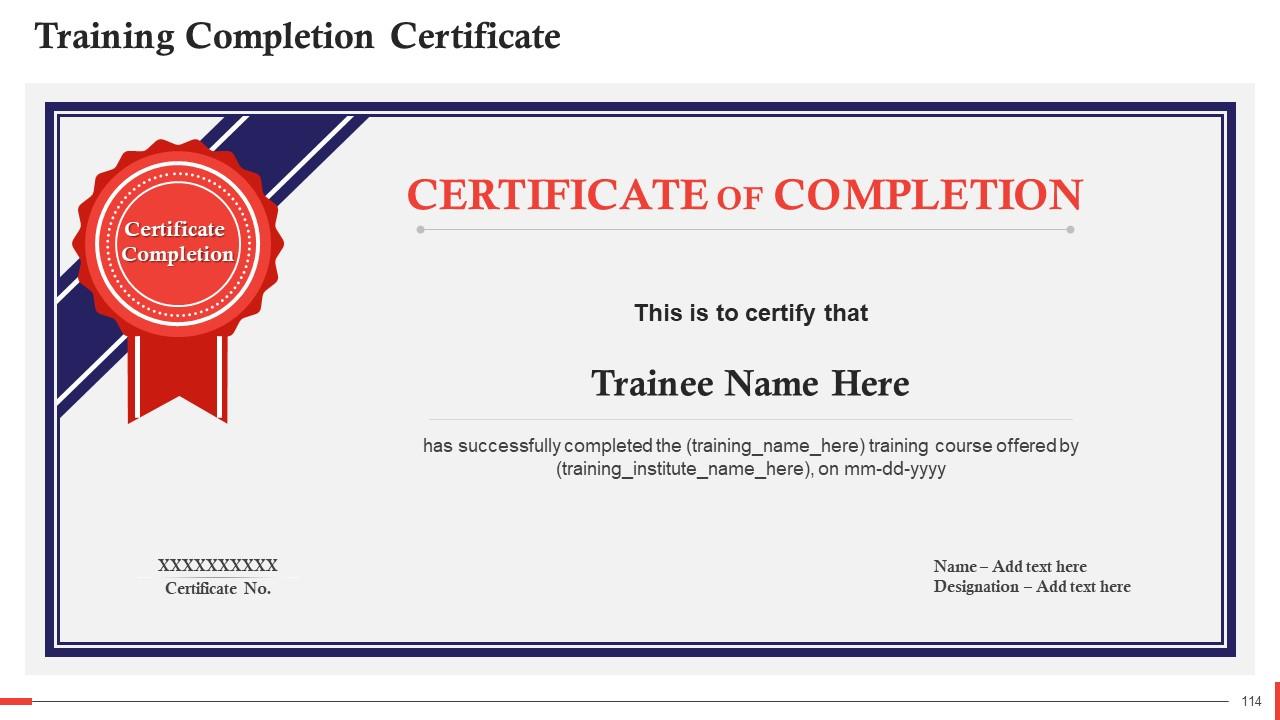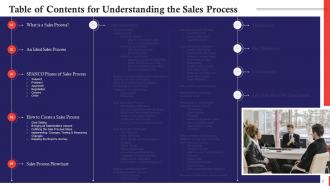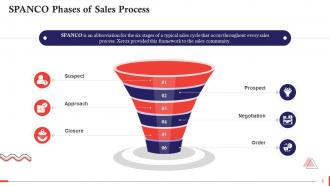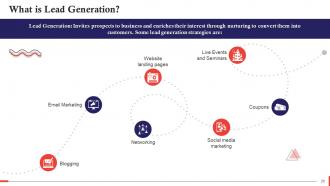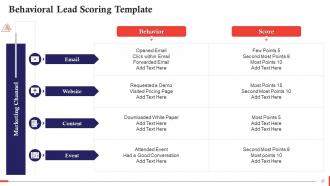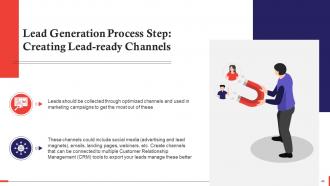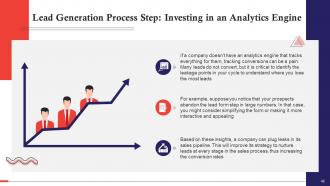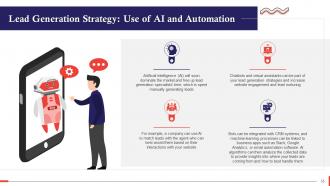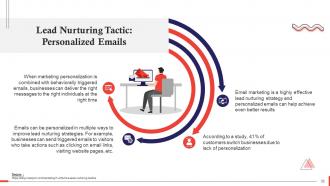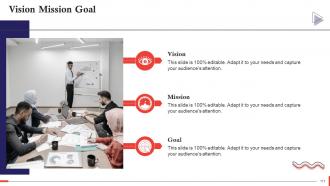Understanding The Sales Process Training Ppt
This training module on Understanding the Sales Process covers the concept of an Ideal Sales Process, SPANCO Phases of the Sales Process Suspect, Prospect, Approach, Negotiation, Closure, Order, How to Create a Sales Process Goal Setting, Bringing all Stakeholders Aboard, Outlining the Sale Process Steps, Implementing Changes, Testing and Measuring Changes, Mapping the Buyers Journey and Sales Process Flowchart. Then comprehensively, it covers Lead Generation, its Importance, Need, and Types of Leads Warm or Inbound Leads, Cold or Outbound Leads, Non-enriched Leads, Enriched Leads, Marketing Qualified Leads MQL, Sales Qualified Leads SQL, Product Qualified Lead PQL, Service Qualified Lead. Then it includes PPT slides on Categories of Lead Scoring Demographic and Behavioral, Lead Generation Process Identify Buyer Personas, Develop Lead Generation Mediums, Build Lead Generation Database, Create Lead-ready Channels, Qualify and Score Leads, Invest in Tools and Analytics Engine, and Lead Generation Strategies Own Website, Email Marketing, Offer Demos and Presentations, Blogging, Online Social, Media Communities, Advertising and Retargeting, Competitor Analysis. In detail, it also covers Lead Management Process Lead Capturing, Lead Tracking, Lead Management Process, Lead Nurturing, Lead Qualification, Lead Distribution, Lead Generation Channels Content Marketing, Social Media Marketing, Website Landing Pages, Brand Partnerships, Retargeting, Organic Search, Paid Search, Webinars and Podcasts, Event Networking, Email Marketing, B2B vs. B2C Lead Generation, and Lead Flow. Further, it contains slides on Lead Generation Funnel Awareness, Lead Capture, Prospect, Marketing Qualified Leads, Sales Qualified Leads, Opportunities Leads, Customer, Lead Nurturing Tactics Retargeting, Targeted Content, Multi-channel Lead Nurturing, Surveys, Follow-Ups, Personalized Emails, Lead Scoring, Sales and Marketing Alignment, Inbound vs. Outbound Lead Generation. It also includes Key Takeaways and Discussion Questions related to the topic to make the coaching session more interactive. The deck has PPT slides on About Us, Vision, Mission, Goal, 30-60-90 Days Plan, Timeline, Roadmap, and Training Completion Certificate.
This training module on Understanding the Sales Process covers the concept of an Ideal Sales Process, SPANCO Phases of the ..
- Google Slides is a new FREE Presentation software from Google.
- All our content is 100% compatible with Google Slides.
- Just download our designs, and upload them to Google Slides and they will work automatically.
- Amaze your audience with SlideTeam and Google Slides.
-
Want Changes to This PPT Slide? Check out our Presentation Design Services
- WideScreen Aspect ratio is becoming a very popular format. When you download this product, the downloaded ZIP will contain this product in both standard and widescreen format.
-

- Some older products that we have may only be in standard format, but they can easily be converted to widescreen.
- To do this, please open the SlideTeam product in Powerpoint, and go to
- Design ( On the top bar) -> Page Setup -> and select "On-screen Show (16:9)” in the drop down for "Slides Sized for".
- The slide or theme will change to widescreen, and all graphics will adjust automatically. You can similarly convert our content to any other desired screen aspect ratio.
Compatible With Google Slides

Get This In WideScreen
You must be logged in to download this presentation.
PowerPoint presentation slides
Presenting Training Deck on Understanding the Sales Process. This presentation deck contains 114 well-researched and uniquely designed slides. These slides are 100 percent made in PowerPoint and are compatible with all screen types and monitors. They also support Google Slides. Premium Customer Support available. Suitable for use by managers, employees, and organizations. These slides are easily customizable. You can edit the color, text, icon, and font size to suit your requirements.
People who downloaded this PowerPoint presentation also viewed the following :
Content of this Powerpoint Presentation
Slide 4
This slide defines the term "sales process." It emphasizes that a sales process includes steps taken by a sales team to convert a prospect from an early-stage lead to a closed customer. It also discusses why one should create a sales process. A sales process can serve as a roadmap for sales team as they work to convert potential leads into customers. You make more money when you develop a proper sales process. When you provide your sales team with a common framework, they have a more efficient roadmap to closing deals.
Slide 5
This slide lists the features that an ideal sales process must have. The features are: Customer-centric, clear and actionable, replicable, predictable, goal-oriented, measurable, and flexible.
Instructor’s Notes:
Features of Ideal Sales Process are:
- Customer-centric: Buyers today have greater access to information and a broader range of options. Innovative businesses align their sales process steps with their customers' buying patterns and processes
- Clear and Actionable: All stakeholders should thoroughly understand each stage and component of the sales process. Defining necessary actions eliminates ambiguity and the possibility of errors
- Replicable: Any sales representative should follow each step of the sales process. Reps must also be able to apply the sales process or its individual steps across sales scenarios
- Predictable: The expected outcomes of each stage and the flow from one step to the next should be predefined
- Goal-oriented: The sales process should direct sales teams on how to achieve their goals
- Measurable: To ensure compliance and create a culture of continuous improvement, you should be able to quantify all of the actions and activities involved in the sales process
- Flexible: Rigidity prevents advancement. The sales process should be flexible enough to adapt to changing business and customer needs, technological advances, or changes in sales operations
Slide 6
This slide describes the SPANCO (Suspect Prospect Approach Negotiate Closure Order) phases of the sales process. It emphasizes that SPANCO is an abbreviation for the six stages of a typical sales cycle, which occur throughout the entire sales process. Xerox provided this framework to the sales community.
Slide 7
This slide discusses the suspect phase of the SPANCO sales process. It emphasizes that lists of leads believed of being potential customers are identified as suspects. However, it is unclear whether the leads are interested in purchasing the product offered at this point in the sales cycle. It also states that during this phase, a salesperson must study a specific account or customer, gather information such as contact persons, authority, and the company's ability to pay, and conduct a needs-assessment of the customer.
Slide 8
This slide explains the prospecting phase of the SPANCO sales process. It emphasizes that at this stage, only a few prospects are chosen from a large pool of suspects. Prospects are prospective customers who expressed an interest during the suspect phase.
Slide 9
This slide discusses the approach phase of SPANCO sales process. It emphasizes that you will meet with the clients identified during the prospecting phase, virtually or in person. At this stage, the salesperson attempts to identify the client's requirements, analyze these, qualify leads, and present a solution from their offerings. It also emphasizes that this occurs over a number of days, with multiple meetings for need identification, sales presentations, and so on.
Slide 10
This slide explains the negotiation phase of the SPANCO sales process and emphasizes that negotiation is a critical stage of the sales cycle because it can make or break a sale. Bargaining on product or service features, pricing, and so on begins at this stage. The salesperson must also consider his profit margin and which product would be most beneficial to the customer. By this point, the salesperson should be familiar with the competitor's products and details.
Slide 11
This slide mentions the closure phase of the SPANCO sales process, and it highlights that the client would agree to the deal's or contract's terms and conditions at this stage. When the customer signs the contract and completes all necessary formalities for issuing a purchase order to you, the deal is considered "close."
Slide 12
This slide explains the order phase of the SPANCO sales process. It emphasizes that the salesperson must pick up the order (Purchase Order) from the customer after agreeing on the terms and conditions, including payment and delivery schedule. Once a Purchase Order (PO) is issued, the salesperson must deliver it to the appropriate Operations Department or Delivery Team. The Delivery Team assumes the client's responsibilities. This is the end of the sales cycle for that specific deal. It also states that this stage also includes cross-selling, meaning promoting the purchase of anything besides the primary product.
Slide 13
This slide lists the steps to create a sales process. The steps are: Goal setting, bringing all stakeholders aboard, outlining the sales process steps, mapping the buyer’s journey, and implementing changes, testing & measuring these changes.
Slide 14
This slide mentions goal setting as a step in developing a sales process. It emphasizes that to know where you're going, you must first understand where you want to go. Setting goals for your sales team is part of the sales mapping process. A company's strategy should be focused but simple.
Slide 15
This slide explains bringing all stakeholders on board as a step in developing a sales process. It emphasizes that a sales team cannot achieve its goal on its own. Other departments, such as marketing, product, customer service, information technology, etc. have a stake in your sales process and impact your customer experience. The sales team must include these stakeholders in the sales process.
Slide 16
This slide outlines the steps to create sales process. It emphasizes that here, it is time to review each step of your sales process SPANCO (Suspect Prospect Approach Negotiation Closure Order). Examine your sales process history. What steps were successful, and where did prospects fall off? It also mentions that with your stakeholders on board, you can map out which teams are involved in each step and what actions they can take, especially your sales team.
Slide 17
This slide depicts mapping the buyer's journey as a step in developing a sales process. It emphasizes that the sales process is examined from the customers' perspective in this step, and their actions and reactions to the sales process are documented. It also states that during this step, a buyer persona is created to ensure that the team remains customer-centric.
Slide 18
This slide explains implementing, testing & measuring changes as a step in developing a sales process. It emphasizes that you're ready to put your sales process to work once you've mapped it from both the seller's and buyer's perspectives. It also mentions that you won't know if the process will help you achieve your goal until you put it to the test, implement the required changes and measure the results.
Slide 19
This slide illustrates the sales process flowchart. It highlights the steps that should be completed before connecting with clients and various other follow up steps depending on the client’s response.
Slide 21
This slide explains the concept of lead. It highlights that a lead is anyone who shows an interest in a company’s product or service. Leads usually hear from a company or organization after initiating the contact (by submitting personal information for an offer, trial, or subscription) rather than receiving a cold call from someone who purchased their contact information.
Slide 22
This slide lists types of leads. The first category is based on interest (warm, or inbound leads and cold, or outbound leads), the second category is based on enrichment (non-enriched leads and enriched leads), and the third category is based on qualification (marketing qualified lead (MQL), sales qualified lead (SQL), product qualified lead (PQL), and service qualified lead.
Slide 23
This slide provides information regarding warm or inbound leads and cold or outbound leads. It highlights that warm or inbound leads are those who expressed an interest in your product/service and found you on their own (for example, they came across your blog and subscribed to your newsletters). An organization generates cold, or outbound leads as a result of its targeting strategy and lead generation tools.
Slide 24
This slide discusses enriched and non-enriched leads. It emphasizes that enriched leads include additional information that can be used for personalization and multi-channel marketing, such as secondary contact information, company name, location, job position, pain points, and so on. Non-enriched leads have limited information, typically comprising of a name, email address, or phone number (one contact method).
Slide 25
This slide defines MQLs as individuals who have interacted with your marketing team but are not yet ready for a sales call. It also mentions a MQL is someone who fills out a landing page form for an offer.
Slide 26
This slide explains SQLs as those who have expressed a clear interest in becoming paying customers. A SQL is someone who fills out a form and asks questions about your product or service.
Slide 27
This slide mentions that PQLs as are people who have used your product and demonstrated an interest in becoming paying customers. PQLs are most commonly used by businesses that provide a free or limited version of their product with the option to upgrade, which is where your sales team comes in. It also states that a PQL is a customer who uses free version of your product but interacts with or enquires about paid features.
Slide 28
This slide defines SQLs as contacts or customers who have expressed an interest in becoming paying customers to your service team. It also mentions that a service qualified lead is a customer who tells their customer service representative that they want to upgrade their product subscription; at this point, the customer service representative will up-level the customer to the appropriate sales representative.
Slide 29
This slide provides information on lead generation. It highlights that Lead Generation invites prospects to business and enriches their interest through nurturing to convert them into customers. It also mentions lead generation strategies such as blogging, email marketing, website landing pages, networking, social media marketing, coupons, and live events and seminars.
Slide 30
This slide explains the importance of lead generation. It highlights that lead generation can help a company target the right people, build brand awareness, and increase growth.
Instructor’s Notes:
Significance of Lead Generation
- Target the Right People: Businesses should target specific customers who are more likely to purchase your product or service. This saves time and money while streamlining your company's processes and increasing sales
- Build Brand Awareness: Lead generation always entails educating leads about the company and its product, whether they learn about you on their own or you reach out to them with information about the features of your product. Leads can spread your brand's USP through word of mouth, bringing you even more customers
- Revenue Growth: With an effective lead generation strategy, your company can generate more revenue than what it had projected
Slide 31
This slide highlights the major statistics on lead generation.
Slide 32
This slide illustrates a graph that can assist organizations in determining when their business requires lead generation. The diagram depicts the price of a product or service on the X-axis and marketing, lead generation, and sales effort on the Y-axis.
Instructor’s Notes:
The diagram has price of product/service on X-axis and marketing effort & lead generation and sales effort on Y-axis
B2C
- The graph shows that B2C goods with high prices require a lead generation or sales effort. Here only marketing and branding are done, e.g. (notebooks and pens)
- If the price of B2C product increases, lead generation efforts also increase, e.g. (An AC worth $5,000)
B2B
- When an organization has a higher volume of leads, the amount of marketing also increases
- For B2B the lead generation is done only for products that are relatively low in cost. For high ticket B2B deals, there are very few buyers and seller and they already know each other
- At the extreme right of the spectrum, only the sales team reaches out to the decision-maker and tries to convert them into buyers
- In the middle of the spectrum, lead generation, lead nurturing, and lead scoring are required. For example, if the company sells cars, appliances, accounting software, etc.
Slide 33
This slide provides information about lead scoring. It emphasizes that lead scoring is assigning values to each lead generated by an organization for the business, often in the form of numerical "points." An organization can score leads based on the professional information they've provided and how they (the leads) have interacted with your website and brand across the internet. Lead scoring assists sales and marketing teams in prioritizing leads, responding to them appropriately, and increasing the rate at which leads become customers. It also mentions that businesses use point-based systems to qualify leads or label them as "hot," "warm," or "cold" based on previous interactions.
Slide 34
This slide explains demographic lead scoring. It highlights that demographic scoring is based on the characteristics of the lead—for example, job title, country, revenue, employee size, etc. As an organization begins its lead scoring, it must outline what’s essential to its business, and it can start with its ideal lead.
Slide 35
This slide depicts four demographics (Job Level/ Seniority, Department, Employee Size, and Company Type) to build a lead scoring table.
Slide 36
This slide mentions behavioral lead scoring. It highlights that behavioral scoring involves assigning points to leads based on their actions that indicate a desire for the product/service. The following are examples of common behavioral actions for which marketers award points: Email opens, clicks, and forwards, social media actions, website visits, contact requests, contact form submissions, content downloads, product demos, and free trials.
Slide 37
This slide depicts the use of following marketing channels (Email, Website, Content, and Event) to build a behavioral lead scoring table.
Slide 39
This slide discusses the lead generation process. The process involves attracting traffic, collecting contact information, lead qualification, lead nurturing, and closure. It also mentions that traffic is attracted through social media, SEO, display ads, search engine marketing, and offline events. Contact information is collected via quizzes, free trials, landing pages, surveys, podcasts, and webinars.
Slide 40
This slide showcases the steps of the lead generation process. The steps are: Identifying a buyer persona, building a lead generation medium, developing a lead generation database, qualifying and scoring leads, creating lead-ready channels, and investing in tools and analytics engine.
Slide 41
This slide discusses the process of identifying a buyer persona. It states that Before a company can collect leads, it must first understand who it is attempting to reach. The first step is to find the best possible buyer for the product. Demographics, needs, budget, and other factors can all be used to define the buyers’ persona.
Slide 42
This slide explains developing a lead generation medium in the lead generation process. It emphasizes that after identifying the appropriate audience, an organization must choose its lead magnet, such as (free consultations, trial subscriptions, samples, white papers, and e-newsletters). This can be accomplished through content, social, and interactive marketing strategies. It also states that an organization must focus on providing value to its audience through these media while obtain their contact information.
Slide 43
This slide discusses the development of a lead generation database during the lead generation process. It emphasizes that many people believe that the lead generation process ends with the generation of leads, and that is where the most crucial part comes in. Lead generation pointless unless an organization can adequately handle those leads. It also highlights the importance of creating a database for leads so that they can be studied, filtered, and segmented. An automated system is the best option if they want to nurture their leads for the best possible results.
Slide 44
This slide discusses creating lead-ready channels during the lead generation process. To get the most out of leads, it emphasizes that these should be collected through optimized channels and used in marketing campaigns. These channels include social media (advertising and lead magnets), emails, landing pages, webinars, etc.
Slide 45
This slide explains about qualifying and scoring leads during the lead generation process. It emphasizes that not all leads need to be paid the same effort and attention. Leads must be qualified and scored even after defining the buyer persona; some leads may require more attention than others. As a result, before moving on to the next step, always qualify your leads on established parameters.
Slide 46
This slide discusses using an analytics engine in the lead generation process. It emphasizes that tracking conversions can be complex if a company does not have an analytics engine that tracks everything for them. Many leads do not convert, but identifying the leakage points in your cycle is critical to understanding where you lose the most leads.
Slide 47
This slide depicts the lead generation strategies. The strategies are: Own website, email marketing, offer demos and presentations, blogging, online social media communities, advertisement and retargeting, competitor analysis and SEO, use AI and automation, and use sales intelligence.
Slide 48
This slide mentions own website as a lead generation strategy, and it emphasizes the importance of designing a website from the user's perspective. To generate more leads, start with responsive website design, as nearly half of the world's population accesses the internet through mobile devices. It also states that visitors distracted by extraneous features or images are unlikely to convert into leads. As a result, choose a clear, easy-to-find call-to-action button while creating a lead generation website.
Slide 49
This slide explains email marketing as a lead generation strategy, demonstrating that email is one of the most effective revenue generation channels for marketers. If someone is on your email list, they are already a potential customer. With the right kind of lead scoring and sales effort, an email ID can be converted from a lead to a paying client.
Slide 50
This slide mentions offering demos and presentations as a lead generation strategy. It emphasizes that a company can always provide a better and more personalized experience to its prospects by offering live demos and presentations. They can directly ask prospects, during a live call, why they were interested in your product or service and what turned them off.
Slide 51
This slide explains blogging as a strategy for lead generation. It emphasizes that great content does not appear instantly, but it can become the foundation of your lead generation efforts, if you strategize well and are willing to be patient. A well-planned content marketing strategy, including an SEO-optimized blog, will drive traffic to the bottom of the funnel at a healthy conversion rate.
Slide 52
This slide depicts social media communities as a lead generation strategy. It emphasizes that social media is a great lead generation source. Our target customers tend to spend time on online communities on social media platforms, e.g., Facebook, LinkedIn etc. You can try to engage with your audience on social media through videos and try to increase the lead flow.
Slide 53
This slide discusses advertising and retargeting as a lead generation strategy. It emphasizes that a company can market to search engine users by using targeted pay-per-click advertising on Google or Bing. It also mentions that only a small percentage of website visitors convert on their first visit. Following a user's click on one of the PPC ads, a company can use display retargeting to show visual advertisements for its products on other popular websites.
Slide 54
This slide explains competitor analysis and SEO as a lead generation strategy. Because of the low customer acquisition cost, SEO is one of the highest ROI (Return on Investment) lead generation strategies. We also learn that to take SEO lead generation strategies to the next level, a company can look at what their competitors are focusing on. To better understand the market, you can observe what type of content works for them.
Slide 55
This slide explains using AI and automation as a lead generation strategy. It emphasizes that Artificial Intelligence (AI) will soon dominate the market, freeing up the time spent manually generating leads by lead generation specialists. Chatbots and virtual assistants can be used as your lead generation strategy to boost website engagement and lead nurturing. Bots can also be integrated with CRM systems, and machine learning processes can be linked to business apps like Slack, Google Analytics, or email automation software. AI algorithms can then analyze the collected data to provide insights into where your leads are coming from and how to best handle them.
Slide 56
This slide discusses the use of sales intelligence as a lead generation strategy. It emphasizes that sales intelligence technology aids in the collection of information about prospects and customers. An organization can use the collected data on intent to learn more about what prompted customers to convert, their buyer journey, and their specific needs. It also mentions that sales intelligence entails using marketing information to benefit your prospect, allowing you to ask more effective sales qualification questions to benefit business leads.
Slide 58
This slide explains lead management. It highlights that lead management is capturing and collecting lead information and managing interactions with them. It also mentions that in lead management, leads are sourced from multiple online and offline sources (emails, website visits, ad clicks, phone calls, and face-to-face interactions), qualified, and then distributed to sales representatives.
Slide 59
This slide depicts the lead management process. The steps involved are: Lead capturing, lead tracking, lead nurturing, lead qualification, and lead distribution.
Slide 60
This slide explains lead generation, the first step in the lead management process. It highlights that lead generation involves acquiring leads through multiple channels such as social media, websites, email, webinars, etc. It also mentions that outbound and inbound techniques that aid lead capturing.
Slide 61
This slide explains lead tracking, a step in the lead management process. It emphasizes that lead tracking is about analyzing leads' origin and observing where they are in the sales and marketing funnel. It also mentions that tracking leads is essential in lead management because it allows you in knowing about their activities such as website pages visited, emails opened, phone call responses, and other forms of communication.
Slide 62
This slide discusses lead nurturing, a step in the lead management process. It emphasizes that lead nurturing is how organizations develop relationships with leads to convert them into prospective buyers. Effective lead nurturing campaigns have resulted in direct revenue gains for businesses, and it also mentions drip campaigns as an essential aspect of lead nurturing.
Slide 63
This slide discusses lead qualification, a step in the lead management process. It emphasizes that if non-sales-ready leads are in the pipeline, there will some lost sales. As a result, identifying leads based on their interest, requirement, and purchasing capacity is critical, as there is no point in selling to prospects who will never buy.
Slide 64
This slide discusses lead distribution, a step in the lead management process. It emphasizes that lead distribution entails assigning leads to the most appropriate sales agent to convert them into customers because each lead has unique needs, and each sales rep has their skills and expertise. It also states that lead management assigns the right lead to the right sales representative and this data is accessible to all team members.
Slide 65
This slide lists the lead generation channels such as content marketing, social media marketing, website landing pages, brand partnerships, retargeting, organic search (SEO), paid search/ PPC, webinars & podcasts, event networking, and email marketing.
Slide 66
This slide discusses content marketing as a lead generation channel. It emphasizes the importance of quality content in attracting new leads, and organizations can track which content performs best to optimize their investment on content. It also states that businesses can use Google Analytics to determine which content (pages and posts) receives the most traffic.
Slide 67
This slide describes social media as a channel for lead generation. It emphasizes that social media is the most effective component of digital marketing and is considered one of the most beneficial organic lead generation channels. It also mentions that businesses can double their lead generation potential by running social media ads.
Slide 68
This slide discusses website landing pages as a channel for lead generation. It emphasizes that landing pages are standalone web pages that leads can access from sources of traffic (e.g. email, ads etc.). It also mentions that effective website landing pages are an excellent way to increase traffic and conversions.
Slide 69
This slide mentions brand partnerships as a lead generation channel and emphasizes the importance of brand partnerships as another excellent lead generation channel for B2B marketing. Large brands that have succeeded in your niche are well-known, and collaborating with them can help you leverage their reach.
Slide 70
This slide depicts retargeting as a lead generation channel. It mentions that finding qualified leads is simple when a company targets users who have already expressed interest in their product or service. It also emphasizes that there are ways to track who visits your site and what information they interact with and that this data can be used to create ads that retarget these users.
Slide 71
This slide discusses organic search (SEO) as a channel for lead generation. It states that organic search traffic is a valuable marketing channel for businesses and that optimizing a website for search engines is one of the most effective ways to increase it. It also mentions that to create a cohesive website, businesses must optimize their on-page and off-page SEO and add relevant keywords to the website.
Slide 72
This slide discusses paid search or PPC as a channel for lead generation. It states that paid search or pay-per-click is an efficient way for businesses to generate leads. It also mentions that in contrast to organic search, it necessitates audience targeting and keyword research. Paid ads place a website at the top of search results where ads are listed.
Slide 73
This slide depicts webinars and podcasts as a lead generation channel. It emphasizes that webinars and podcasts are practical lead generation tools and excellent ways to promote a company and interact with target audiences. It also states that one can talk about their products or services, answer questions, and even conduct interviews with visitors.
Slide 74
This slide discusses event networking as a lead generation channel. It highlights that building trust is essential to any industry's marketing strategy, and event networking can help with that. It also mentions that there is an excellent opportunity to meet leads at events. Giving a valuable presentation is a great way to share information while delivering a subtle pitch for your offerings.
Slide 75
This slide explains email marketing as a lead generation channel. It highlights that creating a list of qualified leads from your target audience is a great way to complete any marketing strategy. Businesses can use email marketing to target users who provide their email addresses on a landing page, reward existing customers with discounts and inform them about upcoming schemes/offers.
Slide 76
This slide provides information about business-to-business lead generation. It emphasizes the importance of capturing the attention of qualified leads for them to be contacted and nurtured for sales. It also mentions that the leads are then classified as marketing or sales qualified and that the target audience is typically organizational decision-makers.
Slide 77
This slide discusses business-to-consumer lead generation information. It emphasizes that B2C lead generation entails finding prospects interested in your products or services, engaging them, and converting them into potential buyers.
Slide 78
This slide discusses the significant difference between business-to-business and business-to-consumer lead generation.
Slide 80
This slide discusses about lead flow. It emphasizes that lead flow is the continuous circulation of leads into the business, and it is typically a lead conversion path used to convert website visitors into leads. It also mentions how important it is for a company to have a consistent lead flow for steady revenue generation.
Slide 81
This slide discusses the lead flow sources. The sources are offline (print, phone, email, etc.) and online (website, google ads, landing page, etc.)
Slide 82
This slide is about lead funnels. It emphasizes that a lead funnel is a process by which a potential customer learns about a company's offerings, expresses interest in them, and then advances through the funnel, eventually becoming a paying customer.
Slide 83
This slide illustrates the stages of the lead generation funnel. The stages are awareness, lead capture, prospect, marketing qualified lead, sales qualified lead, opportunities lead, and customer.
Instructor’s Notes: Stages of Lead Generation Funnel
- Awareness: The lead generation funnel begins with this stage. The only way to get people to buy from you is to make them aware of your company. The first task of marketers is to raise brand awareness. For example, search engine marketing and PPC campaigns could be the most effective product discovery methods
- Lead Capture: In this step, your audience provide you with their contact information by filling out a form or something similar. Sharing information indicates that they are interested in your products/services
- Prospect: Once interested leads are captured, businesses must ensure that they are converted into prospects who want to buy from them. It is possible to accomplish this by constantly nurturing and persuading them that our offerings will solve their problem. Email marketing, webinars, educational videos, etc., can keep them engaged and informed
- Marketing Qualified Leads: This is the final role a marketer plays in a lead funnel. They hope to persuade the prospect to take a positive conversion action through their lead generation and nurturing efforts, for example, requesting a demo or signing up for a free trial. Once this is completed, the marketing team knows the prospect is ready to hear a sales pitch and passes it on to the sales team
- Sales Qualified Lead: In this step, the sales team begins its screening process by calling the lead and asking for their requirements. The sales team begins analyzing their actual needs and how well they fit into the business. It can be done using a lead scoring tool to assign scores based on lead activities
- Opportunities Leads: Here the sales team begins identifying opportunities to sell the product. In this step, they start sending discount coupons and attempt to negotiate with the prospect. The salesperson continues to visit the prospect in an attempt to persuade him to close the sale
- Customer: In this final stage, the prospect decides to buy from you and becomes a paying customer. Since the customer has converted, this is the final stage of the funnel
Slide 84
This slide discusses lead nurturing and its importance. It emphasizes that lead nurturing entails engaging, supporting, and developing meaningful relationships with prospective customers at each stage of the buyer's journey by providing them with relevant content and information.
Slide 85
This slide presents key statistics on lead nurturing statistics. It states that lead nurturing is a top priority for many businesses and that nurtured leads purchase more than non-nurtured leads. It also says that 68% of business-to-business firms use landing pages to nurture new sales leads for conversion.
Slide 86
This slide discusses the key lead nurturing tactics. These are retargeting, targeted content, multi-channel lead nurturing, surveys, follow-ups, personalized emails, lead scoring, and sales & marketing alignment.
Slide 87
This slide explains retargeting as a lead nurturing strategy. It emphasizes that retargeting across multiple platforms is the most effective method for nurturing leads, and when done efficiently, it can increase brand awareness and conversions. It's a low-cost method of increasing Return on Investment (ROI) by recapturing lost leads and generating new, higher-quality leads.
Slide 88
This slide discusses the use of targeted content as a lead nurturing strategy. It emphasizes that strategic lead nurturing with targeted content can significantly improve results because leads differ from each other. Once businesses understand their unique buyer personas, these can create targeted content for each lead based on their needs, interests, objectives, etc.
Slide 89
This slide discusses multi-channel lead nurturing tactic. It emphasizes that businesses must reach and nurture their target audience across multiple platforms than relying solely on email drip campaigns.
Slide 90
This slide discusses surveys as a lead nurturing tactic. It emphasizes that surveys are the most effective way to gather information about prospects. It also outlines how surveys can generate more leads and nurture them at each sales funnel stage.
Slide 91
This slide discusses follow-ups as a lead nurturing strategy. It emphasizes the fact that lead nurturing software automates the process of contacting large groups of prospects. Yet, a timely follow-up email or phone call is frequently the most effective way to convert leads into qualified sales opportunities. Following up with the leads keeps them engaged and interested in your products and services.
Slide 92
This slide discusses personalized emails as a strategy for lead nurturing. It emphasizes the importance of email marketing as a lead nurturing strategy and how customized emails can help achieve even better results. Businesses, for example, can send triggered emails to visitors who take actions such as clicking on email links, visiting website pages, etc.
Slide 93
This slide explains lead scoring as a lead nurturing strategy. It emphasizes that most marketing automation platforms support lead scoring by assigning numeric values to specific online behaviors or social media interactions. Based on the scoring, businesses can determine which leads should be followed up right away by a sales representative and which should be nurtured more.
Slide 94
This slide discusses sales and marketing as a lead nurturing strategy. It emphasizes that lead nurturing strategies are more effective when the sales and marketing departments collaborate and that customer retention rates rise as a result. It also discusses how businesses can use triggers like lead scoring and conversion events to determine when prospects should be transitioned between the sales and the marketing teams.
Slide 96
This slide showcases the image on Inbound vs Outbound lead generation.
Slide 97
This slide discusses inbound lead generation. It emphasizes that inbound lead generation entails attracting new customers to your company, and it is possible to accomplish this by providing targeted content to ideal customers. It also mentions the process of generating inbound leads, and the steps of the process are: Attract, convert, close, and delight.
Instructor’s Notes:
Lead Generation Process
- First, a visitor learns about the business through marketing channels such as websites, social media pages, or blogs
- Then the visitor clicks the call-to-action (CTA), an image, button, or message that prompts him/her to take action
- The CTA sends the visitor to a landing page, which is a web page designed to collect contact information
- Once the visitor fills out a form on the landing page, the business receives a new lead. That is, as long as you follow the best practices for lead-capture forms
Slide 98
This slide discusses outbound lead generation. It highlights that Outbound lead generation involves sending or pushing messages to a specific audience, even if they have not requested it or expressed an interest in it. In this case, businesses, not the prospect, choose the time and location of the interaction. It also mentions the outbound lead generation methods such as mass/direct email, cold calling, content syndication, campaign marketing / paid advertising, etc.
Slide 99
This slide discusses the difference between inbound and outbound lead generation.
Slide 100
This slide illustrates the dashboard for the lead generation program. The metrics covered are leads by region, quality of trial leads, etc.
Understanding The Sales Process Training Ppt with all 119 slides:
Use our Understanding The Sales Process Training Ppt to effectively help you save your valuable time. They are readymade to fit into any presentation structure.
-
“Detailed and great to save your time.”
-
Thank you SlideTeam for such an excellent service.


